










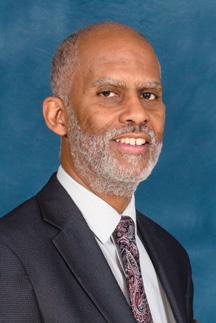
EAST
DR. TREVOR KINLOCK,
LaTasha Hewitt, Communication Director P.O. Box 266 Pine Forge, PA 19548 (610) 326-4610. www.myalleghenyeast.org
ALLEGHENY WEST CONFERENCE
MARVIN BROWN, PRESIDENT 1080 Kingsmill Pkwy. Columbus, OH 43229 (614) 252-5271. www.awconf.org
CENTRAL STATES CONFERENCE
ROGER BERNARD, PRESIDENT Cryston Josiah, Communications Director 3301 Parallel Parkway Kansas City, KS 66104 (913) 371-1071. www.central-states.org
LAKE REGION CONFERENCE
GARTH GABRIEL, PRESIDENT
JeNean Lendor, Communications Director
19860 South La Grange Road Chicago, IL 60619 (773) 846-2661. www.lakeregionsda.org
NORTHEASTERN CONFERENCE
DR. ELDEEN KING, PRESIDENT
Lavern Shurrup, Communications Director
115-50 Merrick Blvd. Jamaica, NY 11434 (718) 291-8006. www.northeastern.org
SOUTH ATLANTIC CONFERENCE
CALVIN B. PRESTON, PRESIDENT
James Lamb, Communications Director 3978 Memorial Drive Decatur, GA 30032 (404) 792-0535. www.southatlantic.org
SOUTH CENTRAL CONFERENCE
BENJAMIN JONES, PRESIDENT Roger Wade, Communications Director 715 Youngs Lane Nashville, TN 37207 (615) 226-6500. www.scc-adventist.org
SOUTHEASTERN CONFERENCE
DR. MICHAEL OWUSU, PRESIDENT Benia Dean, Communications Director 1701 Robie Avenue Mt. Dora, FL 32757 (352) 735-3142. www.secsda.org
SOUTHWEST REGION CONFERENCE
DR. CARLTON P. BYRD, PRESIDENT
Leslie Soupet, Communications Director 2215 Lanark Avenue Dallas, TX 75203 (214) 943-4491. www.southwestregion. adventistchurchconnect.org
REGIONAL DIRECTORS/COORDINATORS ROSTER
Virgil Childs, Vice President Regional Ministries Pacific Union Conference
2686 Townsgate Road Westlake Village, CA 91361 (805) 413-7100. www.puconline.org Cell: 909-225-6438
Jonathan Smith, Vice President African American Dept. Arizona Conference
Cell: 769-232-6664 ismith@azconference.org
James Scarborough, Coordinator African American Ministries Central California Conference (831) 262-3838 famar@sbcglobal. net Oneil Madden, Coordinator African American Dept. Nevada-Utah Conference Cell
DDuring my years as a conference administrator, I used to meet with everyone on our office staff once a year for a one-on-one session. Later, when I became the lead administrator, I met with everyone who worked in the building, for approximately one hour each. I thought it would send the wrong message if I only met with our staff to listen to them when I first came into the office and then never meet again.
Soon, I learned that I could get so busy that I could miss having any real dialog with the people with whom I worked for literally years. So, I had to be intentional about making time to listen to the members of our team. Every fall, I would send around a sign-up sheet so everyone could schedule a meeting with me for approximately an hour. It was my chance to hear from them how they felt about their jobs; whether they were feeling stressed, how their families were doing, and what they felt I needed to do more of, less of, or not at all, to help them succeed.
At the end of the session, it was my turn to speak. It was the “What I Would Like to Affirm—What I Need to Address” segment. It was my opportunity to affirm our staff and tell them the things that I appreciated about their work and the things that I thought they were doing well.
But then came the opposite end of the spectrum—the things that I believed needed to be addressed, such as the things that I thought they did not do quite as well.
I thought about that when I attended the International Pathfinder Camporee and, subsequently, when I visited a church that shall remain nameless.
Notwithstanding some of the nightmarish logistical challenges that the camporee had—the terrible, yea almost non-existent cell phone service; portable bathroom facilities that were insufficiently cleaned and serviced; tents that were placed in areas that flooded from the storms; cartoonishly inaccurate weather forecasts (the weather was out of everyone’s control but the forecasters could not have been more inaccurate if they tried to be inaccurate); tents that were seemingly directed to the other side of the state in relationship to the location of the evening services, and Wyoming is a very big state! I am sure that I have left out some things.But despite all of that, I believe that the majority of camporee attendees left Gillette with the same feeling I did: This was a special event. I would rather have been there than not to have been there.
I do not know of any denomination that sponsors an event that attracts 65,000 young people from around the world and church leaders from around North America who supported them. Other than the General Conference session that takes place every five years, this is probably the biggest event in the Seventh-day Adventist Church.
The Regional Conferences of this church spent literally millions of dollars on transporting equipment and feeding and equipping its young
people. I know the state conferences did the same. Hundreds of young people braved temperatures that dropped 30 to 40 degrees from the day prior to the start of the camporee to get baptized outdoors.
There was a very professional and inspiring play every night, along with stirring messages from one of our Regional Confer ence pastors, Elder Damien Chandler.

Most of all, I absolute- ly believe that there will be young people, and some adults, who will be saved in the kingdom of God as the result of attending the Gillette Camporee. That alone makes it a success and that alone makes it a special target of wrath from the Evil One.
So, when people begin looking to place blame for the things that went wrong in Gillette, (and make no mistake, some things went wrong), let’s begin by looking at Satan. Let’s stop being surprised that he did what he did. It’s who he is, and this is what he does.
Again, let’s be clear. There are some things that need to be fixed for the next camporee. But let’s not forget: a lot of things went right. These camporees are, generally speaking, something unique that our church does well, and such events are not found in many other churches.
Regarding another matter, I saw an example of something we need to address as a church, and not just talk about. We need to actually do something about this.
I have had a few Sabbaths off in the last several months.
On two of them, I went to my local church in Nashville, which I enjoyed. On two other Sabbaths, I went to some very different churches. One was a large, vibrant church, full of young people, with a dynamic, anointed speaker.
The second church was on life support. That particular Sabbath, a family visiting from out of town included their children. Other than that, the congregation of that church was all senior citizens.
These church members were very nice. A need arose from one of the visitors and it was quite impressive to witness this small group band together to unselfishly meet that need. However, it was also clear that these members had also accepted their nongrowth status and their non-dynamic worship. They seemed to be OK with the fact that their church situation was not OK. And that is never OK.
I suspect that this church is not alone in this category steadily dying while their members comfortably accept this march to irrelevance and death.
That is something that. as a church, we need to address. And I will address the matter in this column, in our next issue. t
Magazine.
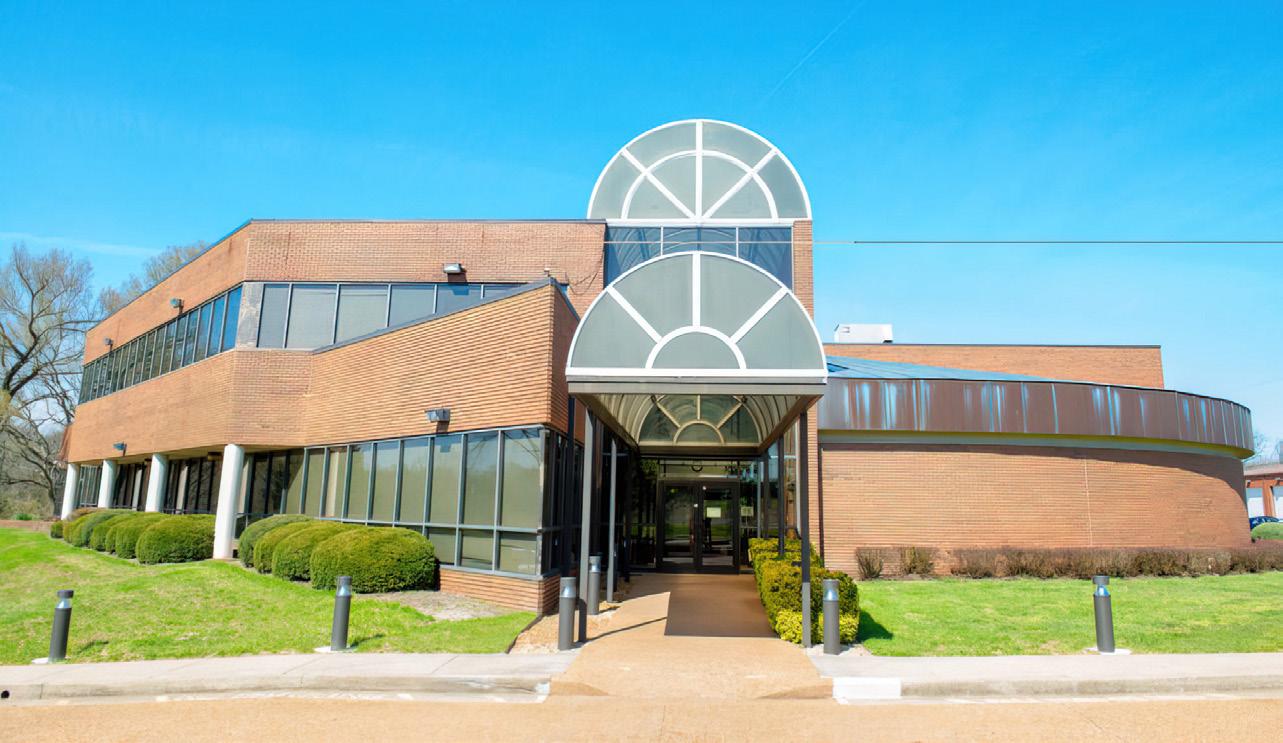
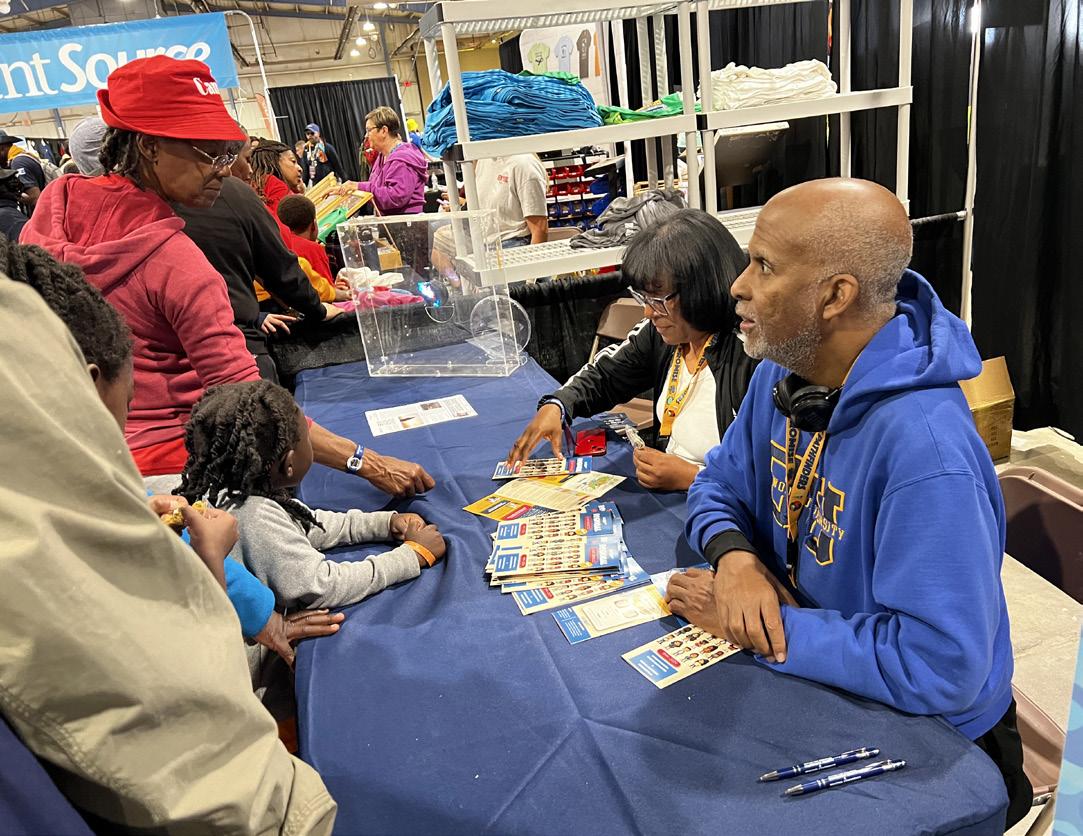
4
PUBLISHER’S COMMENTARY
Affirming and
Addressing - Part I
Every fall, I would send around a sign-up sheet so everyone could schedule a meeting with me for approximately an hour. It was my chance to hear from them. At the end of the session, it was my turn to speak— to affirm good work and to address any problems.
By Dana C. Edmond
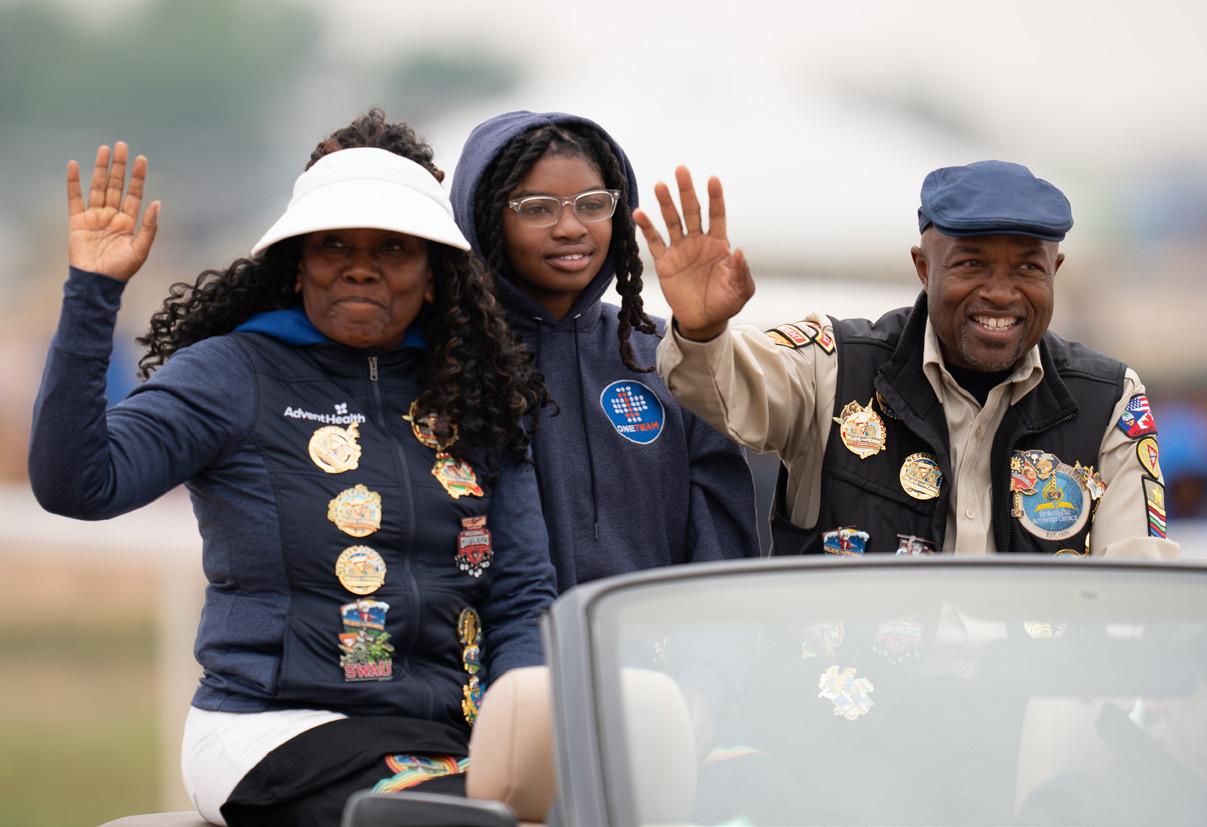
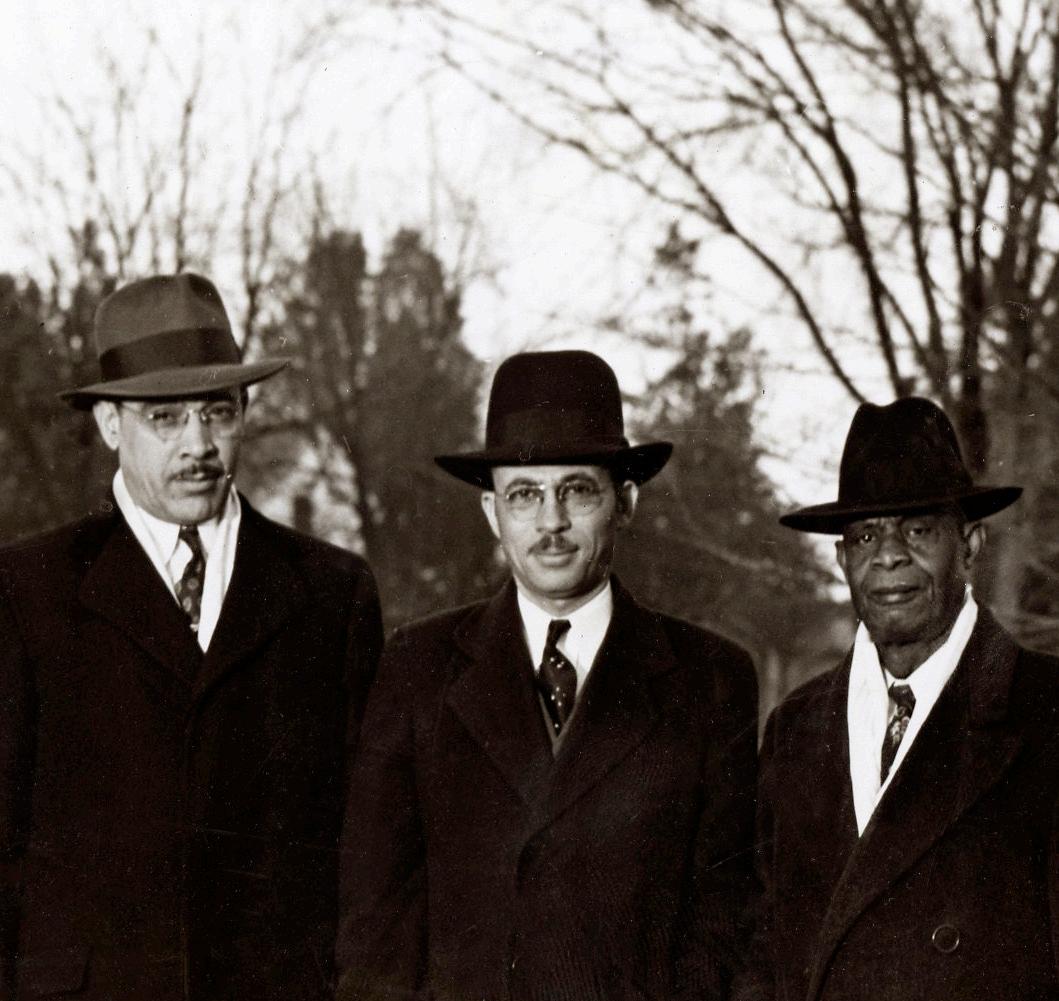

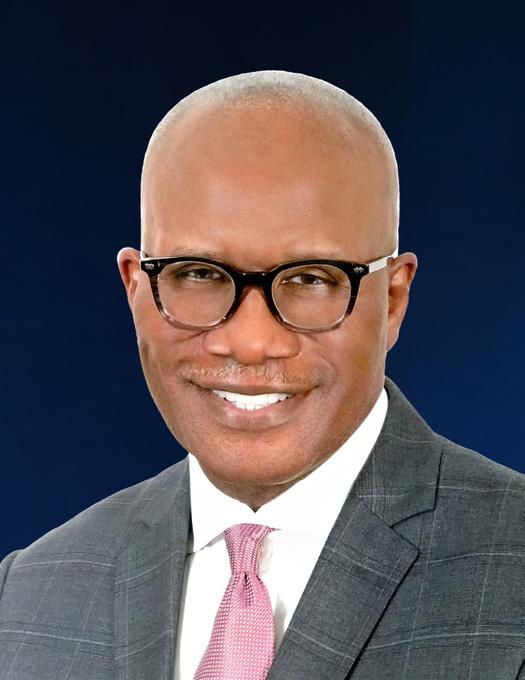
COVER PHOTOGRAPH: The United Truth Seekers Pathfinder Club from the United Central SDA Church in the Central States Conference are winners. They took First Place Awards in Advanced Marching, Free Style Marching and Basic Marching at the 2024 Pathfinder Camporee in Gillette, Wyoming.
8
COVER STORY BELIEVE The Promise, The Gillette Camporee
The 2024 International Pathfinder Camporee brought great experiences to its 65,000 participants, and great challenges.
By Gerson Pancorbo
12
COVER STORY
The Vote That Changed our Church - 80 Years of Regional Conferences
4 8 20 12 26 24 34 22
Born out of tragedy, this vote contained the little-remembered but historic wording that stated that these Colored Conferences were to be administered by “colored pastors and colored laymen.”
By Dana C. Edmond
16
COVER STORY
Echoes of the Past: Documenting the 80th Anniversary
We prepared to enter THE ROOM in Chicago, where, 80 years earlier, the General Conference convened to cast one of the most significant votes in history: the creation of Regional Conferences. Then we went to the First SDA Church
in Washington, D.C., to cover more history and air it on the First Sabbath program.
By Gerson Pancorbo
20
IN TRANSITION
Abraham Jules Elected President of The Atlantic Union Conference
On June 6, 2024, the Atlantic Union Conference Executive Committee elected Abraham J. Jules as the next president of the Atlantic Union Conference, effective immediately.
By Debra Banks Cuadro
22 IN TRANSITION
Northeastern Conference Elects New President, Dr. Eldeen King
Dr. Eldeen C. King was elected president of the Northeastern Conference on June 9, 2024. He succeeded Dr. Abraham Jules, who was elected president of the Atlantic Union.
By Dana C. Edmond
24 IN TRANSITION
Dr. Trevor Kinlock Named Next President, Allegheny East Conference
On June 23, 2024, the Allegheny East Conference Executive Committee elected Dr. Trevor Kinlock to serve as the new president of Allegheny East, effective immediately.
By LaTasha Hewitt
26
COLUMBIA UNION NEWS
Meet the Columbia Union Conference Administrators
President Marcellus T. Robinson, Executive Secretary Celeste Blyden and Treasurer Emmanuel Asiedu share their unique journeys of service. Text from the Columbia Union Conference Website
28 IN TRANSITION
Christon Arthur Selected as La Sierra’s Next President
The La Sierra University Board of Trustees on May 9, 2024, unanimously approved the appointment of Dr. Christon Arthur to serve as the university’s 6th president. He arrives from Andrews University in Michigan where he has been provost since 2016. Text from the La Sierra University Website
30
REGIONAL NEWS
Lone Star Camp Enjoys Expansion
The Southwest Region Conference has just completed construction at their Lone Star Camp that includes a new 10room mini lodge; a 400-seat, state-of-the-art chapel and the Kids’ Kingdom, a one-stop play and activity area designed to fill children with delight.
By Robert Allen
Coverage Coordinated by Leslie Soupet
34, 38
IN MEMORIAM
Dr. Victoria Joiner
Rep. Sheila Jackson Lee
We honor these two great leaders who dedicated their lives to God, His service and to country. We thank the Joiner and Jackson Lee families.
42
KNOW THESE REGIONAL TERRITORIES
The Bermuda Conference and the North Pacific Union
The Bermuda Conference and the North Pacific Union both have strong Regional constituencies. Read to learn the valuable history and current
relevance of both territories.
Data Compiled By Dana C. Edmond
46
INTERNSHIPS
Equipping the Next Generation: ORCM’s 2024 Interns Gain Insights
This summer, the Office for Regional Conference Ministries (ORCM) sponsored five paid internships during July and August 2024, providing a unique opportunity for young leaders to gain hands-on experience in various departments across different conferences.
Text and Photography By Gerson Pancorbo
50
INNOVATIONS
A Different Kind of Evangelism
The Capitol Hill SDA Church in Washington, D.C., led by Senior Pastor Emile Peeler, has literally opened new doors to offer meaningful, essential service to their community.
By Dana C. Edmond
52
SCHOLARLY WORK
Overcoming the Digital Divide
An Interview with Dr. Lisa Hinson
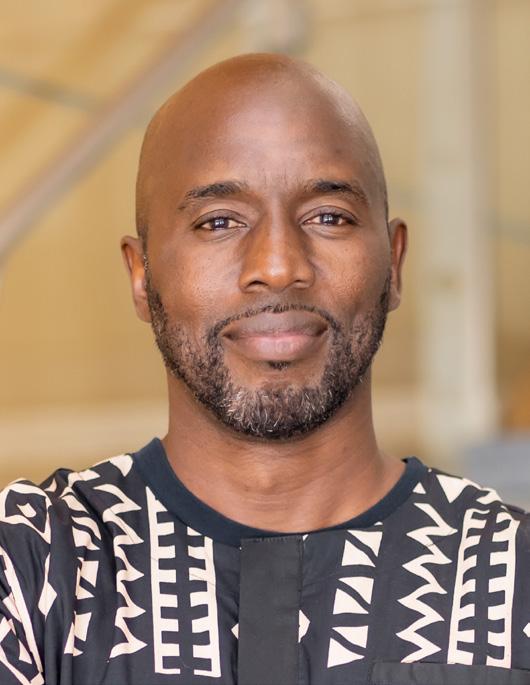
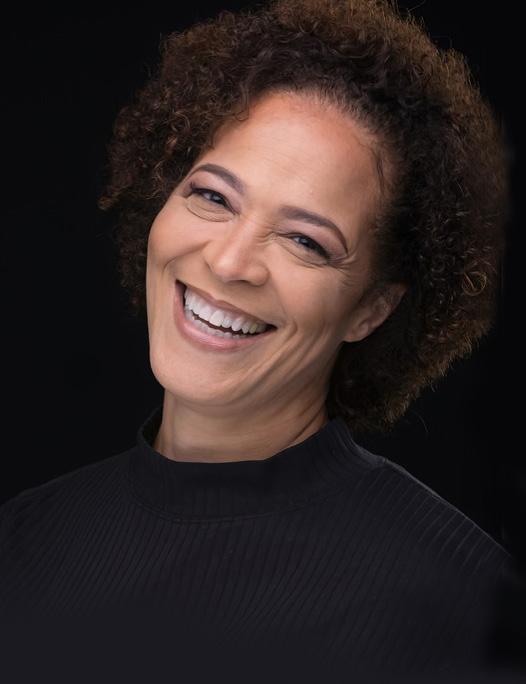
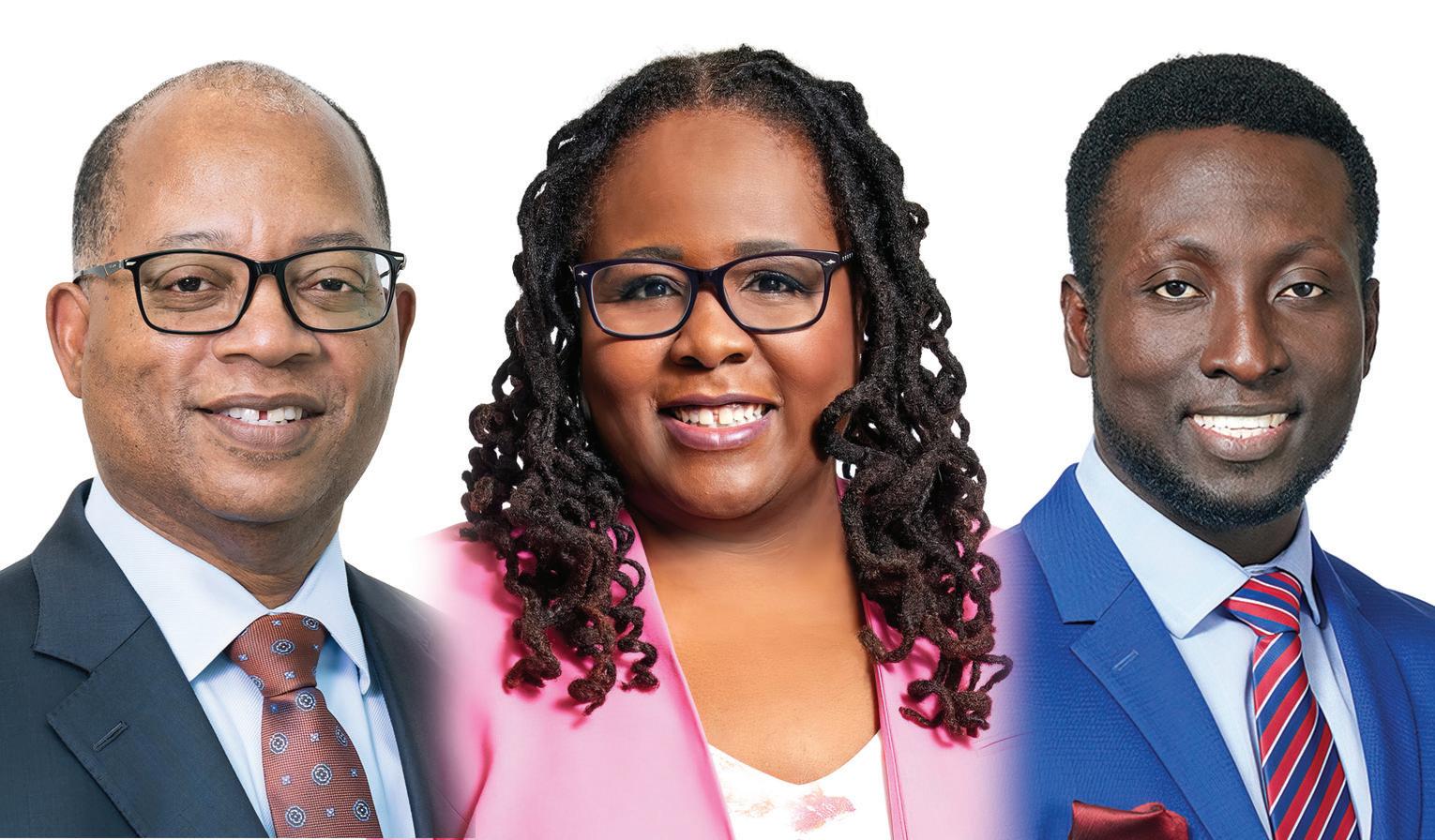
The interviews for this dissertation included experts who had an innovative spirit necessary to overcome the “digital divide” that would otherwise limit or prohibit their access to the technological components needed for their operations.
Conducted By Kyna Hinson
54
RCRP SERIES - HEALTH AND WELLNESS
Interview with Lifestyle Medicine and Public Health Physician
Dr. Zeno L. CharlesMarcel Dr. Marcel shares valuable
insights on how retirees and pre-retirees can maintain their health, prevent chronic diseases, and lead fulfilling lives.
Conducted By Dr. Delbert W. Baker
60
HOPE SERIES
Blest Be The Tie That Binds
Regional leaders continued to strengthen ties with Adventist leaders in South Africa and in the Inter-America Division during 2024.
By Dana C. Edmond




The first International Camporee took place in the North American Division in 1985. Since then, this has grown to become a life-changing event for more than 65,000 participants, including 33,000 Pathfinders, from more than 100 countries around the world and with a strong representation from our nine regional conferences. Camporees are held every five years, and the one for 2024 in Gillette, Wyoming, convened as scheduled.
The camporee offers excellent, valuable experience. It offers participants an opportunity to step outside their immediate communities and to engage with the global Adventist family. This experience is crucial, particularly for African American Pathfinders who may not frequently travel to areas like Gillette, Wyoming. The camporee allows these young people to see themselves as part of something much larger — a worldwide movement with shared values and a common mission centered on the teachings of Jesus Christ.
The leadership of the Black Adventist Youth Directors Association (BAYDA) highlighted the impact of the camporee on their Pathfinders. Dr. Paula Olivier, the first female chair of BAYDA and the current Youth and Young Adult Ministries Director for the Northeastern Conference, noted that the camporee offers a platform for Pathfinders to “self-actualize, learn new skills, and create special memories.” For many young people, the camporee is not only a spiritual milestone but also a crucial step in their journey of faith, helping them to solidify their relationship with Jesus and develop resilience in the face of challenges.
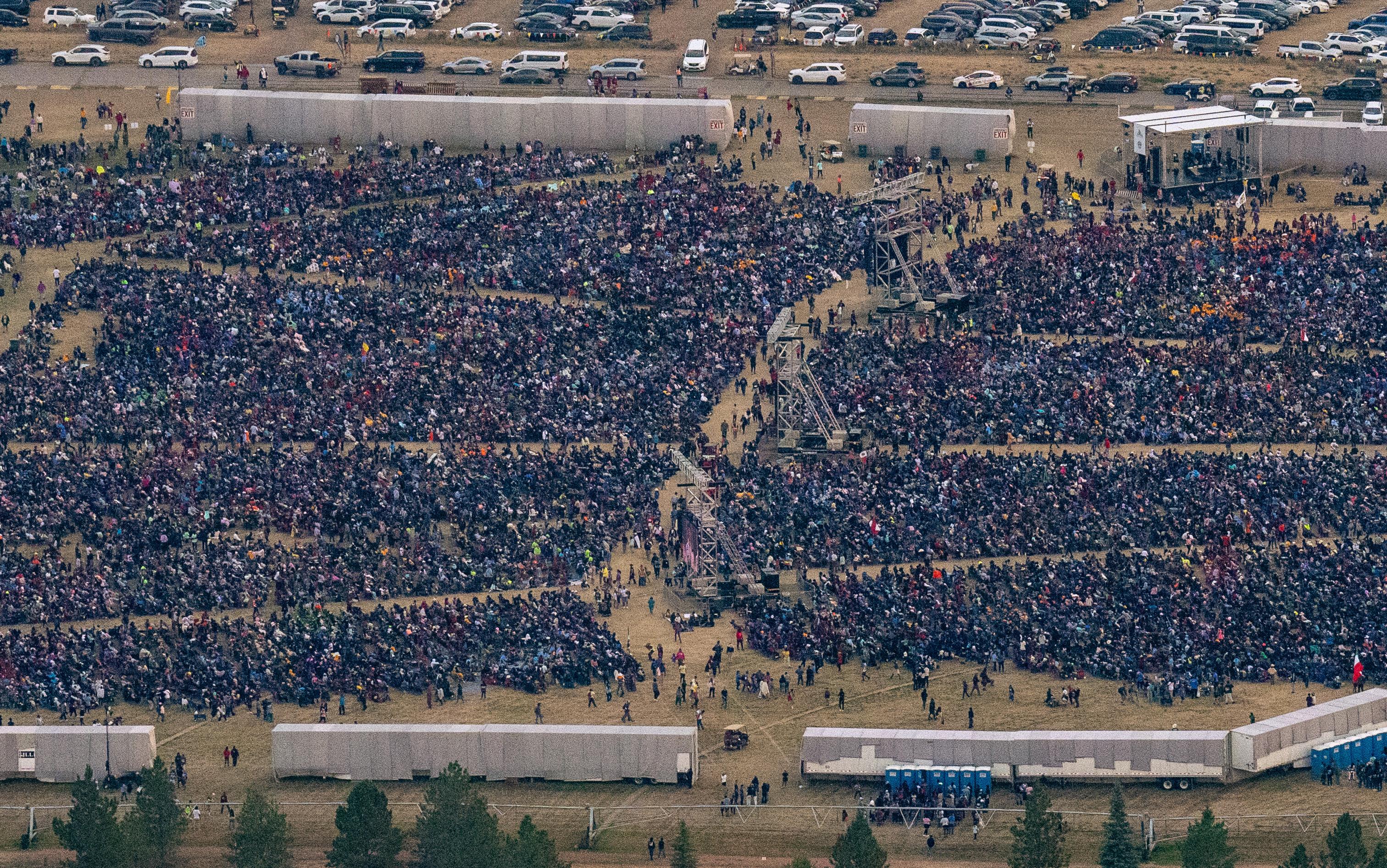
By GERSON PANCORBO
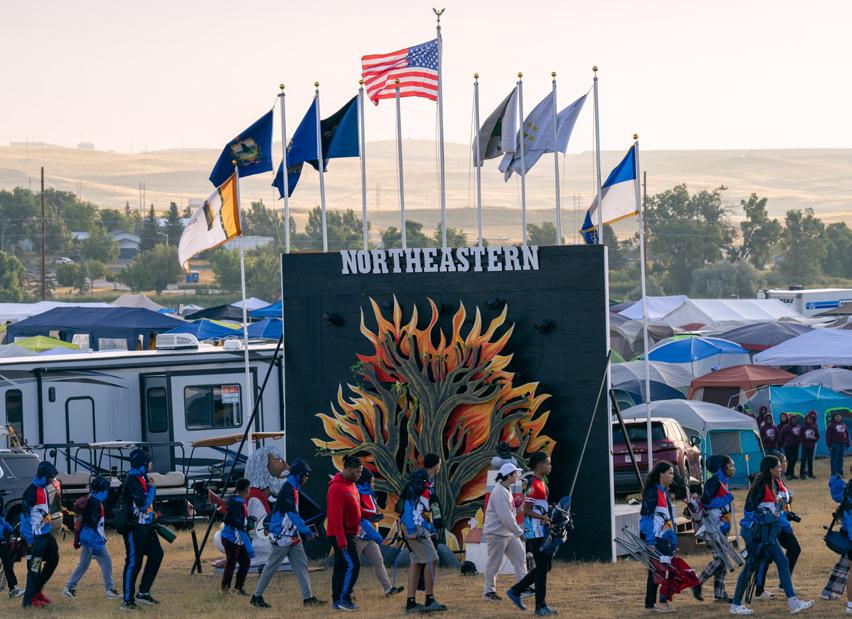



Throughout each day at the camporee, various on-site activities offered enriching experiences for Pathfinders. They worked to earn new honors, explored new adventures, sharpened their skills, and checked out special interest areas. There was something for everyone. Pathfinders could also participate in various offsite activities, such as choosing to play sports at the Energy Capital Sports Complex, swimming at the Campbell County Recreation Center, and exploring the Rockpile Museum. Xylyn, a Metropolitan Eagles Pathfinder, and Kyle of the Fondren Christ Crusaders, both from Southwest Region Conference, won medals in the swimming competition.
Additionally, paid activities such as pottery painting, digital photography, and guided tours of the Eagle Butte Coal Mine and Durham Bison Ranch provided more learning experienc-
The camporee featured a variety of special events, including daily parades, flag ceremonies, and exciting displays like the MX Power Team Motorcycle Demo and Vintage Car Display. Participants also had the chance to set world records, such as the record for the most backpacks simultaneously packed in under five minutes, and to compete in the Top Club Chef Competition and 5K Race events.
Camporee attendees participated in 45 community service projects across Gillette, benefiting 19 organizations, despite
weather-related challenges. Their efforts, from cleaning up parks to playing games with seniors, left a positive impact on the community, exemplifying the Pathfinder law to “go on God’s errands.”
Participants joined one of the most thrilling events at the camporee— showcasing their Drill Team or Drum Corps skills and impressing the crowds with their precision. Competitions wereheld throughout the week, with teams competing in basic, advanced, and free-style categories, and Drum Corps. Ephesus Alamo City Pathfinder made Southwest Region Conference proud by winning First Place in the Drill Competition at the International Camporee and the Allegheny West Conference Drill Team won Third Place in the basic drill competition.
Challenges and Adaptation
The opening night-time program was first moved forward half an hour, then canceled outright. As winds picked up and rain rolled in, the camporee app and radio announcements urged campers to “find hard shelter.” At about 6 p.m., campers flooded indoors as Cam-Plex administration opened the doors of buildings. Sheltering in place in the Heritage Center, Pathfinders quickly filled the auditorium, hallways, and the exhibitor’s building.
The storm brought with it cold temperatures, high winds, and heavy rain that made it difficult for many Pathfinders to pitch their tents and settle into the campsite. Pastor Stewart, Youth Director of the South
Central Conference described the experience as “controlled chaos,” with vehicles sliding in the muddy parking lots and the ground proving too hard for tent stakes. These conditions were exacerbated by the remote location of the Southern Union’s campsite, which was far from central facilities and announcements.
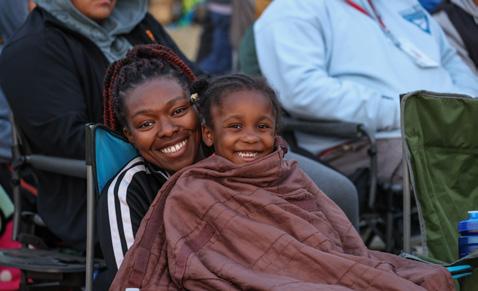
ficulties created stress and anxiety for many.
Pastor Syeh, from the Southeastern Conference, noted the importance of providing emotional and spiritual support to the Pathfinders. Leaders had to step in as first responders, offering comfort and encouragement to the young people under their care.
The placement of portable restrooms and showers was another significant challenge. In some cases, the well water supply was located uphill from the restrooms, leading to contamination and creating unsanitary conditions in the campsites. Pastor Franklin, recently appointed Youth Director of the Allegheny West Conference, recounted how his team had to address issues with restroom water runoff, which threatened to flood their campsite. These logistical challenges were compounded by poor communication, as cell phone service was spotty at best, leaving many Pathfinders and their leaders unable to contact their families or receive updates.
The unexpected storms also posed mental health challenges for the Pathfinders. The combination of being far from home, dealing with inclement weather, and navigating logistical dif-
Local institutions in the community quickly offered their help — food, water, and supplies. Several hundred Pathfinders accepted offers to sleep in local churches, including both of Gillette’s Latter Day Saints congregations.
“After the storm, we assessed our campsite. A few tents were down, and many items were drenched. But through teamwork, we managed to clean up and dry out. Our pastors and Allegheny East Conference went above and beyond, ensuring everyone had a warm, dry place to sleep. They supplied us with blankets, sleeping bags, air mattresses, pillows, and sheets” (Metropol itan Church in Maryland from Allegheny East Conference).
A double rainbow appeared over Cam-Plex after the storm. The all-clear was given, and Pathfinders returned to their campsites.
Faced with adverse conditions, attendees found ways to make the best of the situation and continue enjoying the camporee. Pastor Stewart praised the “no-quit” attitude of the Pathfinders, who were determined to make the most of their time in Gillette, even if it meant wearing wet uniforms or sleeping in blankets carried from their tents.
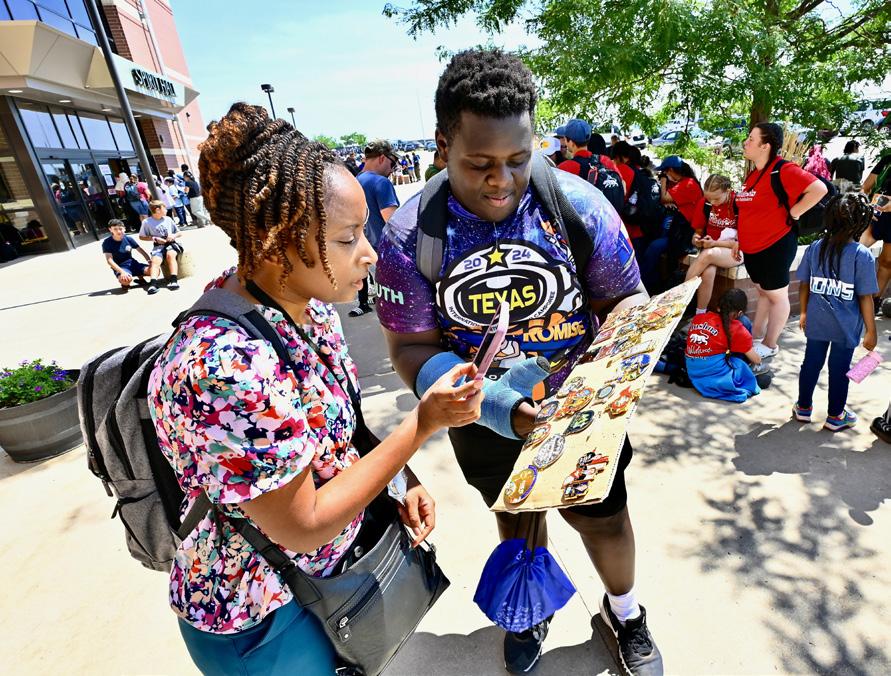

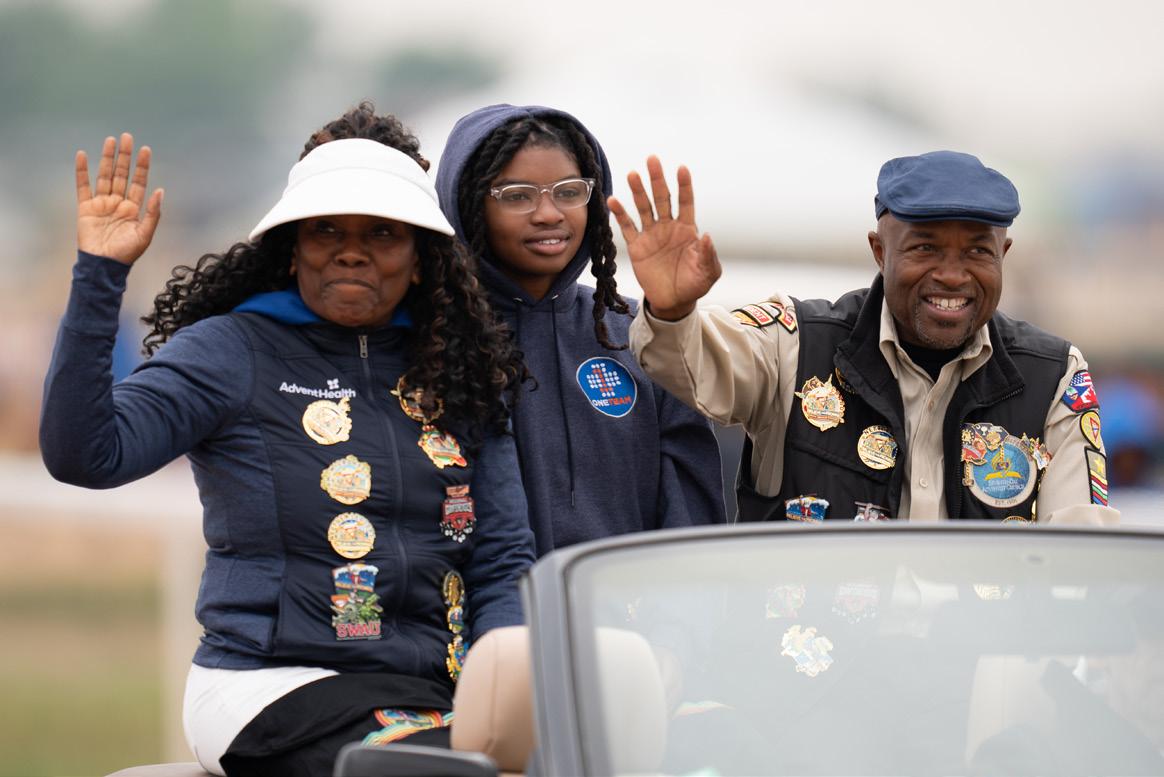
Dr. Olivier high-
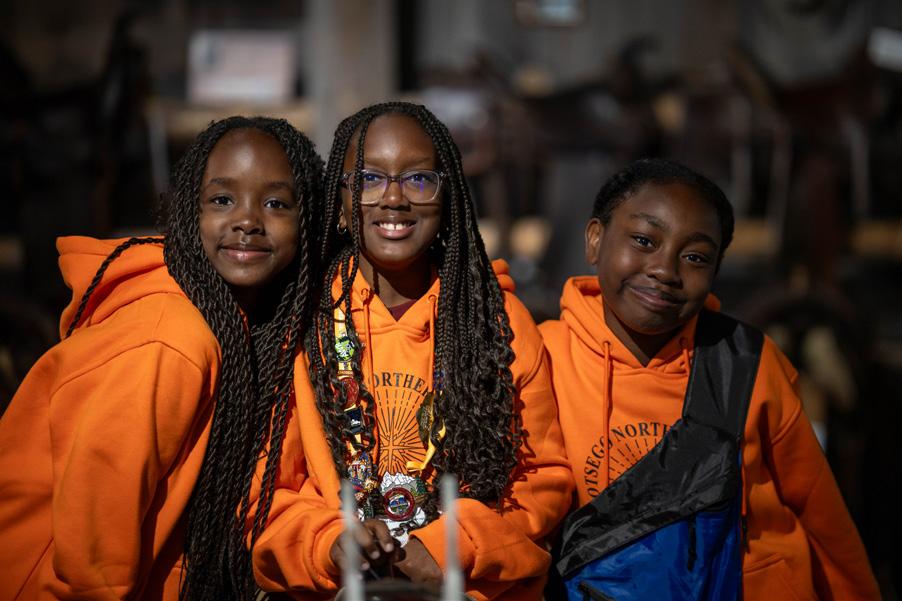
lighted the spirit of cooperation and unity that emerged among the Pathfinders and their leaders. When one club lost their tents, others stepped in to share their equipment and resources.
Prayer was made a cornerstone at the camporee, with opportunities like a dedicated Prayer Tent, anointing services, and evening international prayer sessions, all aimed at deepening spiritual connections and making prayer a focal point for the Pathfinders’ experiences.
ORCM and RCRP had a booth in the exhibits area, offering special 80th Anniversary pins and stickers. The four officers were there helping Pathfinders better understand regional conferences through an informative flyer that explained what “regional” means, what a regional conference is, how many exist, and what R.C.R.P. stands for. Additionally, on Thursday afternoon, BAYDA hosted its now-famous Ice Cream Social, giving away delicious treats to attendees.
Believe the Promise: The 2024 Theme
A highlight of every camporee, the evening programs on the main stage were life changing. Participants enjoyed great
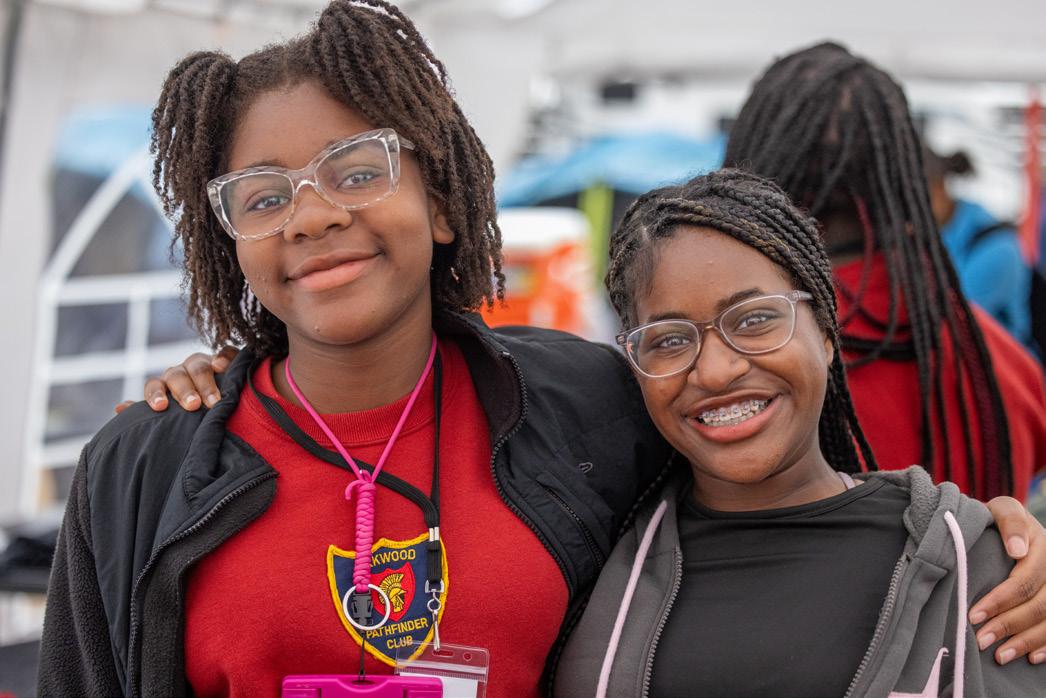
music from fellow Pathfinders, sang along with the theme song, and watched a biblical story unfold on stage. Pastor Damian Chandler, originally from Toronto and raised in Barbados, served as the speaker for the 2024 International Camporee. This year’s theme, “Believe the Promise,” focused on the Israelites’ struggle to trust God’s promise of freedom during their oppression in Egypt, as told in Exodus 6:6-8. Despite their overwhelming hardships, God assured them of His deliverance and the fulfillment of His plan to lead them to the Promised Land. The theme also reminded Pathfinders to believe in God’s promises for their own lives, trusting that He has a perfect plan and will perform incredible miracles for those who have faith. Just as God called Israel to prepare for His mighty works, Pathfinders were encouraged to believe in Jesus and witness the amazing things He will do through them.
Out of an abundance of caution, the camporee organizers made the tough decision to conclude the program on Friday night, a day early, due to the forecast of more severe storms on Saturday. It was a wise decision, emphasizing that the safety of the Pathfinders was paramount.
As the 2024 International Pathfinder Camporee in Gillette, Wyoming ended, despite the logistical difficulties and unexpected weather, the event had been
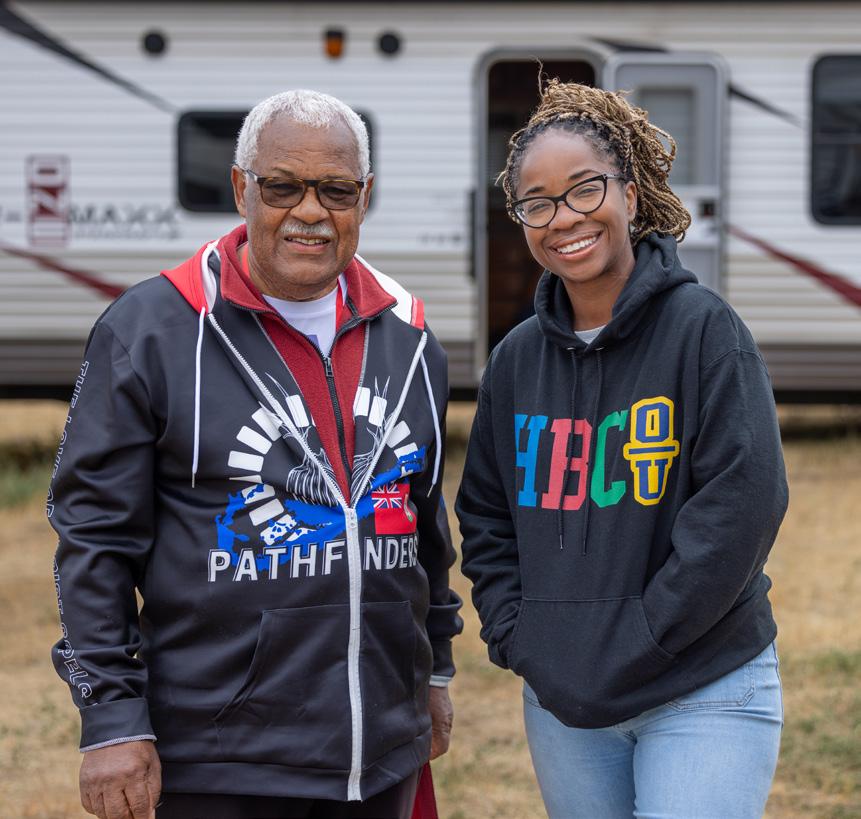
a success. The challenges faced were outweighed by the positive experiences, which will have a lasting impact on the Pathfinders and their leaders. The camporee brought together a diverse group of young people from around the world, promoting a sense of unity, shared purpose, and faith. However, the event also highlighted important lessons to be learned, particularly in terms of logistical planning and communication. We are looking forward to the 2029 Camporee in Gillette, where the theme “Stand Strong” will bring the story of Elijah to life.
The “Believe the Promise” Camporee was more than just a special event. In the words of the Apostle Paul, “I can do all things through Christ who strengthens me” (Philippians 4:13, NKJV). This verse encapsulates the spirit of the Pathfinders at the camporee — young people who, despite the challenges they faced, were strengthened by their faith and supported by their community. As they return to their homes, these Pathfinders carry with them the lessons learned, the friendships made, and the deepened commitment to follow Jesus wherever He leads. t

is the Communications Director for the Office for Regional Conference Ministries and the Regional Conference Retirement Plan. He conducted live coverage in Gillette, Wyoming, to complete this report.
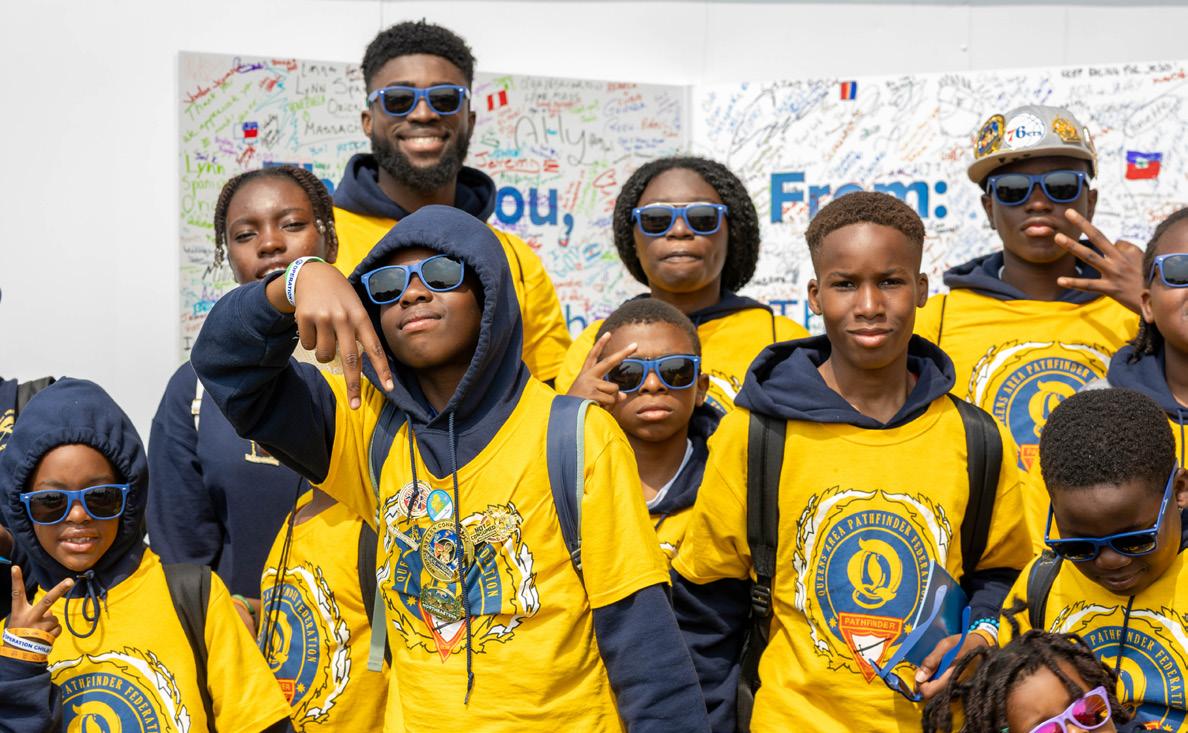
TThis year marks the 80th anniversary of the vote of the General Conference that changed the trajectory of our church; the vote at Spring Council, at what was then called the Stephens Hotel, to allow Unions to form what was then called “Colored Conferences.”
The vote contained the little-remembered but historic wording that stated that these Colored Conferences were to be administered by “colored pastors and colored laymen.”
That was important and historic because up until that time people of color were not given the opportunity of leading any church entities, including the few entities that logically were their own. Only recently had the first black president been appointed at Oakwood College after years of leadership by white administrators. Under the white administrators, segregation was practiced — even at this black school. During

By DANA C. EDMOND
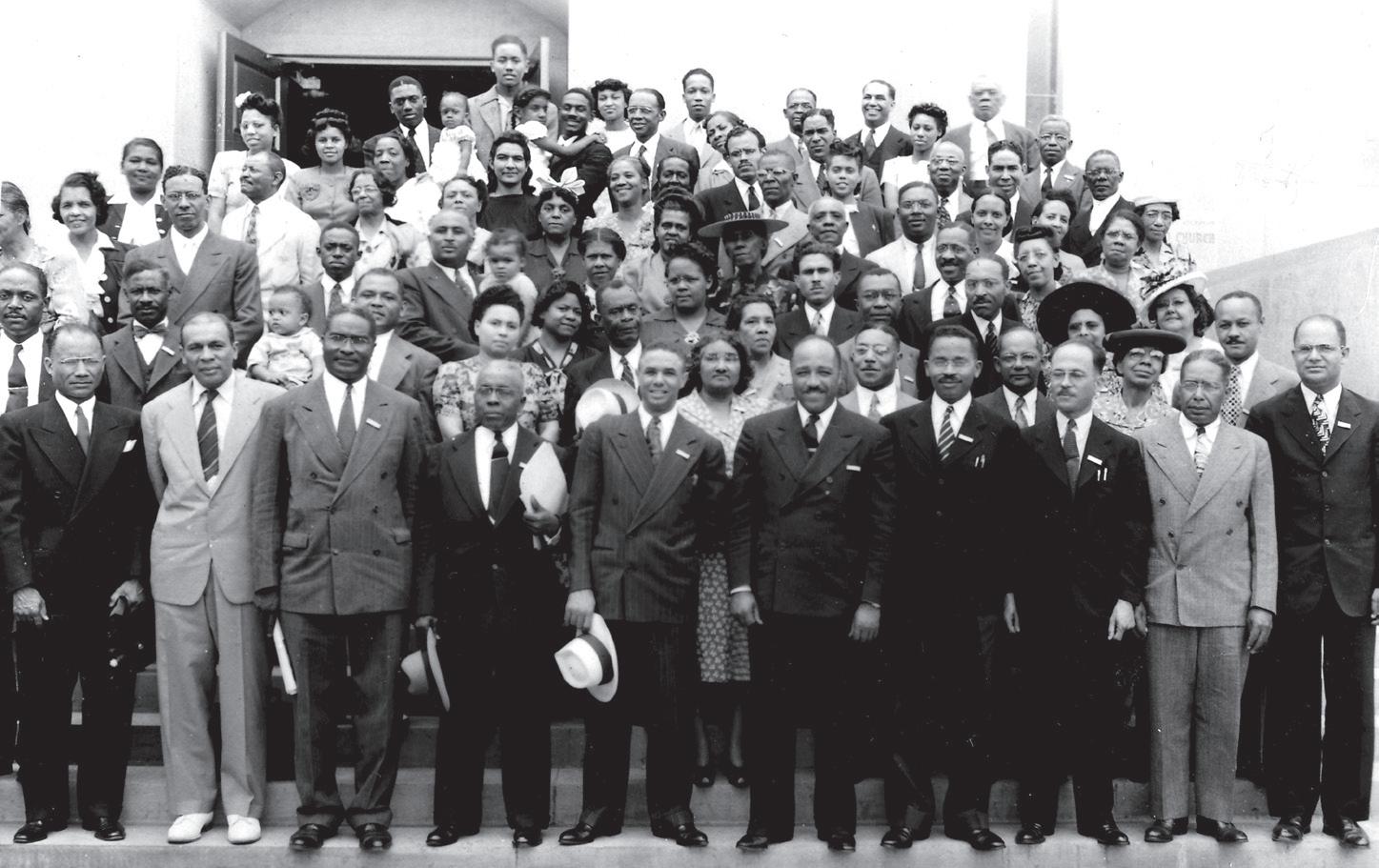
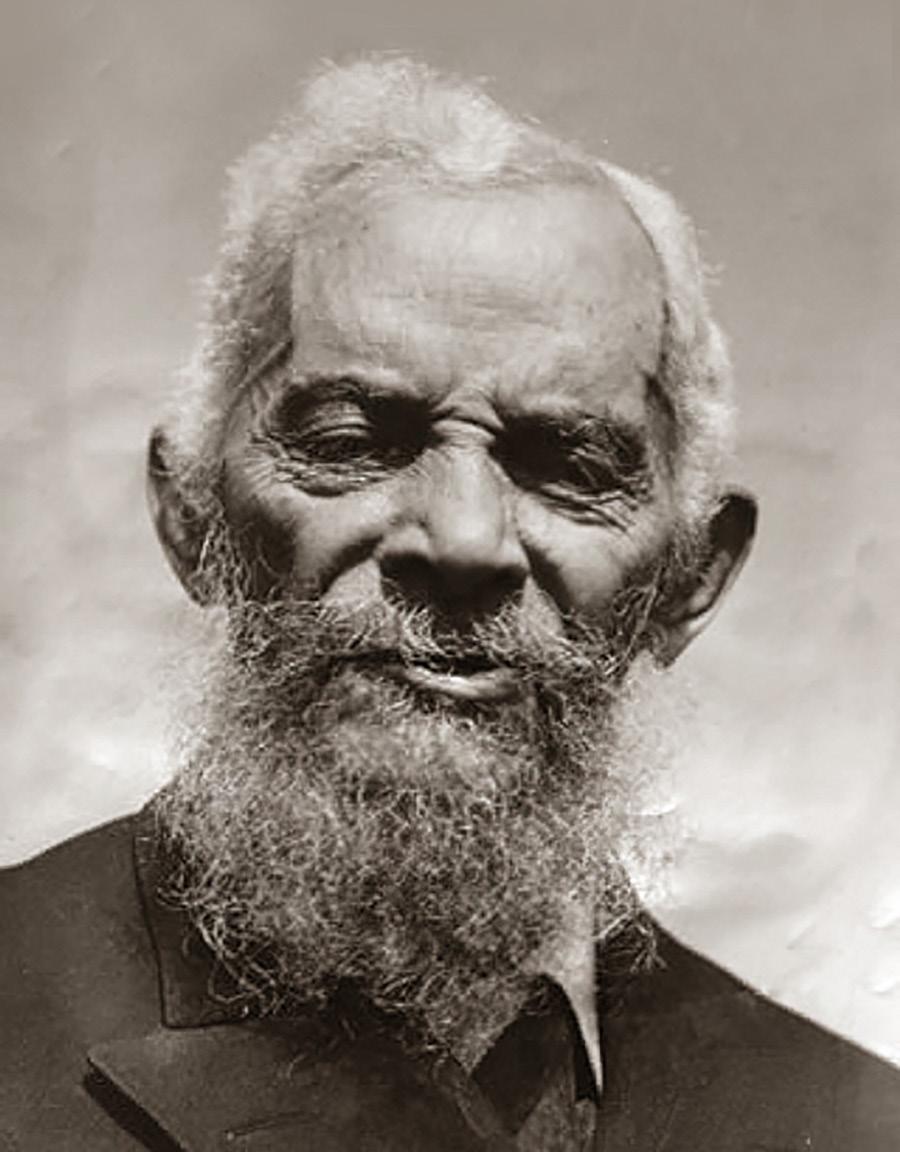
worship services, white staff members sat on one side of the church while the black students sat on the other. Even during the sacred service of communion, the societal norms for that time were strictly observed. There was no integrated foot washing. It took a student-led strike (which led to the expulsion of those Oakwood student leaders of the strike), for the church hierarchy to permit a black person to lead Oakwood College.
In those days, in the absence of Regional Conferences, the work among African-American Adventists was conducted by the General Conference Negro Department. Ironically, several directors of this new Negro Department were not negroes. They were white.
The entire stipulation that the “Colored Conferences” were to be ad ministered by “colored pastors and colored laypersons” was historic. It was the culmination of a 50-year discussion in our church (though black pastors were reportedly told by some of the leaders in the church hierarchy at one time “not to bring the subject of having Colored Conferences up again”) that began with the first black pas tor to be ordained, Elder Charles M. Kinny.
When Elder Kinny was ordained in Nashville in the late 19th cen tury, there was a lot of drama surrounding his family being seated with the white attendees of the service. He was undoubtedly the first to conclude that since he was committed to remaining a Seventh-day Adventist in a church that was committed to remaining segregated, that the best thing for people of color would be to have Colored Conferences —what we know today as “Regional Conferences.”
Black Adventists in those days faced a unique conundrum: many of the entities of the Seventh-day Adventist church—its schools, hospitals, and other institutions—were closed to black Seventhday Adventists. Furthermore, the church was unwilling to provide its black constituents with black schools, hospitals and other institutions of their own.
While the church wouldn’t say it, when black constituents said in essence, “Let us in your institutions or give us our own,” the church in essence said, “We’re not going to do either.” However, a woman named Lucy Byard would change everything.
In 1943, Lucy Byard, a Seventh-day Adventist, became very ill and wished to be treated in the Washington Sanitarium, an Ad-



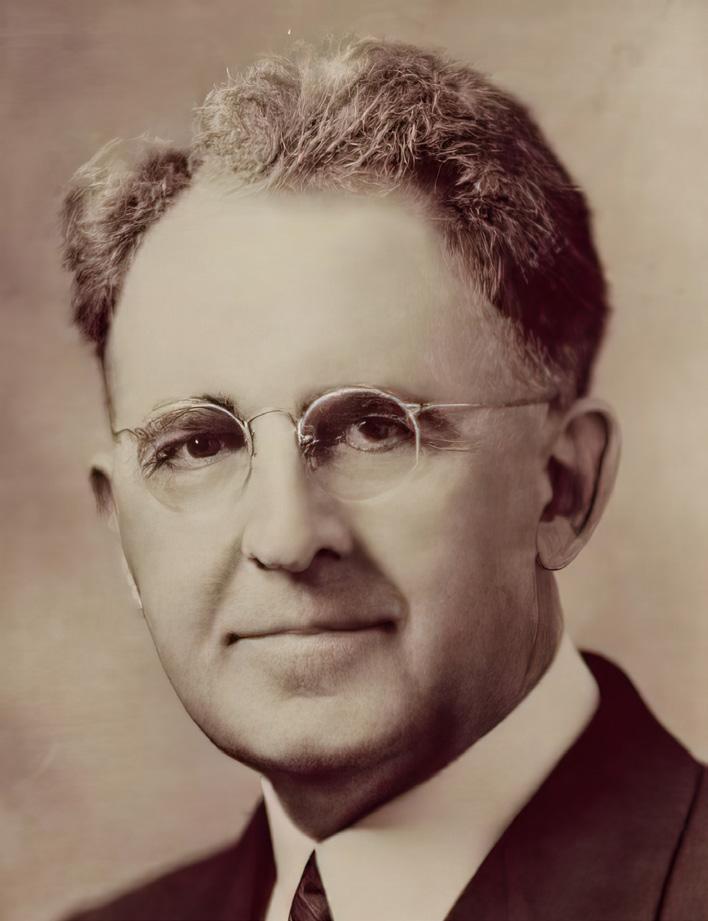
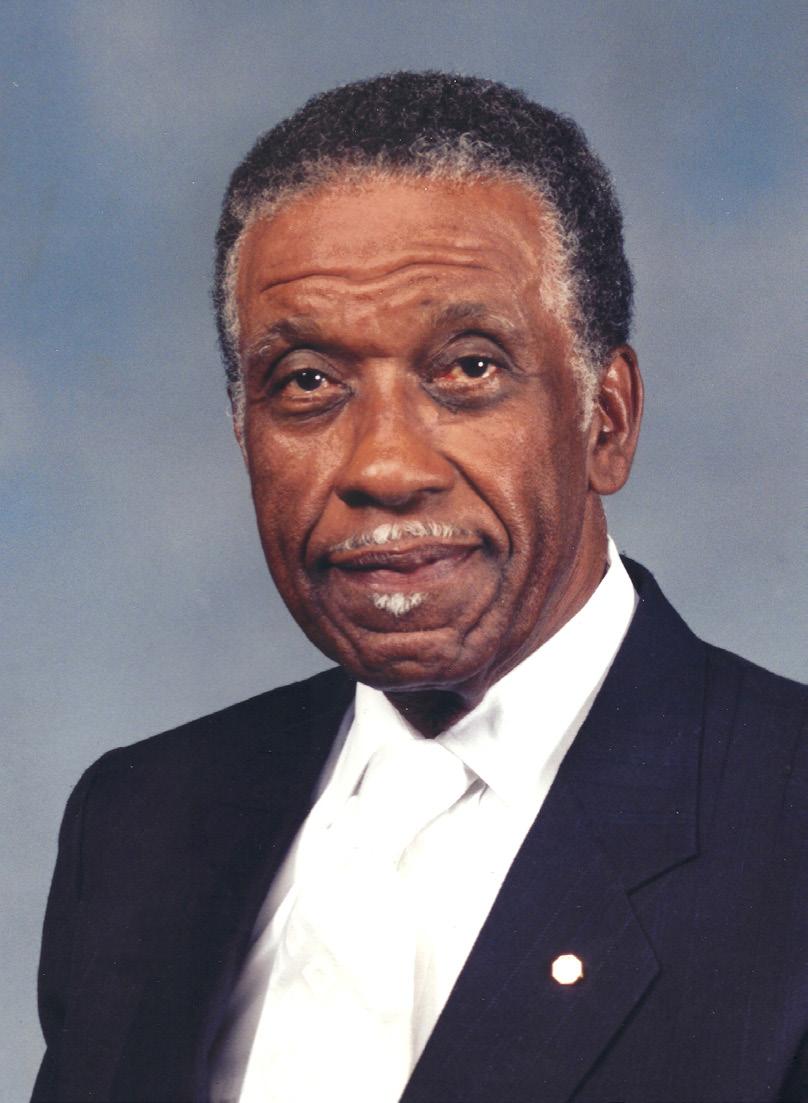
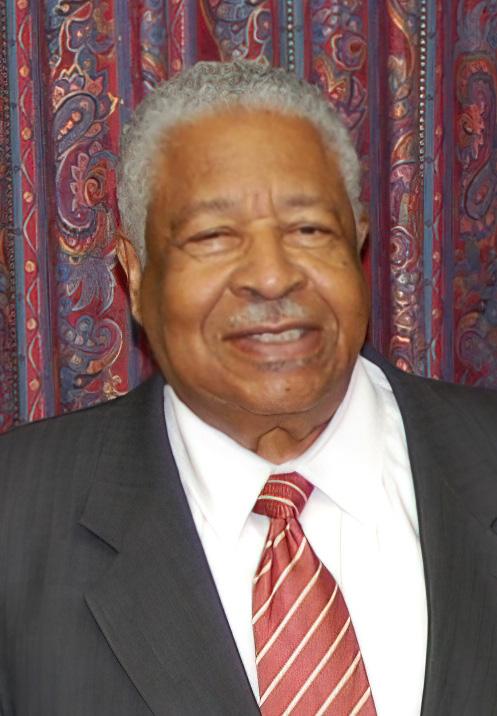
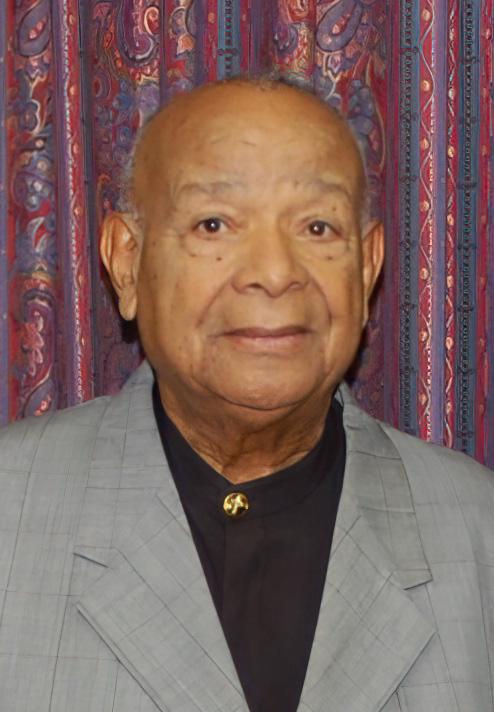
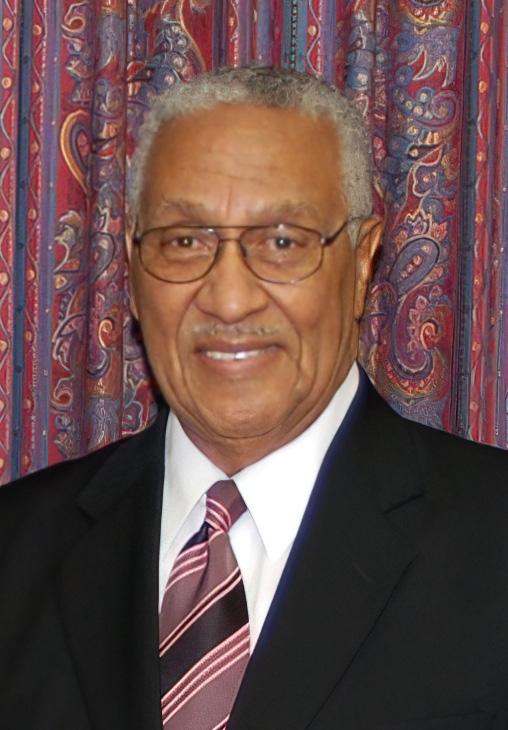
ventist hospital in Maryland. She contacted the hospital and was admitted before traveling to the hospital from her home in New York City. But there was a problem: Lucy Byard was a black Seventh-day Adventist. According to various accounts, she was a very fair-skinned black person, who could pass for white. However, the Washington Sanitarium did not generally admit black patients of any denomination.
There are multiple versions of what happened next: One version is that Washington Sanitarium officials admitted Lucy Byard, thinking her fair skin was white skin. But when they discovered she was black, they kicked her out of their hospital. Another version is that they knew in advance she was not white, but decided to make an
exception this time, then changed their minds.
Whatever the version, what happened next is indisputable: a sick (and dying) Lucy Byard was sent from the Washington Sanitarium to the black hospital, the Washington Freedman’s Hospital (which is now the Howard University Hospital). She died.
The abbreviated version of what
happened next is that the uproar over the “de-admitting” of an Adventist by an Adventist hospital (which honestly is one of the low points in the history of God’s church) led to the formation of a committee of exceptionally well-educated, talented and determined laypersons in the Washington, D.C. area: The Committee for the Advancemnt of the World-wide Work Among Colored Seventh-day Adventists.
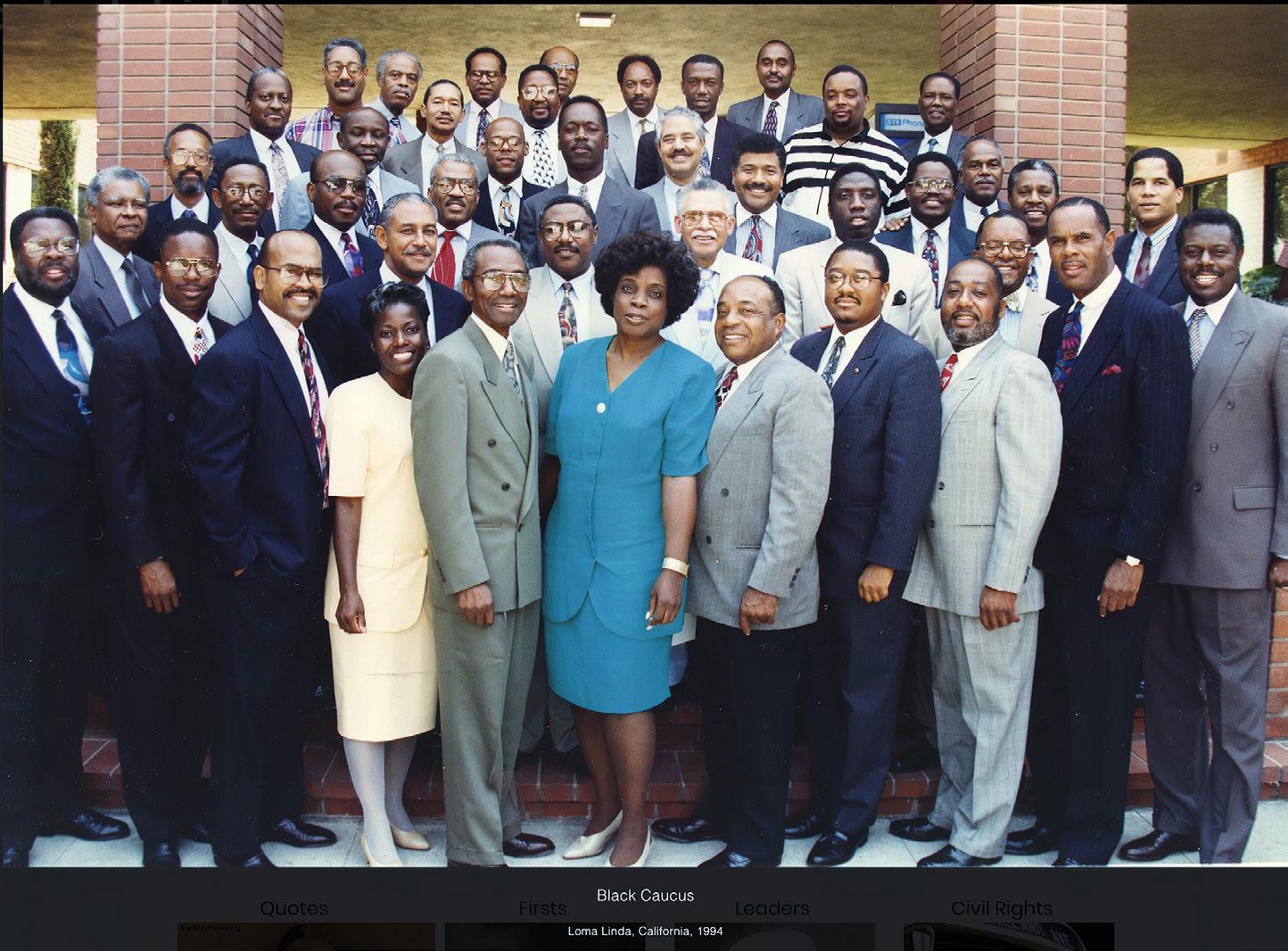
Their meetings with the General Conference President, Elder J.L.. McElhany, led to his vital support for the formation of Regional Conferences, beginning with the Lake Region Conference.
From those beginnings, look at what God has done over the past 80 years of Regional Conferences: 1. The total Regional Confer-
ence tithe was approximately $230 million in 2023.
If Regional Conferences stood alone as a world division (such as the North American Division, the South American Division or the Inter-American Division), our tithe would be the fourth largest tithe of the 13 world divisions of our church.
2. If Regional Conferences were a Union in the North American Division, we would have the largest membership in the North American Division and the second largest in tithe.
That would make a union made up of Regional Conferences the second largest union in tithe in the Seventh-day Adventist Church.
3. Regional Conferences have produced and/or nurtured some of the most iconic leaders in the history of the church.
In the late 1940s and 1950s, would men like Elder C.E. Dudley; Elder C.E. Bradford; Elder E.E. Cleveland; and Elder C.D. Brooks have had the opportunity of conducting regional, national and global ministry in our church if it were not for Regional Conferences?
4. Regional Conferences have
been used by God to spread the gospel of Jesus Christ and have added men, women, youth, boys and girls to God’s church. They have grown at a rate that is substantially above other entities in North America over the past 80 years.
While reaching people of color is not, and cannot be, our only mission, the fact is that hundreds of thousands of people of color have heard and accepted the Three Angels Messages because of Regional Conferences. If Regional Conferences had not reached those people, who would have?
5. The Regional Conferences have a solid and stable Retirement Plan that is employer-funded, allowing our workers to retire with dignity. That could not happen without Regional Conferences.
6. The Regional Conferences recently collaborated to build a $9 million, two-story, 32,000 square foot headquarters, that houses its major ministries. That building opened two years ago, in October 2022, debt free.
7. Regional Conferences continue to be some of the largest sources of revenue for Oakwood Universi-
ty, contributing millions of dollars each year to its operation. All of these things started with a vote 80 years ago. That vote changed this church.
Ellen White calls man’s inhumanity towards man, his greatest sin. The scourge and inhumanity of racism has been an unfortunate part of humanity for a very long time. Sadly, it has been a part of God’s church as well. But the presence of sin in God’s church does not make it any less God’s church. And if the people were required to accept God’s church only if that church had no sin, there would be no church.
What God has done these past 80 years is to prove once again that He specializes in taking bad situations and working things out for our good and for His glory.
And He is still doing that today. t
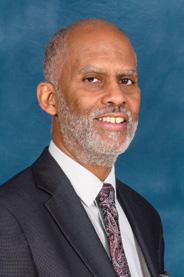
Dana C. Edmond, Director of the Office for Regional Conference Ministry, (ORCM), and publisher of Regional Voice magazine , produced this original report.
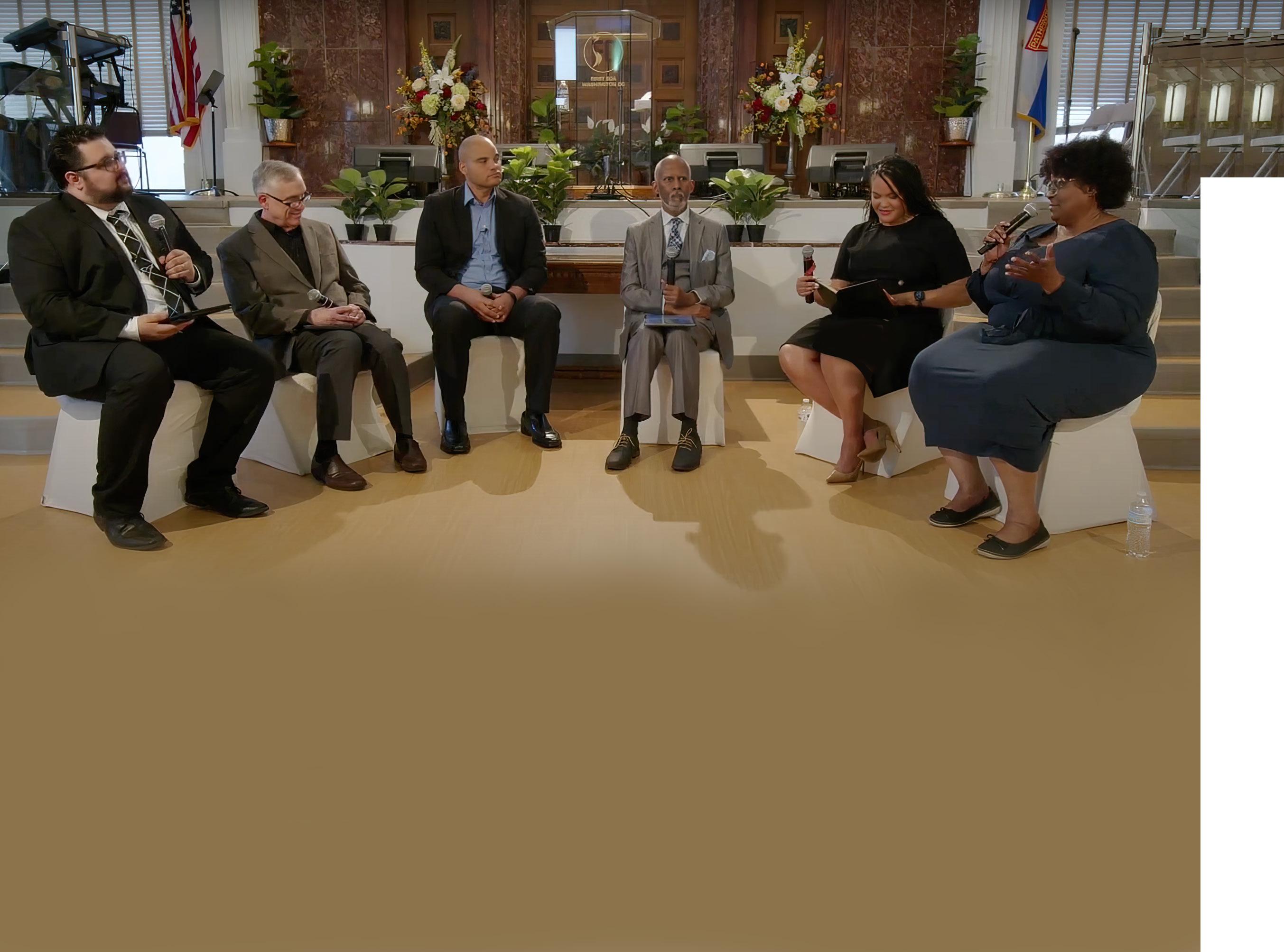
The flight was delayed again, and night had fallen by the time I found myself unloading video equipment at Chicago O’Hare’s busy curb: two 50-pound suitcases, a carry-on, and a hefty backpack. The Uber driver was talkative, but for me, this day wasn’t one for conversation. I answered with monosyllables, my gaze fixed out the window, and he quickly got the message. In the silence that followed, the lights of Chicago’s skyline emerged behind a bridge, and my eyes widened. Chicago has something special. And I had a mission.

By GERSON PANCORBO
Whenever I arrive at a hotel, my routine is always the same: find every available outlet to charge my numerous devices. Then, I open the window, and in that moment, time seems to pause—along with my heartbeat. Words fail to capture the breathtaking view from the ninth floor of the Hilton Chicago.
Early the next morning, I ventured out to capture B-roll footage, documenting life on Chicago’s streets. The drone performed admirably, capturing stunning shots of the Hilton Chicago—formerly known as the Stevens Hotel—as well as the Buckingham Fountain, Lake Michigan, The Bean, and Millennium Park. With all the footage I needed for the intro to First Sabbath in hand, I returned to the hotel. I met with Elder Dana C. Edmond for a briefing on the content of the First Sabbath. With our plans in place, we made our way to the hotel’s hall.
The Historic Room
We greeted our guests, Pastor John Boston II, pastor of Shiloh Church—the first Regional Church in Chicago; Mr. Webb, historian and member of Shiloh Church; and Mr. Graham, a descendant of attendees at the General Conference meeting in April
1944. After the introductions, we prepared to enter THE ROOM. I capitalized it deliberately because it wasn’t just any room—it was THE ROOM. This was where, 80 years earlier, the General Conference convened to cast one of the most significant votes in history: the creation of Regional Conferences.
As we entered, a solemn silence fell over us, prompting an improvised moment of reflection.
The greatness of the room, the meaning of the events that took place here, and the historical implications left us in awe. Apart from the carpet, nothing had changed in 80 years. The original decorations on the walls, the balcony, and the chandeliers all remained intact.

After taking in the moment, we focused on the interview. Elder Webb’s mother, who later became active in the Civil Rights Movement, was part of Shiloh Church in the 1930s and was profoundly influenced by the church’s activities. David Graham recounted how his grandmother was not only a delegate at the 1944 meeting, but also played a pivotal role in evangelistic efforts that laid the foundation for the Regional Conferences. Pastor Boston emphasized Shiloh’s strategic location in

Chicago, near significant cultural sites, positioning the church as a key player in the advancement of black Adventism.
Following the solemn interview, when the guests had departed, Elder Edmond lingered, staring out from the balcony, his arms resting on the railing for at least five minutes. “Elder Pancorbo,” he said, “history was made here.”
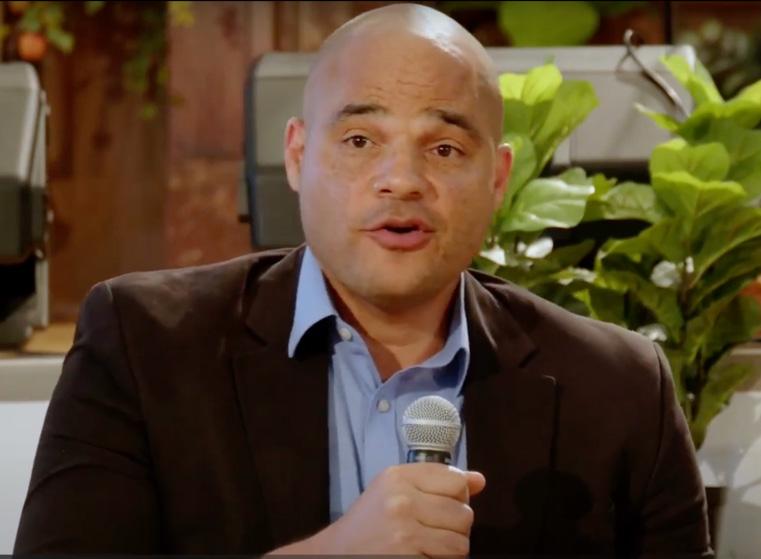

Then, with his usual brisk pace, he left the room. I had the privilege of dismantling the equipment. Usually, it’s a chore, but this time it felt like an honor. I had the room to myself for more than 30 minutes, in silence. As I moved back chairs, coiled cables, removed lenses from cameras, and took batteries out of mics, I reflected on the flood of information I had just absorbed: stories of injustice, faith, privilege, justice, the African American experience, regional work in the Seventh-day Adventist Church, and the guiding hand of God.
The First Sabbath for June wasn’t over. The 80th anniversary of the creation of the Regional Conferences deserved more. We planned to interview historians at the church where it all began: First Church in Washington, D.C.
The alarm clock in my hotel room read five, and I was ready. All the batteries were charged, and the cameras were packed. But it was too early—even with Washington, D.C. traffic. This time, there was no margin for error. We were going live precisely at 3:30 p.m. If you
know Elder Edmond, you know we would be live at 3:30 sharp from 810 Shepherd Street. Upon arriving at the church, the ushers greeted me at the door, helping to move and secure my equipment.
This was a special Sabbath. The executive director of ORCM delivered a presentation during Sabbath School, emphasizing the importance and value of the Regional Conferences to the North American Division and the world church.
First Church has a remarkable senior pastor: Pastor Lisa Smith-Reid, a talented leader and a powerful preacher. She made us feel at home.
With worship concluded, the race against the clock began as we set up the lights, cameras, mics, and power. Traffic held up a couple of our guests until the last minute, but divine providence brought them just in time.
Elder Dana C. Edmond, along with Ms. Rebecca Bell Jackson and myself, hosted First Sabbath. We began the interview with Pastor Lisa Smith-Reid. She shared insights about the church’s history, including its 135-year presence in various locations and the ongoing challenges of evangelizing in a changing neighborhood.
The program also featured Dr. Benjamin Baker and Dr. Douglas Morgan, who discussed the essential role
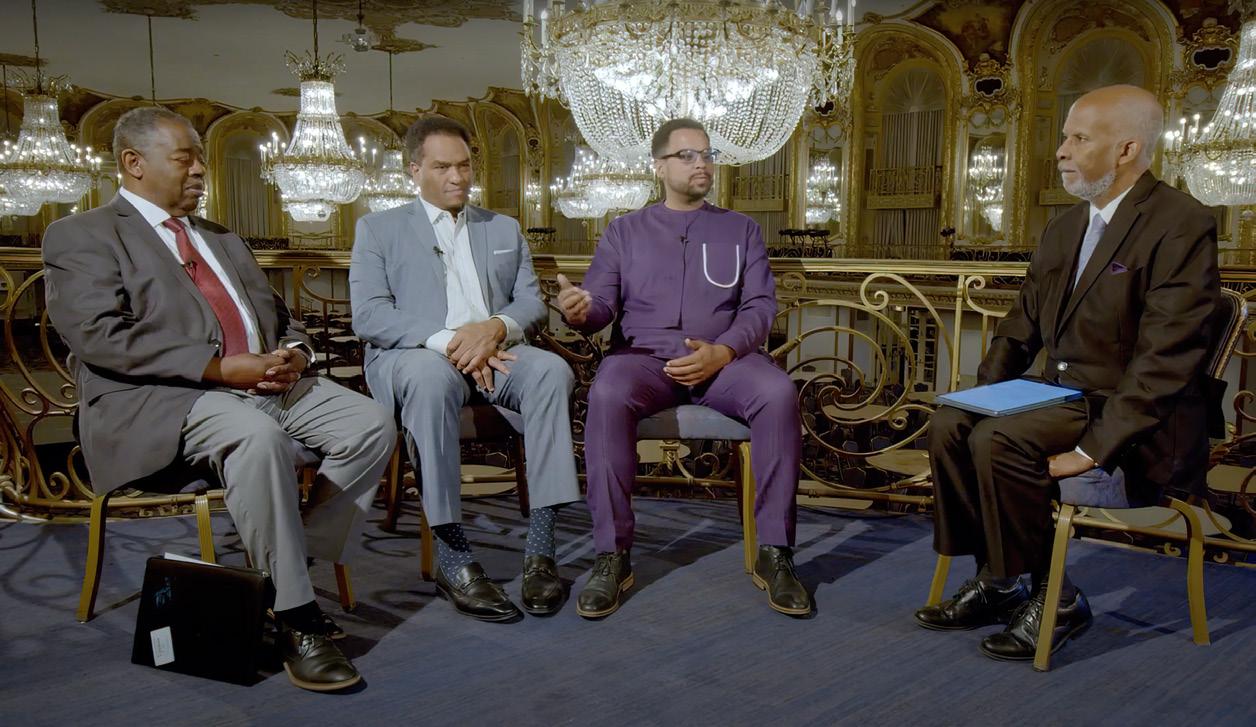
a group of laymen from First Church played in the vote to establish regional conferences 80 years ago. They explored the social and political climate of the 1940s and the significant influence of African-American Adventists in shaping the church’s history.
Drs. Baker and Morgan emphasized the courageous efforts of the lay committee, which included figures such as Joseph Dodson and Eva B. Dykes. They pushed for structural changes that would allow black Adventists to have greater autonomy and representation. This committee’s relentless advocacy was instrumental in the 1944 General Conference decision to establish regional conferences.
“That’s a wrap!” I shouted as the program ended. The very special First Sabbath for the 80th anniversary of the regional conferences was done. And I could breathe again.
As I drove back to the hotel, the Washington, D.C., skyline appeared in my rearview mirror. The weight of the stories I had heard remained in the air, mingling with a sense of hope and progress. I realized that the regional conferences were born out of bravery and determination—leaders who stood up against racial injustice in the Seventh-day Adventist Church.
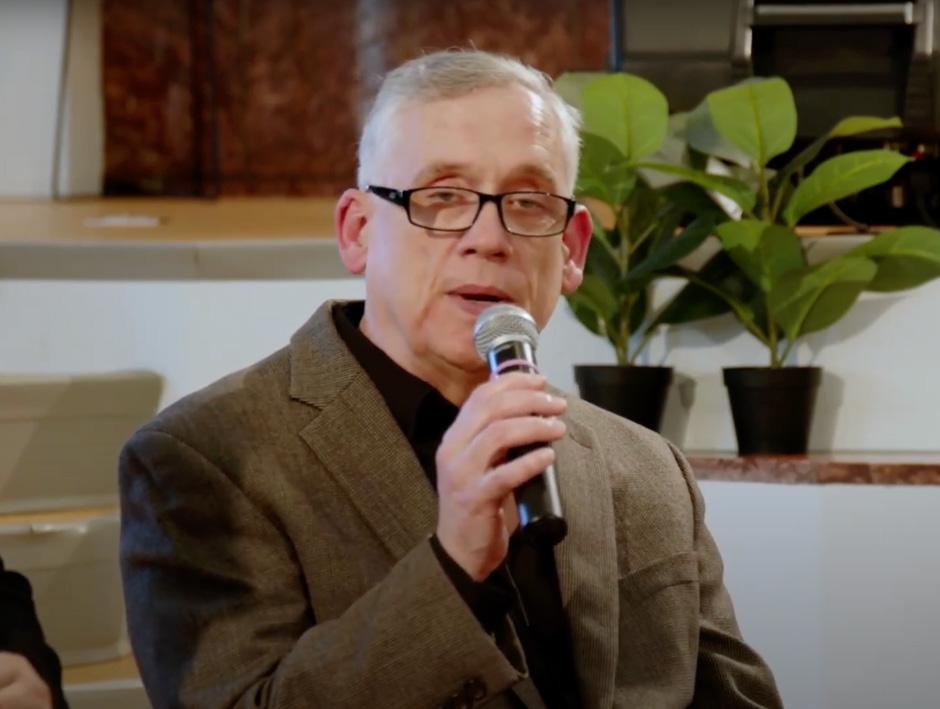
As I turned onto the final stretch toward the hotel, I couldn’t help but feel a profound sense of gratitude. The journey wasn’t just about documenting history; it was about connecting with it, understanding its impact, and recognizing the ongoing work to achieve justice and equality. t

Gerson Pancorbo is the Communications Director for the Office for Regional Conference Ministries and the Regional Conference Retirement Plan. He conducted live coverage in Chicago and in Washington, D.C., to complete this report.
By DEBRA BANKS CUADRO
OOn June 6, the Atlantic Union Conference Executive Committee elected Abraham J. Jules as the next president of the Atlantic Union Conference, effective immediately. The vote was to fill the position previously held by Pierre E. Omeler, who was elected on April 10, to serve as a general vice president for the General Conference. Prior to the vote, Jules served as president of the Northeastern Conference, a position to which he was elected during the 2021 conference constituency session. Jules previously pastored in the Northeastern Conference for more than 36 years, during which time his administrative skills helped many churches grow and expand.
Early years

Born in Trinidad, Jules is a fourth-generation Seventh-day Adventist. As young as four years old, he knew he wanted to serve Jesus. As a child, when people asked what he wanted to be when he grew up, Jules didn’t hesitate to give a reply. “I wanted to be a pastor. That answer has never changed over the years,” he said. “That was my genesis back then at four, and I still have a great passion for preaching, pastoring, and baptisms.”
Jules graduated with a bachelor’s degree in theology from Oakwood College (now Oakwood University). He later received his Master of Divinity degree from the Seventh-day Adventist Theological Seminary at Andrews University and a Doctor of Divinity degree from the United Theological Seminary in Dayton, Ohio.
Pastoring was a critical component in shaping Jules into the leader he is today. “I spent 38 years of my life as a pastor, three years as a president. So, the rigors of daily ministry, I believe, have prepared me to be sensitive to people, to be compassionate, to be caring. Ultimately, if you’re not compassionate and caring, you shouldn’t be leading,” Jules said. To this day, his greatest joy in serving the Lord is “baptizing people into the Seventh-day Adventist church.”
As he contemplates his new role of leading the Atlantic Union Conference, Jules says, “I’m very much dependent on God. I feel I need God—God’s grace, His wisdom, His strength. I think I sense my need for support. I sense my need for the prayers of those I love and certainly the wisdom of those who have already served in this capacity. I will depend very closely on my two fellow officers and the vice presidents of this union to help me as I’m oriented to the goings on of our union.”
Jules and his wife, Dominique, are the parents of two young adult chil-
dren. “I look forward to meeting you as I come into your churches, into your conferences, into your executive committee meetings, and to your camp meetings, getting to know you better, sharing times of worship and service with you, and growing in Christ together,” Jules said. “More than anything else, I anticipate getting to connect with all six of our conferences that comprise the Atlantic Union.”
As the 22nd president of the Atlantic Union Conference, Jules joins the administrative team, directors, and staff to oversee the work of six conferences: Bermuda, Greater New York,
New York, Northeastern, Northern New England, and Southern New England. The membership of the Atlantic Union currently stands at 134,701, and the territory includes 617 churches, 93 groups, 43 elementary and secondary schools, and numerous community-based ministries. (Atlantic Union Conference Second Quarter 2024 Secretary’s Statistical Report). t
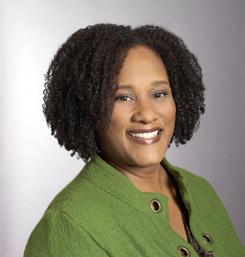
is the Atlantic Union Conference communication director and Gleaner editor.
By DANA C. EDMOND
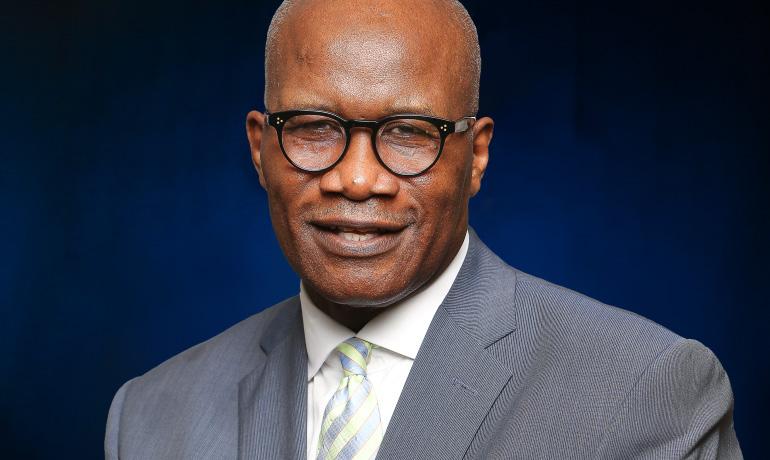
DDr. Eldeen C. King was elected president of the Northeastern Conference on June 9, 2024. He succeeded Dr. Abraham Jules, who was elected president of the Atlantic Union Conference.
Dr. King was born on the island of Antigua as the youngest of 10 children born to the late Rolando and Albertha King. His received his primary and secondary education in Antigua and in Montreal, Canada. At the time of his election, Dr. King was the Northeastern Conference executive secretary.
He served in that position for nearly three years, elected at the Northeastern’s Conference Session on September 26, 2021.
Prior to his service as executive secretary, Dr. King served our church as a pastor for nearly 40 years in the East Caribbean and Northeastern Conferences.
He is a 1980 graduate of Oakwood University. His post-graduate education continued at the New York Theological Seminary and the Blanton-Peale Institute of Religion and Health. In 2010, he received his doctoral degree from Hebrew Union College.
Dr. King and his wife, Rut —an educator and a native of Newport News, Virginia — have been married for 43 years. They have two adult sons.
Northeastern, the second Regional Conference to be founded, is headquartered in Jamaica, New York. The conference has more than 60,000 members and returned nearly $60 million in tithe for 2023, making it the largest Regional Conference in both tithe and membership in North America. It is also one of the largest conferences in those categories among the nearly 60 conferences in the North American Division of Seventh-day Adventists. t
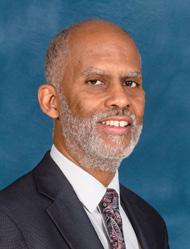
Dana C. Edmond, Director of the Office for Regional Conference Ministry, (ORCM), and publisher of Regional Voice magazine, produced this original report.
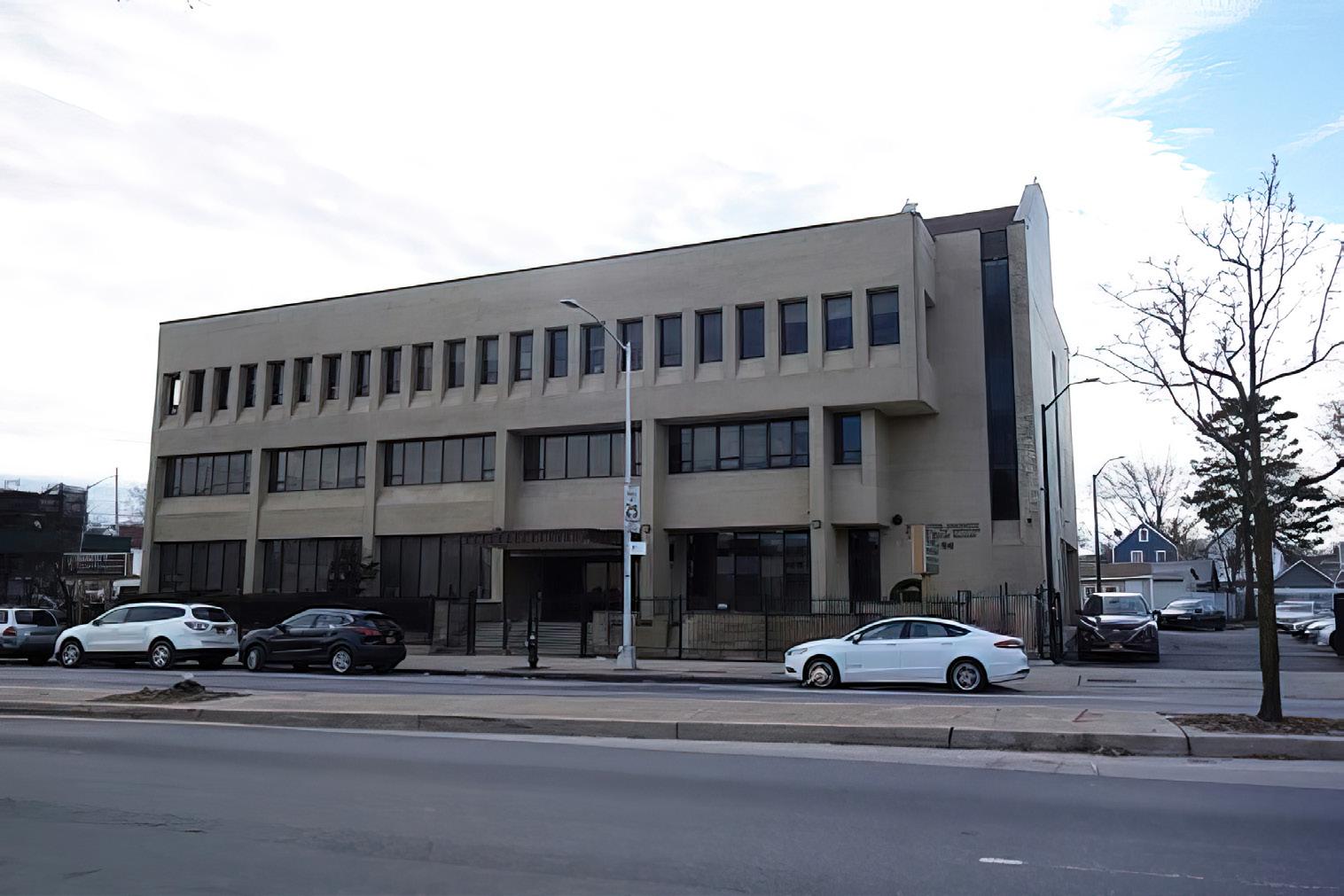


By LATASHA HEWITT

OOn June 23, 2024, the Allegheny East Conference Executive Committee elected Dr. Trevor Kinlock to serve as the new president of Allegheny East, effective immediately. The vote was to fill the position previously held by Dr. Marcellus Robinson, who was elected on March 24, 2024, to serve as President of the Columbia Union Conference during a special session by the Columbia Union Executive Committee.
Dr. Kinlock has served as the Senior Pastor of Metropolitan Seventh-day Adventist Church in Hyattsville, Maryland, since March 2016. He also has served as an adjunct professor at Howard University since August 2021. He previously served as the Virginia area leader for the Allegheny East Conference from November 2008 to January 2016.
Kinlock earned a Master of Divinity degree from Andrews University in 2001, and earned his Doctor of Philosophy degree in sociology and criminology from Howard University.
He is married to Carleen and together they have two daughters, Cayla and Ava.
Please keep Dr. Kinlock and his family in your prayers as he makes this transition. t
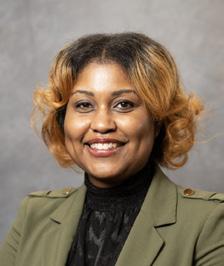
LaTasha Hewitt is Communication Director for the Allegheny East Conference of Seventh-day Adventists. She reports extensively for Regional Voice magazine.
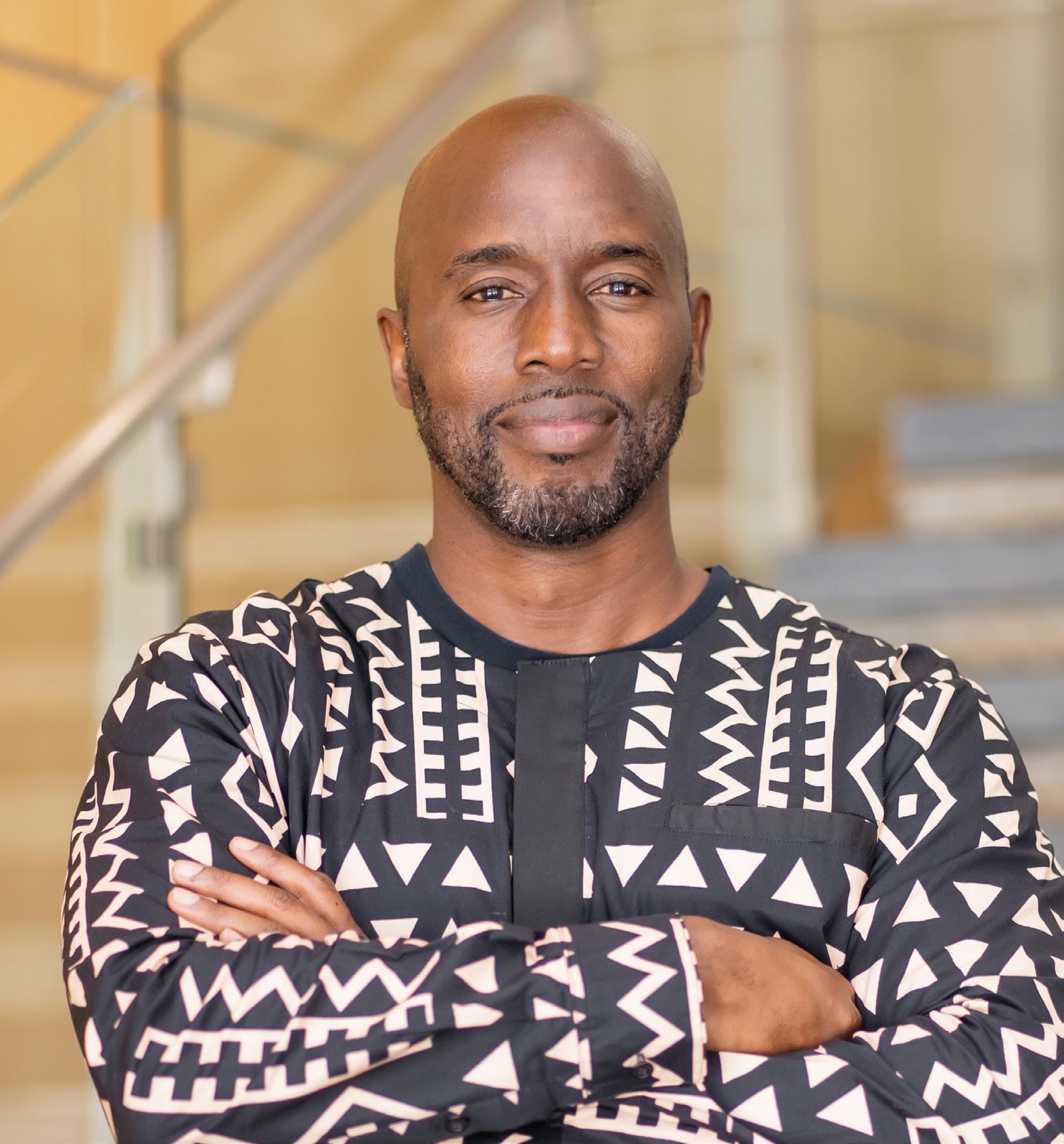
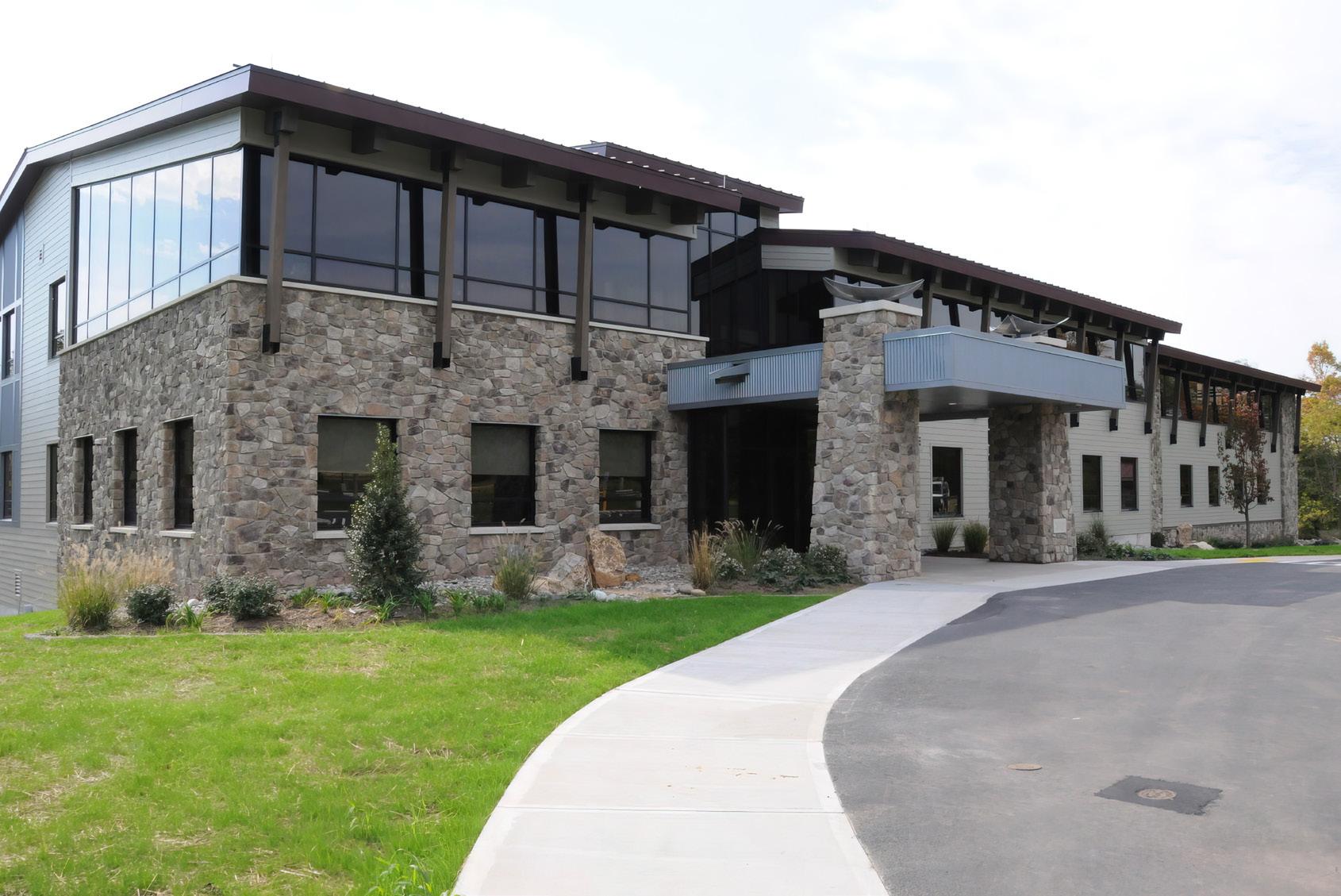
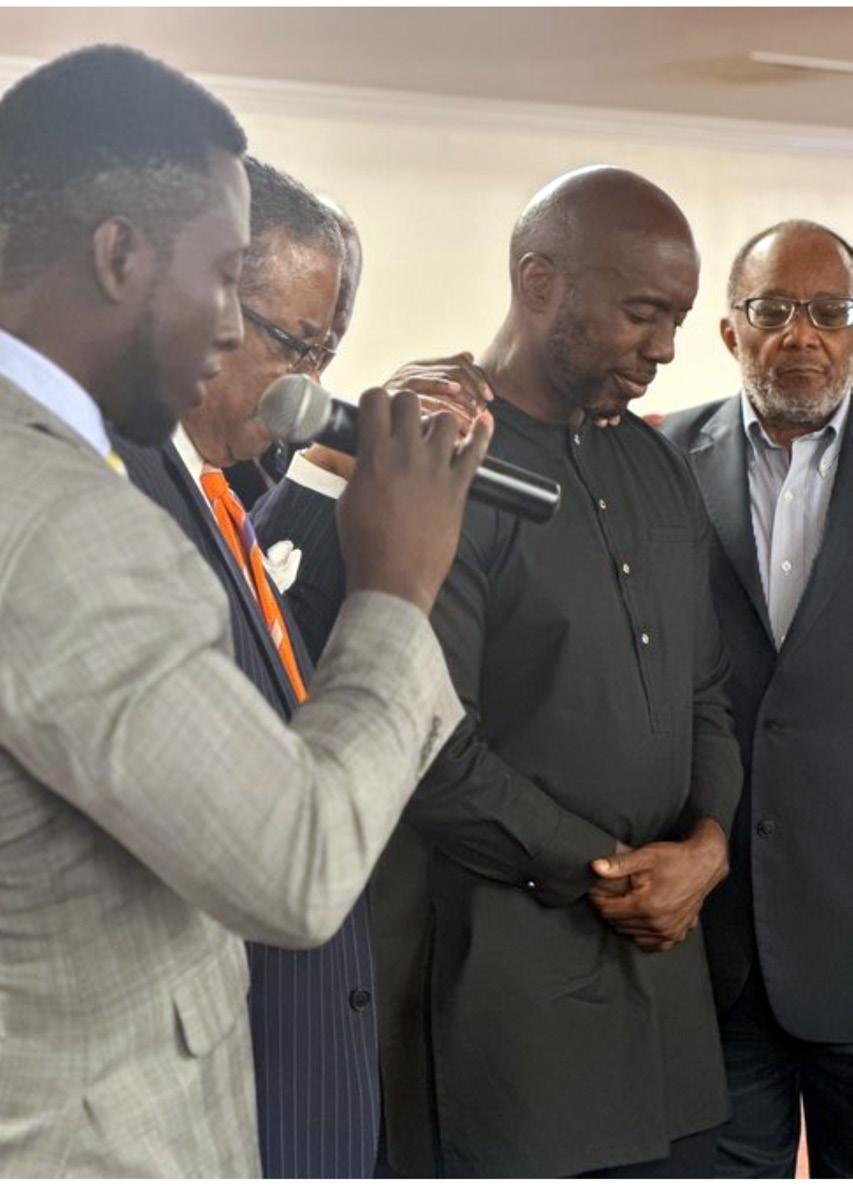
MMarcellus T. Robinson is the newly elected president of the Columbia Union Conference. He hails from Cumberland, a town in rural Virginia. Despite its remote location, Cumberland was still affected by the Civil Rights Movement, which deeply impacted Robinson’s early years.
“In the second week of fourth grade at an all-Black school, 23 of my classmates and I were called out of class,” Robinson recalls. “We were loaded onto a bus with no idea where we were being taken, until the bus pulled up in front of “Cumberland School.” Teachers came onto the bus, called us by name and led us to their classrooms. And we followed, terrified. Up until that moment, Cumberland School had been an all-white school.”
Those 24 students, including Robinson, were the first to implement desegregation in their little Virginia town. “I will never forget my teacher’s kindness,” Robinson recalls. “Mrs. Womack’s Christian values got me through that first day, which was the most horrifying experience of my life.”
Racial tensions were high on both sides. Robinson says he found himself in a unique situation, with both black and white friends, both of whom he
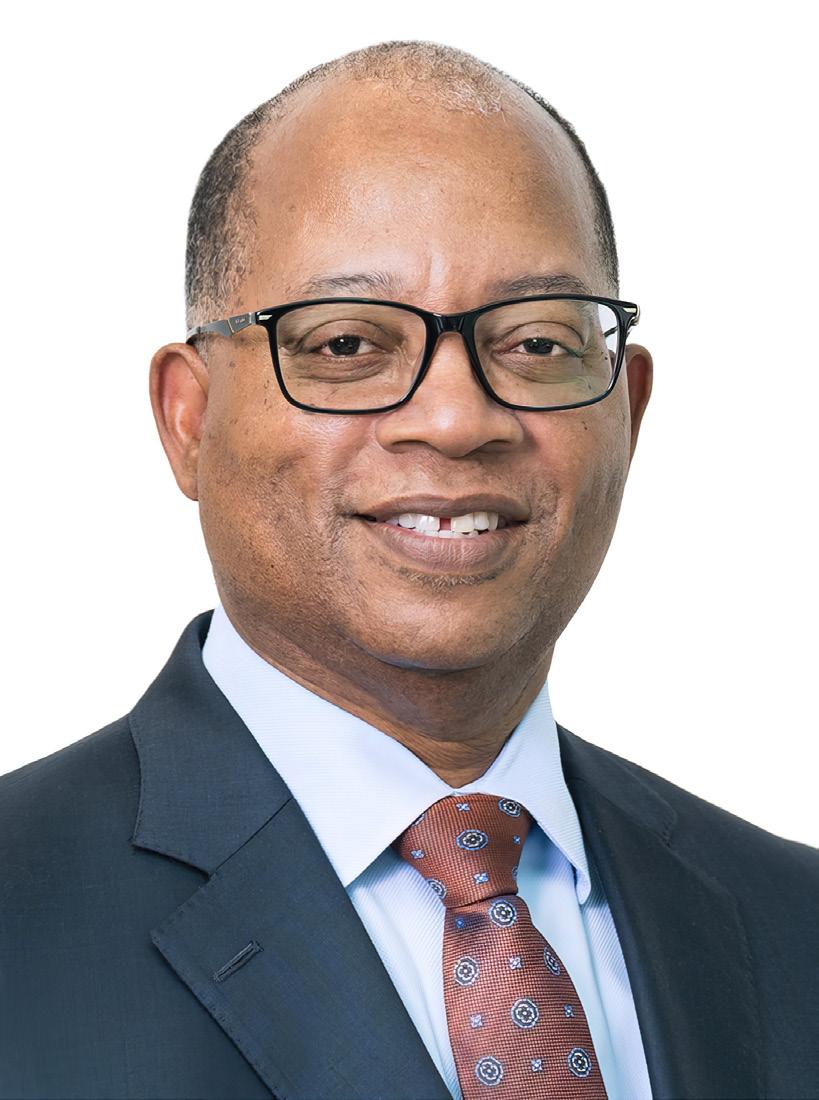
President’s Profile by BECKY ST. CLAIR
ended up defending from the other group.
“I told them, ‘I’m your friend, and I’m their friend. We all need to treat each other with dignity and respect, regardless of skin color,’” he remembers. “We got through it, and over time, Cumberland outgrew its foolishness, and we became a community.”
Robinson didn’t know it, but that was the beginning of a journey that prepared him for his career as a pastor and church administrator.
From Baptist to Adventist
For most of his childhood, Robinson and his family were devout Baptists. They went to church on Sundays,
and he was a junior usher. The summer he was 15, Robinson’s mother went to Brooklyn, New York, to visit her sisters, and when she came back, she was a shockingly different person—a Seventh-day Adventist. She quit smoking, had a calmer demeanor and smiled more.
After a few months of attending both churches, Robinson also committed to the Adventist faith through baptism. The following week, Robinson’s new pastor approached him with some materials and said, “We’ve been praying for you, Marcellus. We want to make you a youth elder, and we’d like you to preach on Youth Day next month.”
Marcellus remembers, “I told him he had the wrong
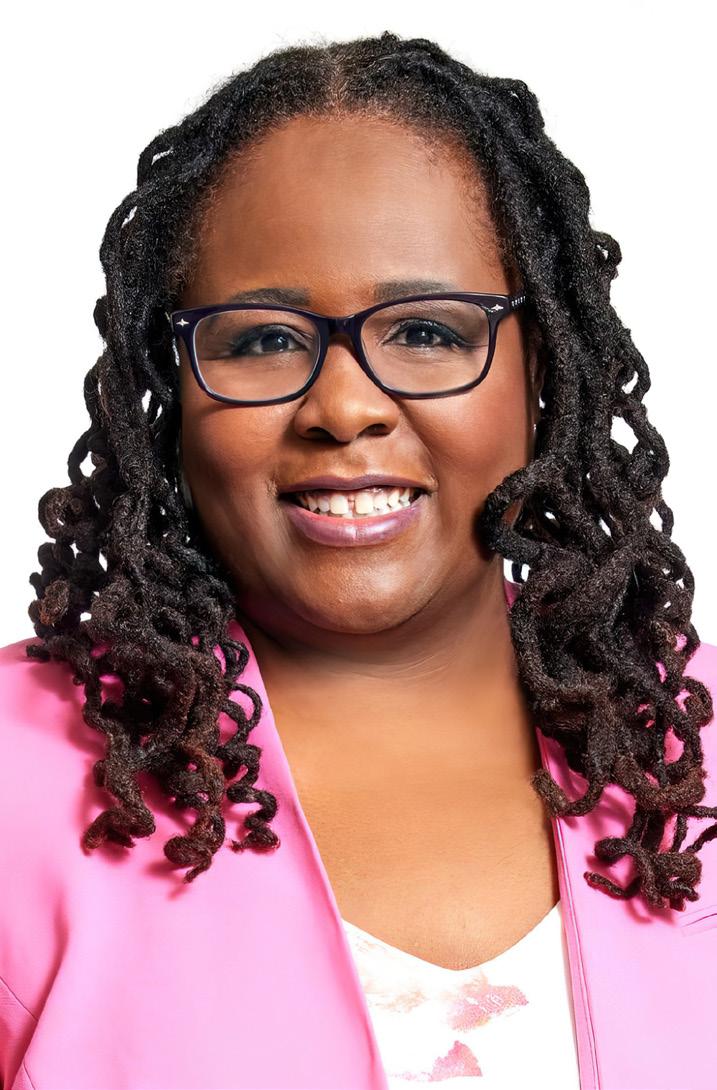
person, and he just smiled and said, ‘No, I don’t think so. Just let the Lord use you how He will, and we’ll be with you every step of the way.’”
It’s been 50 years since that first sermon at age 15 in Cumberland, Virginia. Robinson has since preached countless sermons, led the Allegheny East Conference (AEC) as Ministerial director, then vice president for Administration, director of Stewardship, Philanthropy, and Planned Giving, and most recently served as AEC president. He has served on various church and community boards, including executive committees for the North American Division, Columbia Union, AEC and Lake Region conferences, as well as the board of trustees for Washington Adventist University and Adventist HealthCare White Oak Medical Center in Silver Spring, Maryland.
“When I look back over my life, I see very clearly the Lord knows where to send a person,” Robinson admits. “He doesn’t just call you; He knows how to lead you where you need to be.”
Executive Secretary, Celeste Ryan Blyden
On November 11, 2021, the Co -

lumbia Union Conference Executive Committee elected Celeste Ryan Blyden to serve as executive secretary. She is the first woman to fill the role in the union’s 114-year history.
Celeste joined the union in January 2002 as communication director and Visitor editor. In 2004, she was promoted to assistant to the president and added Visitor publisher to her portfolio. In 2014, she was appointed to serve as vice president for Strategic Communication and Public Relations, making history as the first female vice president of the Columbia Union. She was re-elected at constituency sessions in 2016, and again in May 2021.
“Celeste has demonstrated a real passion for mission and effective leadership,” said Dave Weigley, former Columbia Union president. “She has been a pastor, shepherd and encourager to those around her, as she led her department very effectively over the years.”
She posted on her Facebook page, “I am thankful that Columbia Union Executive Committee members saw what God is doing in my life and affirmed it. So many women who have worked tirelessly for the Church we love never got this opportunity. In
this historic appointment, the door has been opened for all of us!”
Treasurer Emmanuel Asiedu Emmanuel Asiedu began serving as treasurer of the Columbia Union Conference on January 1, 2018. From June 2015 to 2018, he served as secretary/treasurer of CURF and as an associate treasurer for the union. He previously worked as an associate treasurer at the Chesapeake Conference, an audit manager for the General Conference Auditing Service and a staff accountant at Ahern Adcock Devlin, LLP (California).
Asiedu has a Master of Business Administration from La Sierra University (Calif.), a Bachelor of Business Administration in accounting from the Seventh-day Adventist Church’s Valley View University in Ghana and is a CPA (Certified Public Accountant), CMA (Certified Management Accountant), CIA (Certified Internal Auditor), CFE (Certified Fraud Examiner), CGMA (Chartered Global Management Accountant) and a member of the American Institute of Certified Public Accountants. He is a financial consultant to organizations and ministries, as well as an adjunct professor at Washington Adventist University and Towson University, both in Maryland. Emmanuel, who is involved in his local church and has conducted and supported evangelism initiatives locally and in Africa, was ordained to the gospel ministry in December 2021.
He is married to Annette, a registered nurse, and they have two daughters: Azaria and Anneliese. One of Emmanuel’s favorite Bible verses is Luke 1:37: “For with God, nothing shall be impossible” (NIV).t
Profiles of the Columbia Union Conference Executive Secretary and Treasurer are found on their official website.
RRIVERSIDE, Calif. – The La Sierra University Board of Trustees on May 9, 2024, unanimously approved the appointment of Dr. Christon Arthur to serve as the university’s 6th president. He arrives from Andrews University in Michigan where he has been provost since 2016.
Arthur began his presidential duties on July 1. He took over the leadership post from Dr. Richard Osborn who was selected last fall to serve as the university’s interim president following the resignation of Dr. Joy Fehr. “What an exciting moment for La Sierra University. We are thrilled by the selection of Dr. Arthur to the president’s role,” said Dr. Bradford C. Newton, university board chair. “His remarkable breadth of experiences and insights into so many aspects of educational leadership are a perfect fit for La Sierra. We look forward to working with him as the university continues to chart an upward path following the short-term strategic plan that has been developed, and we anticipate a bright future for years to come under Dr. Arthur’s skillful guidance.” He holds multiple graduate degrees including an Ed.S. and a doctoral degree respectively in curriculum and
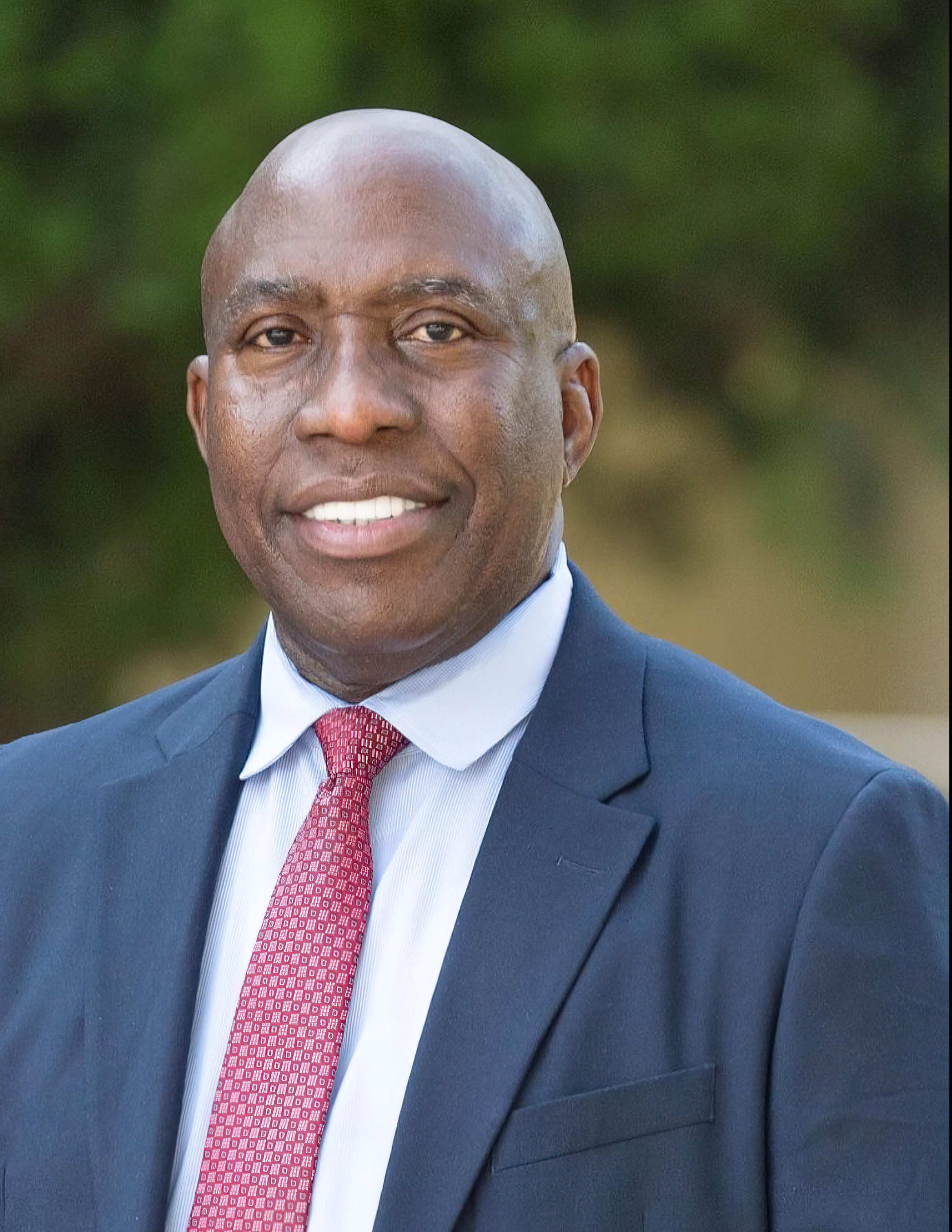
instruction and in educational administration from Andrews University, and completed post-graduate studies at Harvard University’s Institute for Management and Leadership in Education. Last year he earned a graduate certificate in finance from the University of North Carolina, Chapel Hill where he is currently an MBA candidate. He also holds a B.A. in theology from the University of the Southern Caribbean in Trinidad and Tobago. Prior to serving as provost, Arthur held additional lead-
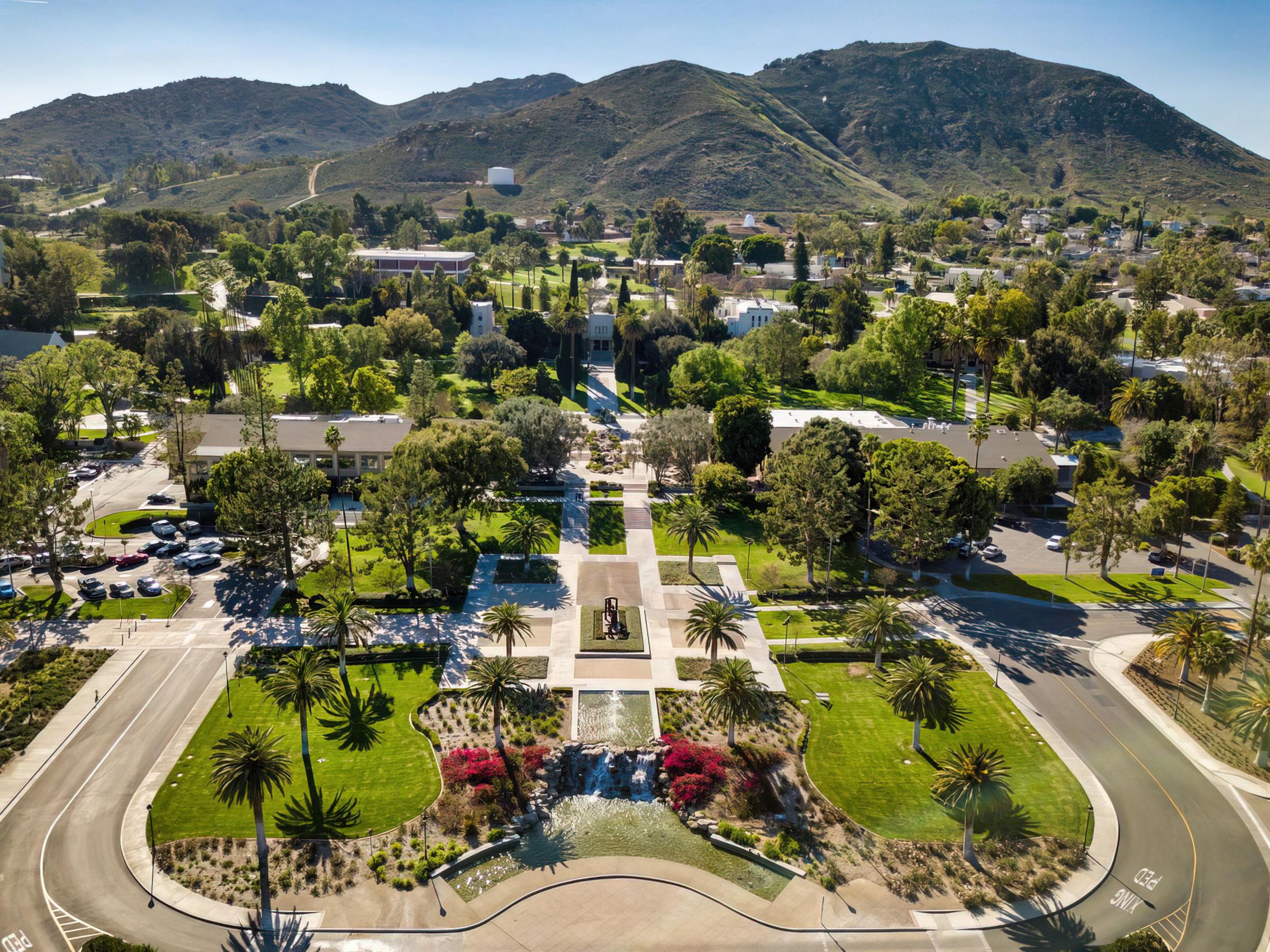
LaSierra University campus
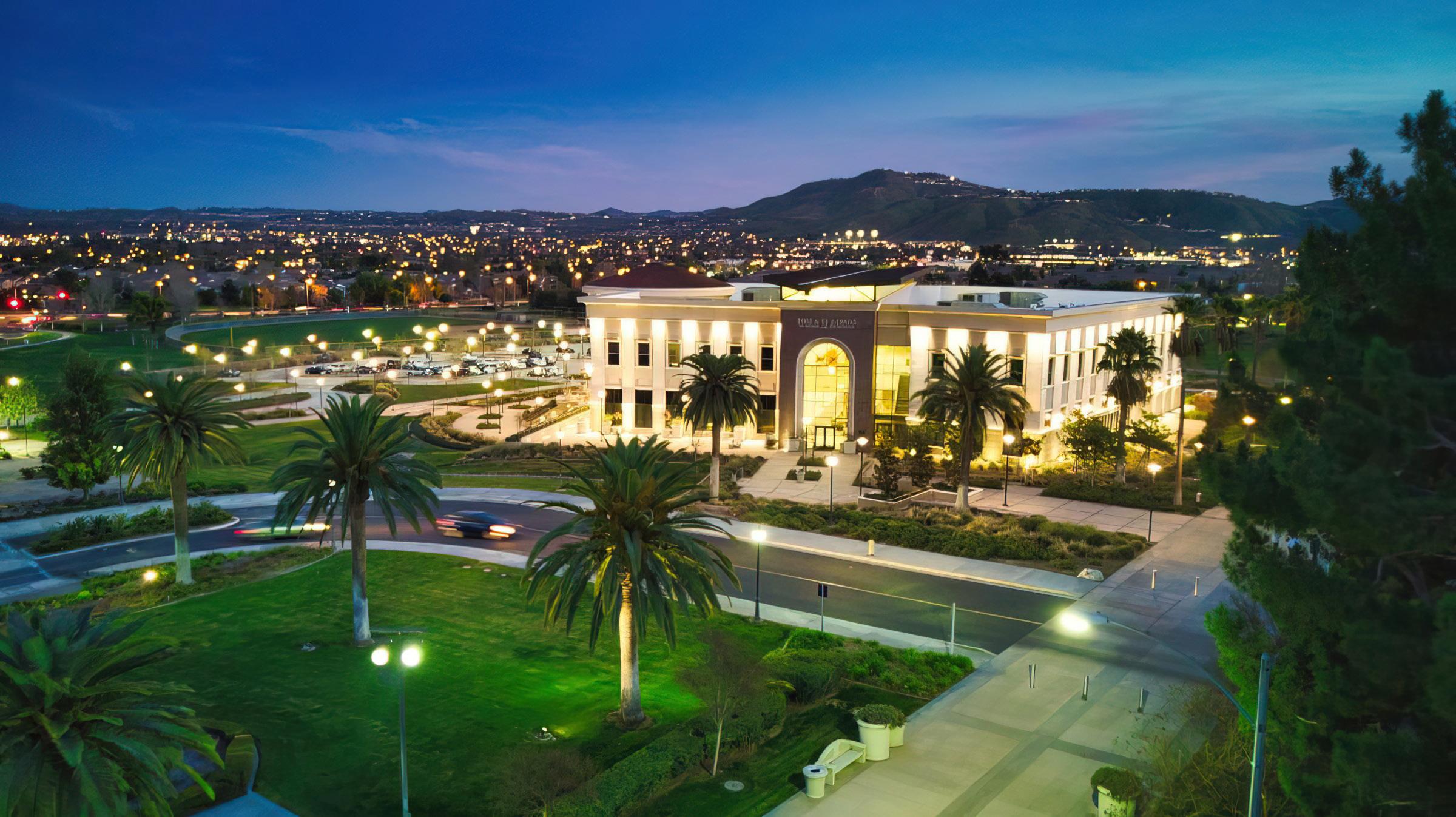
Dr. Christon Arthur ership positions at Andrews beginning in 2010 as dean of the School of Graduate Studies & Research. Before that, he served four years in administrative posts at Tennessee State University where he also taught as an associate professor in educational administration. He currently teaches at Andrews as an educational administration professor, a position held since 2010. He has been an educator for more than 30 years and has worked in elementary and secondary schools.
Arthur, a native of Grenada, will serve as La Sierra University’s first Black president in its nearly 102-year history.
The university began in October 1922 as La Sierra Academy and expanded exponentially over the ensuing decades and through several iterations, becoming La Sierra College in 1939. In 1967 it joined Loma Linda University as its College of Arts and Sciences. In 1990, La Sierra separated from Loma Linda to once again become its own entity under the leadership of its first president as a university, noted theologian and professor Dr. Fritz Guy. Drs. Lawrence T. Geraty, Randal R. Wisbey and Fehr respectively led the university between 1993 and 2023. t
This official coverage is from the La Sierra University website.
By ROBERT ALLEN
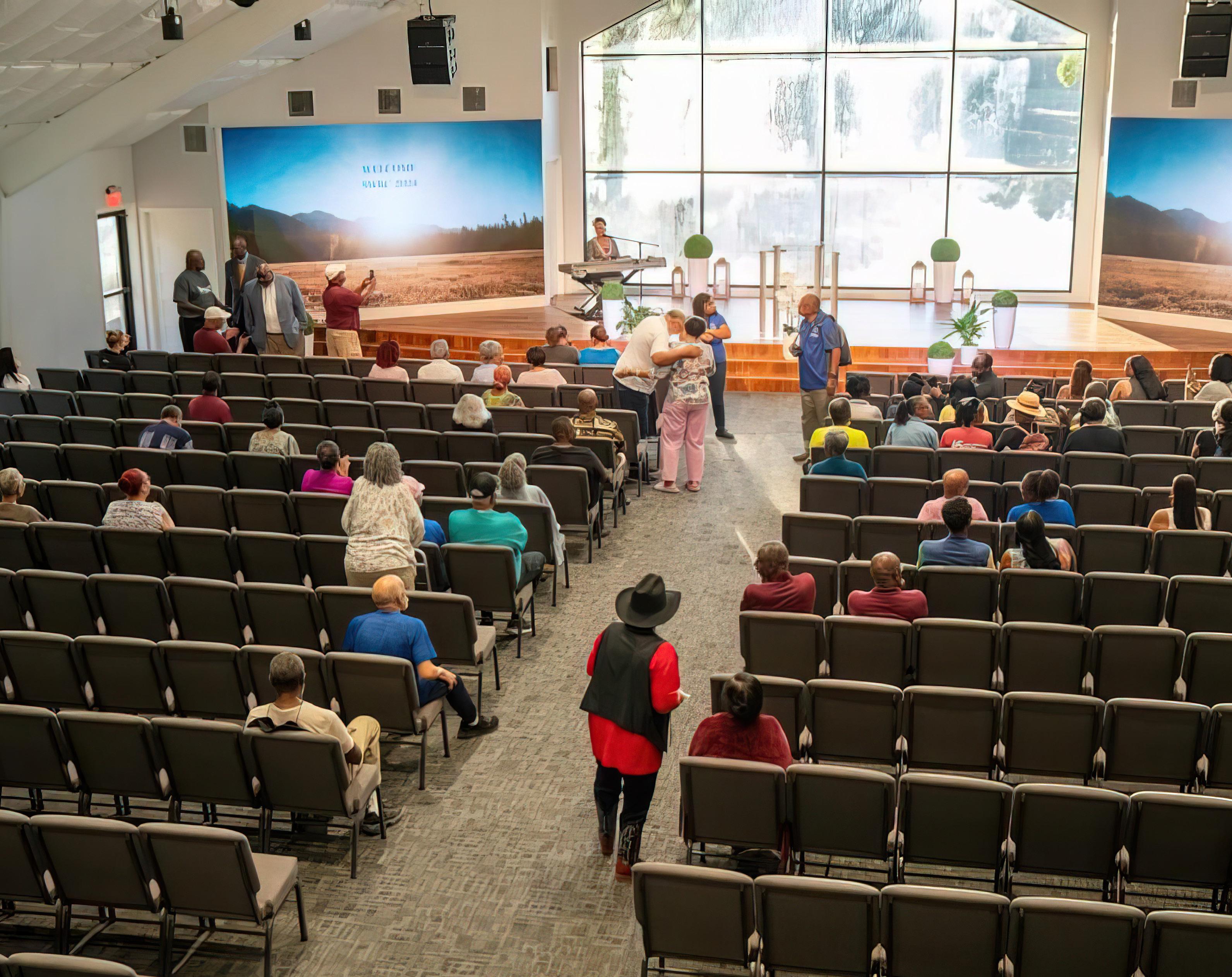
TThe Southwest Region Conference Lone Star Camp is always growing to meet the needs of its constituents, as well as the needs of those people who call the camp home for their own events.
In June 2024, Lone Star Camp completed the construction of a new 10-room mini lodge; a 400- seat, state-of-the-art chapel that is specialized for meetings as well as weddings, and a new Kids’ Kingdom. Kids’ Kingdom is a one-stop area packed with everything a kid of any age would need to have a day full of fun. Kids’ Kingdom has a brandnew commercial playground, complete with swing set, obstacle course, and gaga ball pit. Kids’ Kingdom is also home to a set of extreme air jumpers where they can soar up to 25 feet in the air. Or, if they would rather climb into the air, there is a two-position 18’ rock face climbing wall for younger kids and an all-new 32’ five-position rock face climbing wall that is sure to challenge even the most experienced climbers.
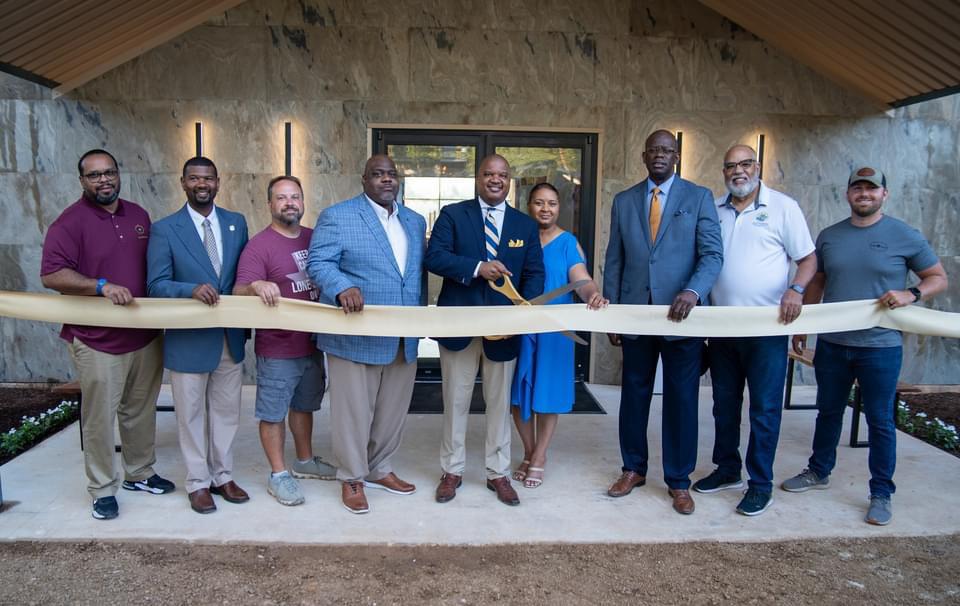
Also, for those hot days when everyone just needs to cool off, Lone Star Camp’s Kids’ Kingdom has a brand-new Splash Pad, complete with ring sprayers, a water mushroom, spray jets, and the Giant Tsunami Dump Bucket. In the heart and center of Kids’ Kingdom are the hexagon swings, where parents can lean back and relax while keeping an eye on their children who will be having the time of their lives.
Future projects that are already underway are a third new mini-lodge, new offices, and a store building. New bathrooms at the cafeteria will expand the accommodations for more people, matching the growth of the surrounding areas here at Lone Star Camp. t
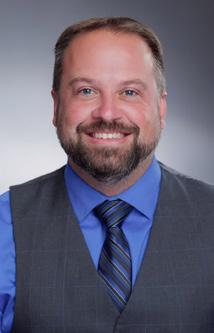
Robert Allen is the manager of the Lone Star Camp. This coverage was coordinated by Pastor Leslie Soupet, Communications Director for the Southwest Region Conference.

1965 - 2024
tWWhile the family continued ministering and establishing schools all around the South, little Victoria was right there with them, singing, playing piano, and making friends everywhere she went.
While the new, young Pastor Murray E. Joiner was waiting for his first pastoral assignment in the South Central Conference, his wife Nannie B. Hammonds Joiner was determined that her youngest baby would be born in her home state of Alabama. Victoria “Vicki” Lynne Joiner was born on January 18, 1965, in Birmingham, Alabama. Assigned to four churches in the Conference, the Joiner family would attend all four churches every Sabbath, spreading the Word of God. This was the foundation on which Victoria’s love of ministry was built.
In 1972, the family moved to Montgomery, Alabama, where Victoria attended kindergarten and elementary school at Bethany Junior Academy. Victoria was an exuberant child, always happy to talk and to uplift others. While the family continued ministering and establishing schools all around the South, little Victoria was right there with them, singing, playing piano, and making friends everywhere she went.
While Pastor Joiner worked at the South Central Conference office in Nashville, and Nannie was the principal at F.H. Jenkins Academy, Victoria completed her middle school years with her best friends Marecha, Jackie, and Lloyda. After graduating from F.H. Jenkins,
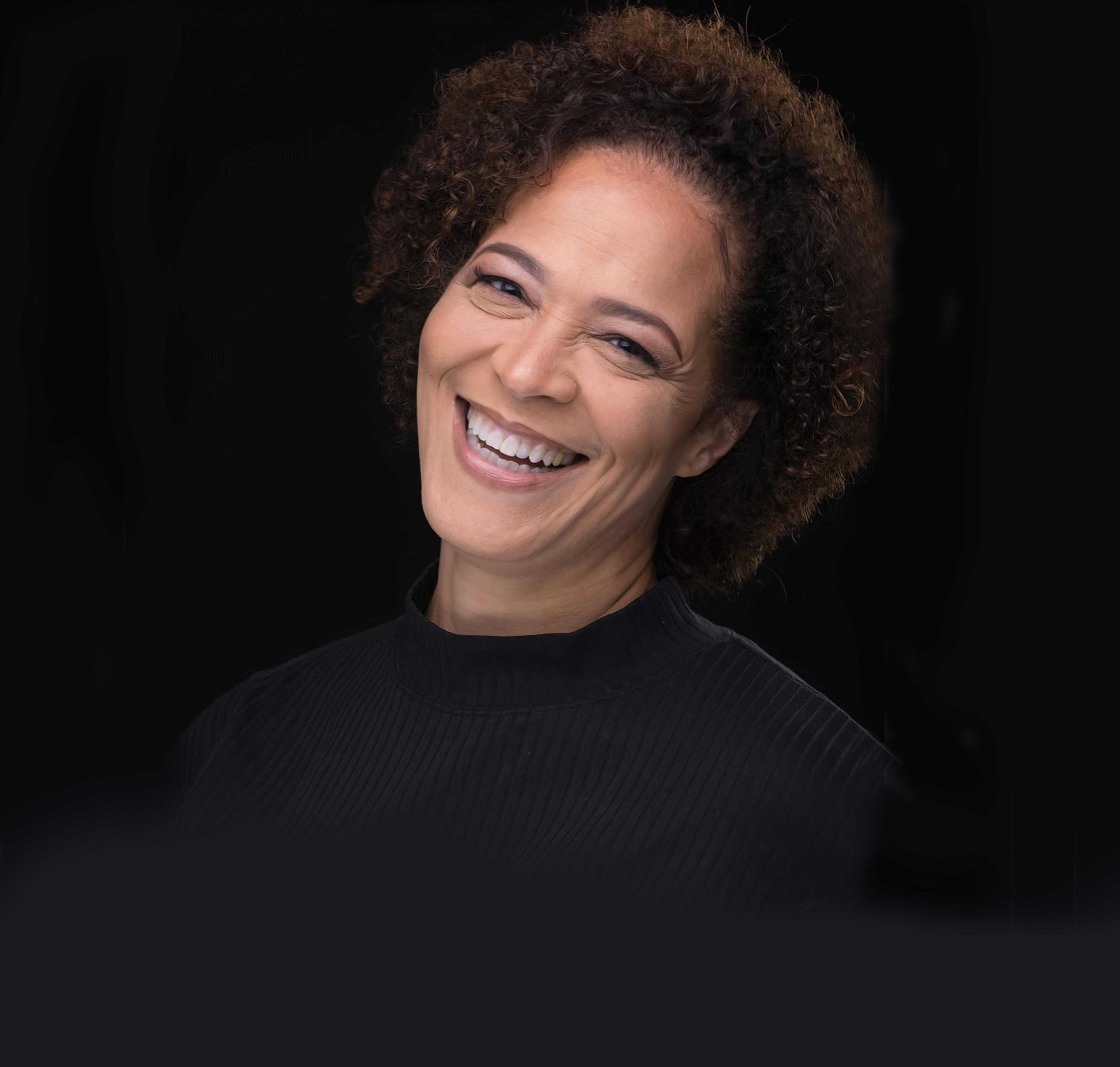
Victoria attended Madison Academy where she was described as the “life of the party.”
Next, Victoria enrolled at Oakwood College. Her fun-loving and accepting personality drew many people in and led her to become very involved in cam pus life. If the activity had anything to do with music, Victoria could be found singing as part of a duet, trio, or group.
Victoria also joined the staff at the Oakwood radio station, WOCG, as a stu dent announcer and producer under General Manager Don McPhaull. During this time, she developed lifelong friendships with Kristina, Linda, Robin, Vinette, Gina, and Joy, as well as reconnecting with childhood friends. She joined the Oakwood College Aeolians under the direction of Dr. Alma Blackmon and traveled all over the country. For years, Victoria cherished the memory of the Aeolians’ performances in the United Kingdom.
Victoria enrolled in a dual program at Andrews University for further studies in broadcast management and religion. When she completed the program, she returned to Oakwood and graduated with a Bachelor of Arts in Communication in 1987.
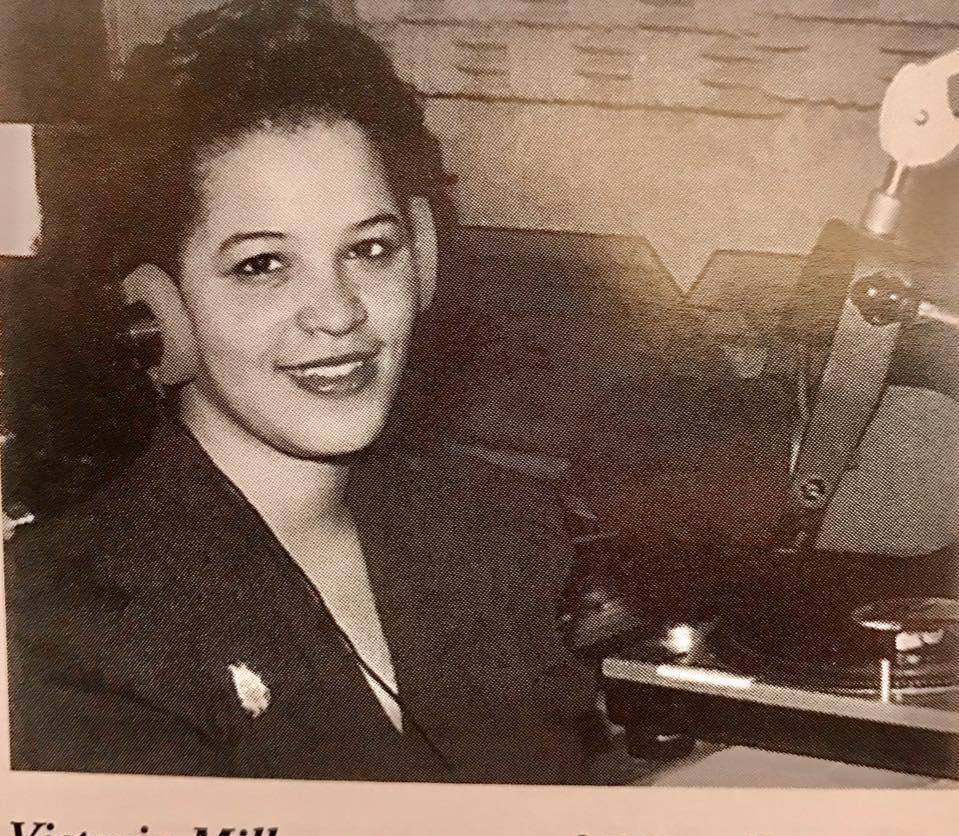

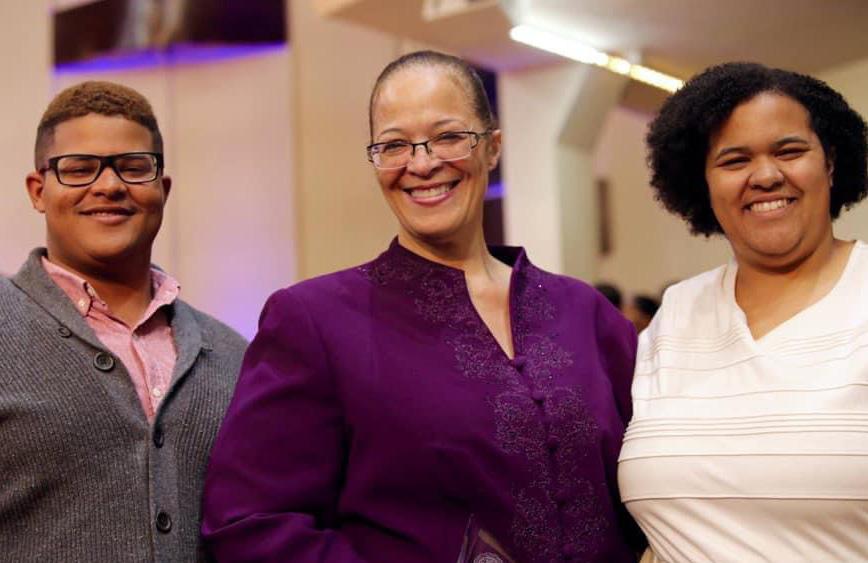
After graduation, she moved to Georgia and worked as a primary interviewer for the National Business Crime Information Network for two years. After receiving a call from Dr. Roy Malcolm, she returned to Oakwood College and became the Program Director at WOCG. Her previous experience working at the station as a student prepared her to take on the more important role of training students and implementing format changes to increase listenership.
It was during this time that Victoria would marry her long-time friend, Henry “Bay” Miller, whom she had met at Camp Thunderbird. Their friendship continued through their days at Oakwood, and they would have two children, Jennifer in 1992 and David in 2000. Of all of Vicki’s accomplishments, she believed that being a mother to Jennifer and David was by far her greatest. While the marriage eventually came to an end, Bay and Vicki’s friendship lasted for the rest of her life.
After three years as Program Director, Victoria became
the WOCG General Manager. Under her leadership, the radio station soared to new heights. She spearheaded the largest fundraising campaign in the station’s history, Share-a-thon; brought the station from an 18-hour format to a full 24 hours; acquired digital technology to assist in station operations; facilitated the purchase of a new station transmitter; and secured online streaming services so WOCG could be heard worldwide. She also managed the station’s move from the little garage on the hill to a new station complex at Oakwood’s “4920” building. The station’s call letters changed from WOCG to WJOU during this time.
Victoria took her calling to radio ministry seriously. Her focus was to “do good radio” and train students for a career in broadcast communication. More importantly, she was committed to spreading the good news of Jesus Christ. She would do just that every Sabbath morn-
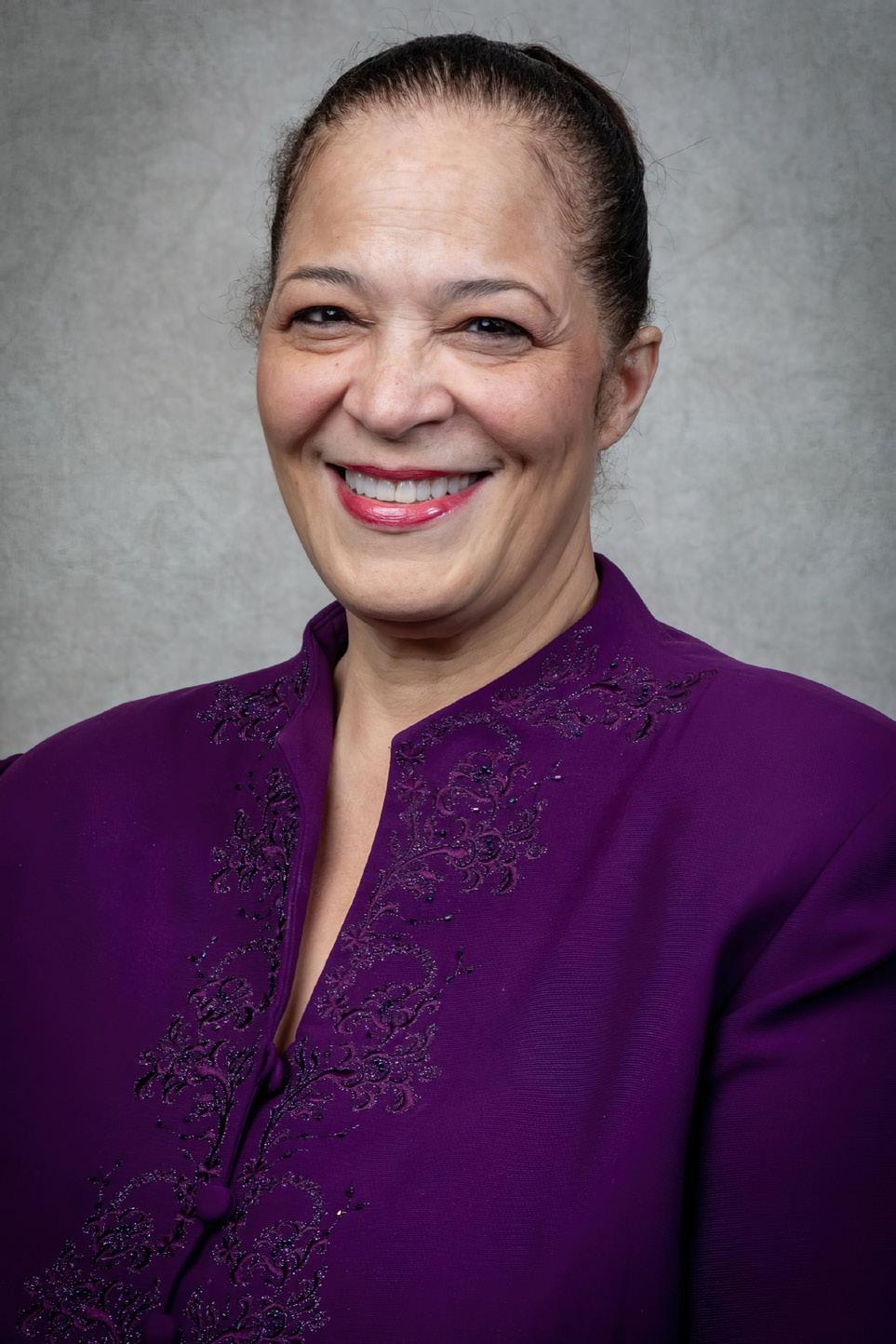
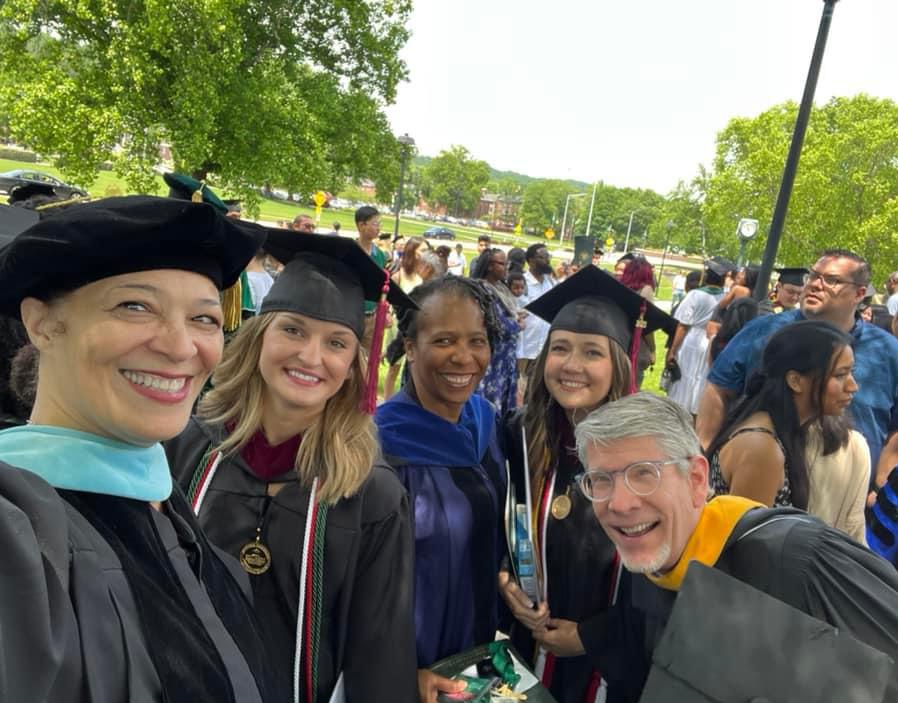
ing with her signature program Sabbath Praise, which aired faithfully every Sabbath on WJOU for more than 20 years. With her love of both history and music, she could talk about every song she played, bringing the memories to life for her listeners. Intermingled with the music was always a message that God had put on her heart that week. Her program has been instrumental in bringing souls all over the world to Christ.
Her professional accomplishments did not stop in the field of broadcasting. At Oakwood she served as Assistant Vice President of Advancement & Development, director of Alumni Relations, and the first director of the Oakwood University Memorial Gardens Cemetery. She also found her love of teaching as a professor in the Communication Department at Oakwood, as well as an adjunct professor at Alabama A&M University, Drake State Technical College, and Calhoun Community Col-
lege. She would eventually step down from the radio station to teach full time. She earned a master’s degree in Rhetorical Communication from Regent University in 2002, followed by a doctorate in Educational Leadership and Change from Fielding Graduate University in 2011. In 2019, Victoria was called to join the faculty of Southern Adventist University as an assistant professor of Communication, sharing her years of broadcasting experience with her new professional family.
Victoria’s ministry has literally touched thousands of lives over the course of her life — countless through her radio ministry, and hundreds of students, many of whom have become award-winning news anchors, journalists, broadcasters, renowned speakers, pastors, and media personalities across the country.
Vicki Joiner — a loving sister, mother, educator, and friend — lived life out loud with the love of the Lord. She held fast to her faith in God and loved with her whole heart until she passed away peacefully on July 14, 2024. Dr. Joiner was preceded in death by her parents Murray and Nannie Joiner and her niece Lauren Joiner. Left to cherish her memory are: her children Jennifer and David; her sister Nanetta Joiner Pressley and brother Dr. Murray Joiner Jr; her niece Dr. Joyce Bellamy, and nephews Robbie Pressley and Murray Joiner III; great nieces and nephews, many extended family members, and friends in the fields of broadcasting, communication, and the music ministry; and her beloved students. t
A scholarship fund has been established at Oakwood University in honor of Dr. Joiner’s years of dedicated service. Contact the Office of University Advancement at developmentoffice@oakwood.edu, or visit https://give.oakwood. edu/vjoiner-mem-scholar/
Special Thanks to the Joiner family and to Ms. Debbe Millet from Regional Voice magazine for sharing this tribute to our beloved Dr. Victoria Joiner, colleague and dear friend. The influence of this joyous, dedicated life will stay with us through eternity.
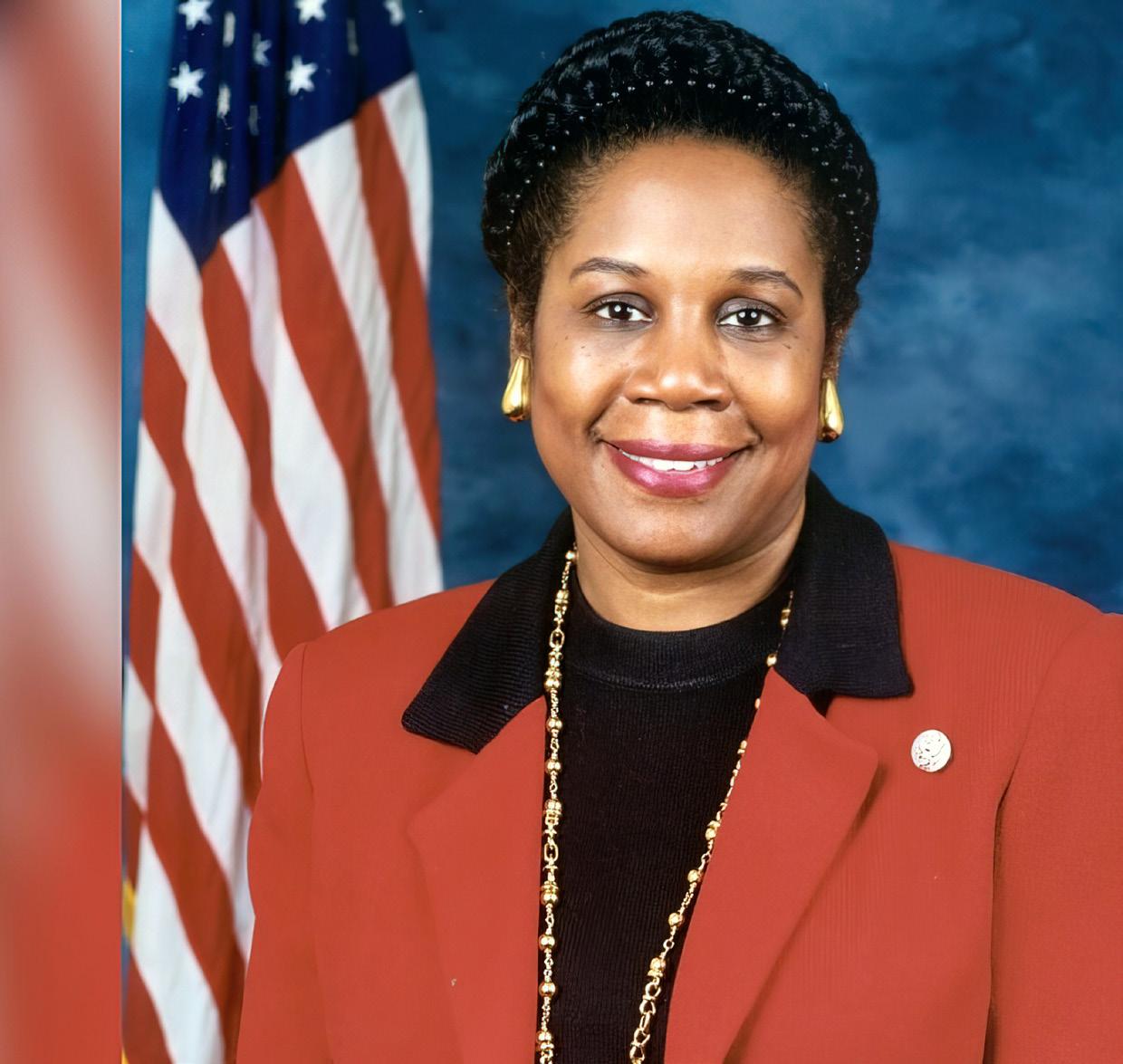

SSheila Jackson Lee was born January 12, 1950 in Jamaica Queens, New York to Ezra Clyde Jackson and Ivalita Bennett Jackson. She was raised in a working-class neighborhood where her parents, neither of which attended college, instilled in her a strong faith and love of education. She attended Jamaica High School and would have ended up in a secretarial career had Dr. Martin Luther King, Jr. not tragically been assassinated. In the aftermath, she was offered a scholarship in his honor to matriculate to a local New York College. In 1969 she accepted an invitation to transfer to Yale University with other courageous undergraduate female students becoming the first class of undergraduate women at Yale. She graduated with a B.A. in Political Science with honors in 1972 and earned a Juris Doctorate from the University of Virginia School of Law in 1975.
Known as “The Congresswoman,” she distinguished herself as a staunch defender of the Constitution, Civil Rights and African American interests. Before her election to Congress, she served two terms as one of the first Black female At-Large members of the Houston City Council. Prior to Council, she was an Associate Municipal Court Judge for the City of Houston. She is a veteran of both corporate and private law practice. Sworn-in to Congress in 1995, she immediately
tKNOWN AS “THE CONGRESSWOMAN,” SHE DISTINGUISHED HERSELF AS A STAUNCH DEFENDER OF THE CONSTITUTION, CIVIL RIGHTS AND AFRICAN AMERICAN INTERESTS. BEFORE HER ELECTION TO CONGRESS, SHE SERVED TWO TERMS AS ONE OF THE FIRST BLACK FEMALE AT-LARGE MEMBERS OF THE HOUSTON CITY COUNCIL.
made an impact as a member of the House Committee on the Judiciary where she served on the subcommittees on Crime and Immigration and Claims. She was the first woman to be the Ranking Member of the Immigration and Claims Subcommittee. She served on the Committee on Science, Subcommittee on Space and Aeronautics and Foreign Affairs.
Jackson Lee was a dedicated member of the Congressional Black Caucus and the CBC Foundation and an active member of the Progressive Caucus. She founded and chaired the Congressional Children’s Caucus which continues to advocate on behalf of children nationwide. She also founded the Pakistani Caucus in the wake of “9/11” to bring attention to human rights. Because of her successful efforts to steer millions of dollars for disaster relief in Pakistan, she is regarded as a national hero in that country.
As a strong proponent of civil rights, justice, and equality Jackson Lee has introduced and tenaciously supported numerous significant legislative bills such as H.R.-40 Commission to Study Reparations and Develop Proposals for African Americans Act, The George Floyd Justice and Policing Act that aims to address police misconduct and improve law enforcement practices, and The John Lewis Voting Rights Advancement Act that would protect the Voting Rights Act of 1965. Her leadership is credited with reauthorizing the Violence Against Women’s Act.
In addition, she was able to send hundreds of millions of dollars to the City of Houston and the 18th Congressional District that would fund advancement and progress in the areas of economic advancement, education, law enforcement, healthcare, transportation, and disaster recovery. In 2020 she led a successful bipartisan effort that established a Commission to study the historic significance of the Emancipation Trail. If the results of the study reveal the historic significance of the 1865 trek of newly freed slaves from Galveston to Houston and
beyond, the trail could become the second national historic trail honoring Black Americans in the United States which would lead to its development as a tourist attraction that would spur economic activity.
Jackson Lee was a frequent guest on network and cable news outlets including ABC “World News Tonight”, CBS “Face the Nation”, CNN and MSNBC. She received many recognitions including: being hailed by Ebony Magazine as one of the “100 Most Fascinating Black Women”; named in “Congressional Quarterly” as one of the 50 most effective Members of Congress; and in “U.S. News and World Report” as one of the 10 most influential legislators in the House of Representatives. The Houston Chronicle named her as one of the most influential and prolific legislators on Capitol Hill.
Although she had a tremendous global impact and dined with royalty, the residents of Houston were always in her heart and her top priority. You could find her celebrating community milestones, speaking at high school or college graduations, attending faith-filled services, riding in parades, serving through her annual “Toys for Kids” celebration, Thanksgiving meal distributions, and numerous disaster relief and COVID supply distribution sites
where she distributed much needed supplies and community support.
Congresswoman Lee was also a Seventh-day Adventist, a member of the Belfort Church in Houston, which is now World Harvest Outreach. When the late Elder James O. Best served as her pastor, he noted that “she was very active and continued to be active” in church work, just as she worked for the community.
Jackson Lee made her earthly transition on Friday, July 19, 2024. She left to cherish her legacy and so many special memories, her beloved family, her husband of 51 years, Dr. Elwyn C. Lee; daughter, Erica Lee Carter (Roy); son, Jason C.B. Lee; grandchildren, Ellison Carter and Roy Lee Carter, III; brother Michael C. Jackson (Shelley), nephews and nieces and a host of family, extended families, residents of the 18th Congressional District of Texas, as well as the citizens of the City of Houston and the world-at-large. t
We offer thanks from Regional Voice magazine to the family of Rep. Jackson Lee for creating this tribute to her remarkable, productive life. Dr. Bryant Taylor, Associate Editor Regional Voice magazine, coordinated this coverage.

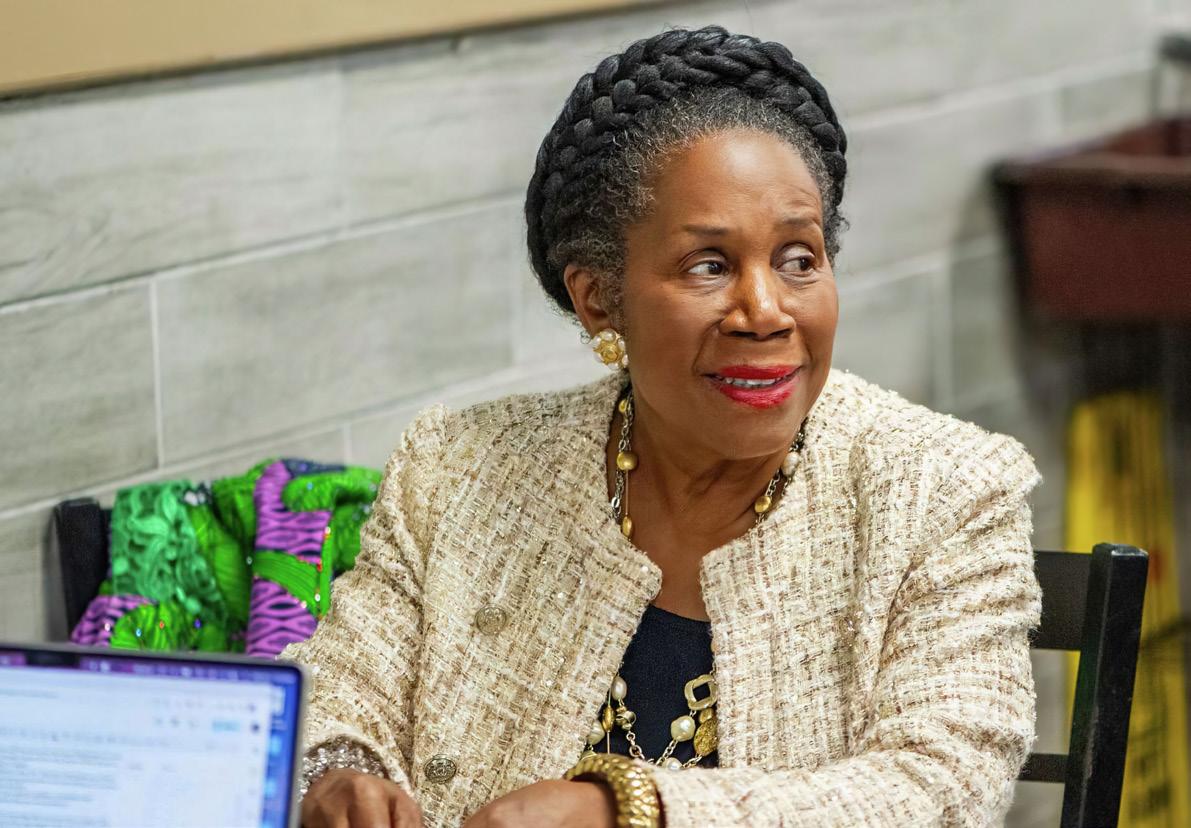


ALTHOUGH SHE HAD A TREMENDOUS GLOBAL IMPACT AND DINED WITH ROYALTY, THE RESIDENTS OF HOUSTON WERE ALWAYS IN HER HEART AND HER TOP PRIORITY.

For the past two years, we have offered this series on our Regional Conferences and its leaders. We have shared vital information about each conference: territory, membership, tithe and leaders.
Next in this series we offer information on two of our affiliates, those entities which are not Regional Conferences but are also affiliated with them in our mission. The first of these organizations is the Bermuda Conference. t

Dana C. Edmond, Director of the Office for Regional Conference Ministry, (ORCM) and publisher of Regional Voice magazine, compiled the data for this Special Report.
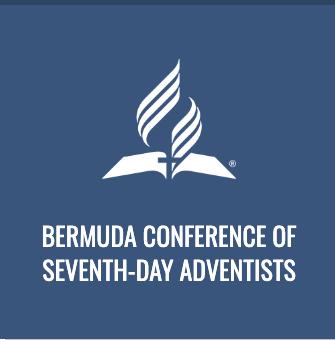
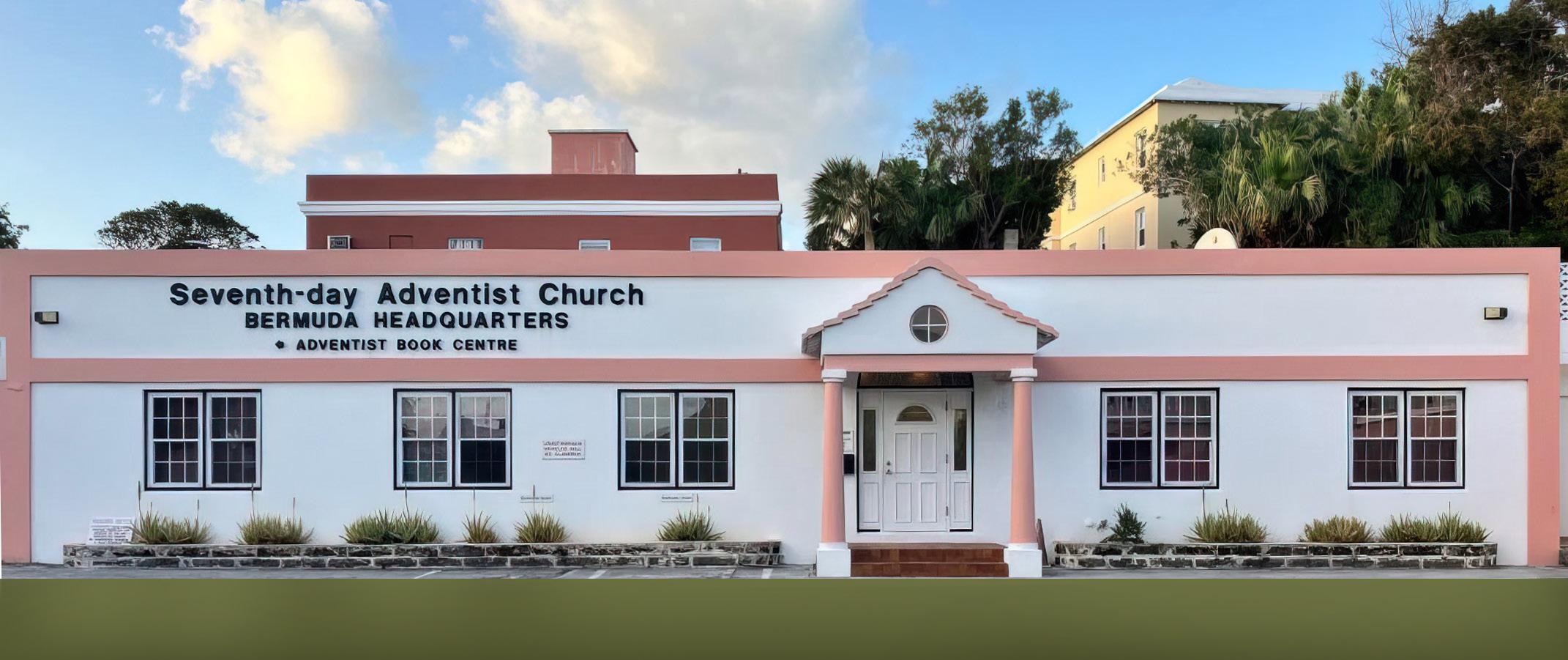
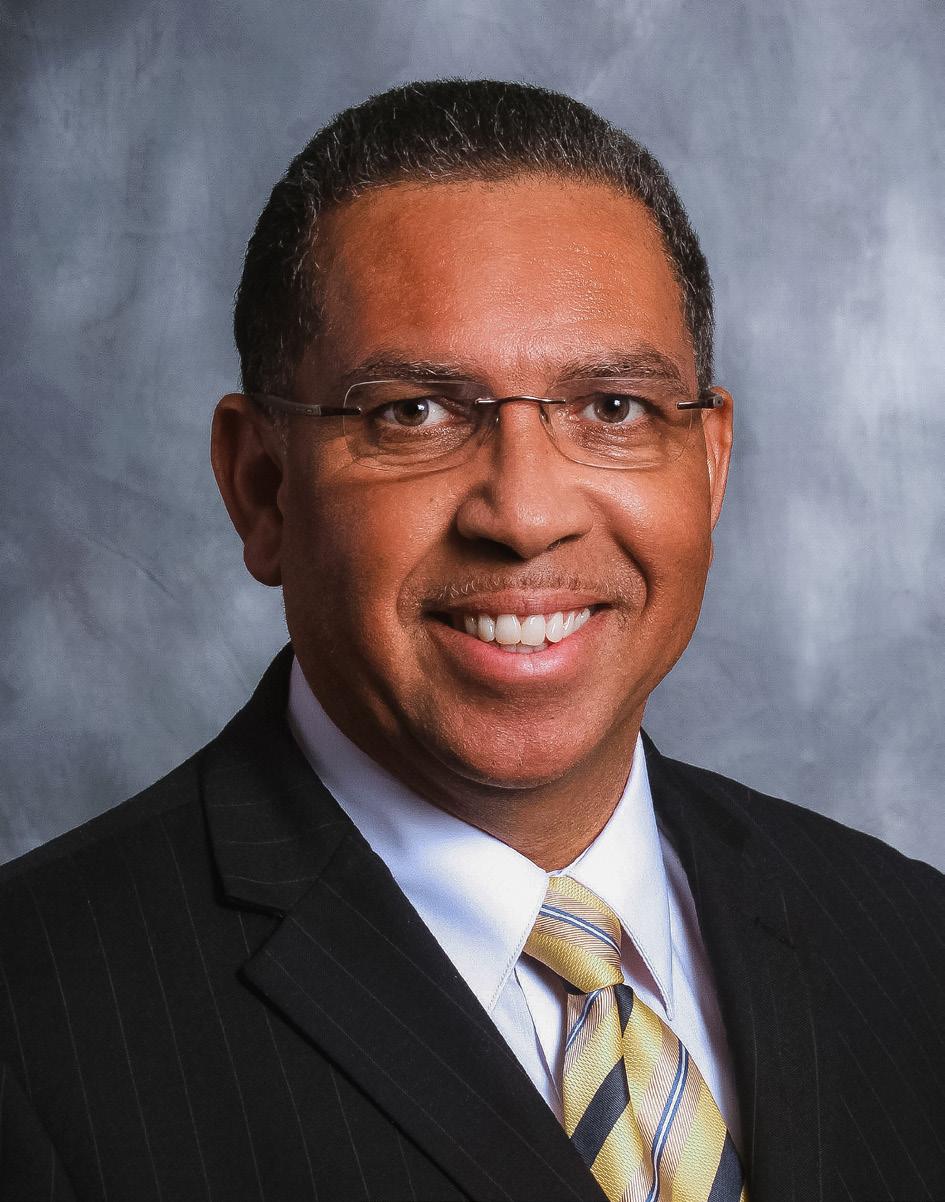

FThe second organization we will spotlight is the North Pacific Union Conference. Though this entity is not a Regional Conference, it has constituency members who have strong affiliation with their Regional counterparts throughout the North American Division.
The leader we feature is Elder Byron Dulan, vice president of the North Pacific Union. He has announced his upcoming retirement after decades of ministerial service.
Elder Dulan is also greatly appreciated as a frequent contributor to Regional Voice magazine, specializing in black Seventh-day Adventist historical events and leaders in the great western states. t

Dana C. Edmond, Director of the Office for Regional Conference Ministry, (ORCM) and publisher of Regional Voice magazine, compiled the data for this Special Report.
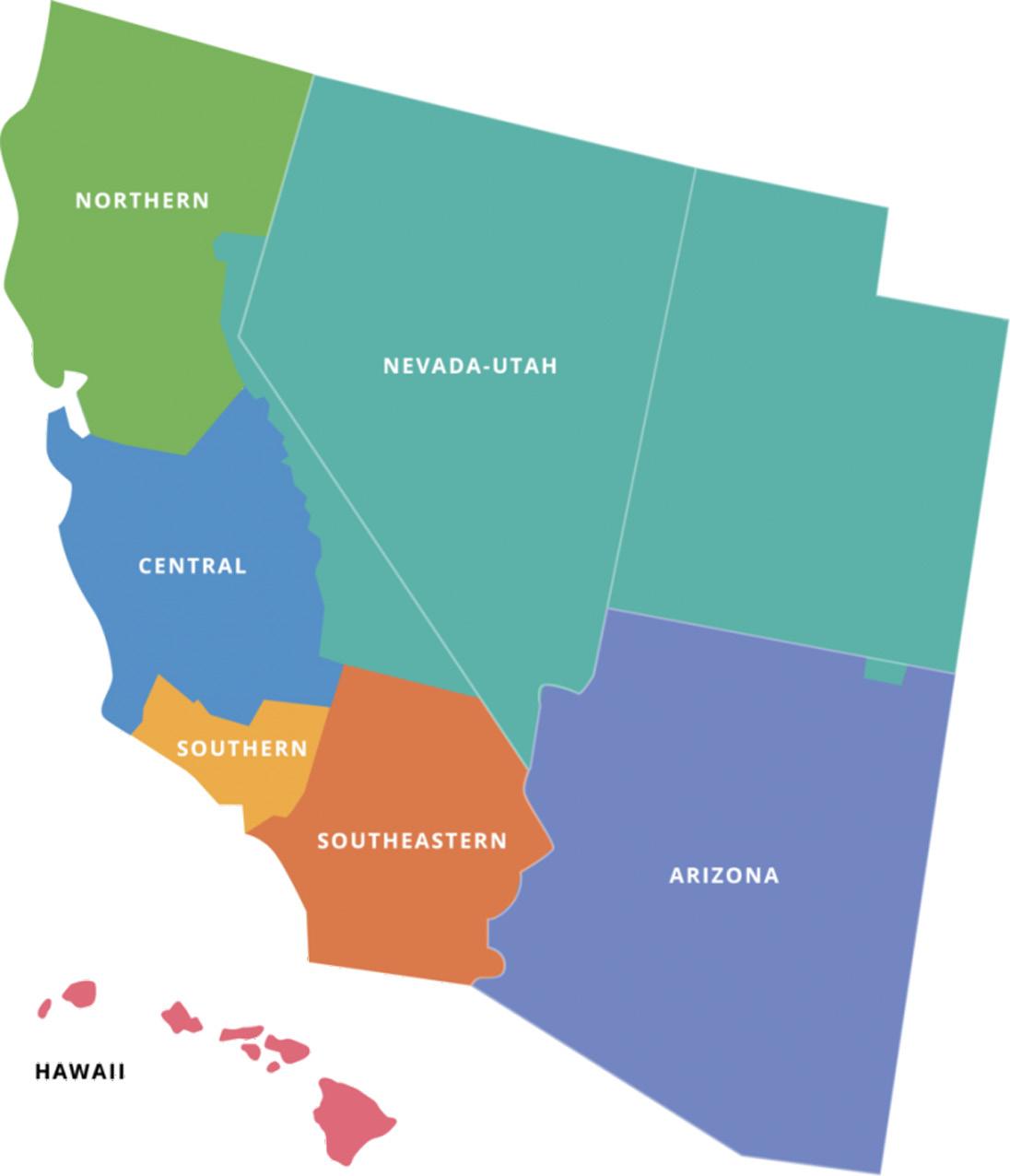
KNOW YOUR REGIONAL CONFERENCES, KNOW YOUR
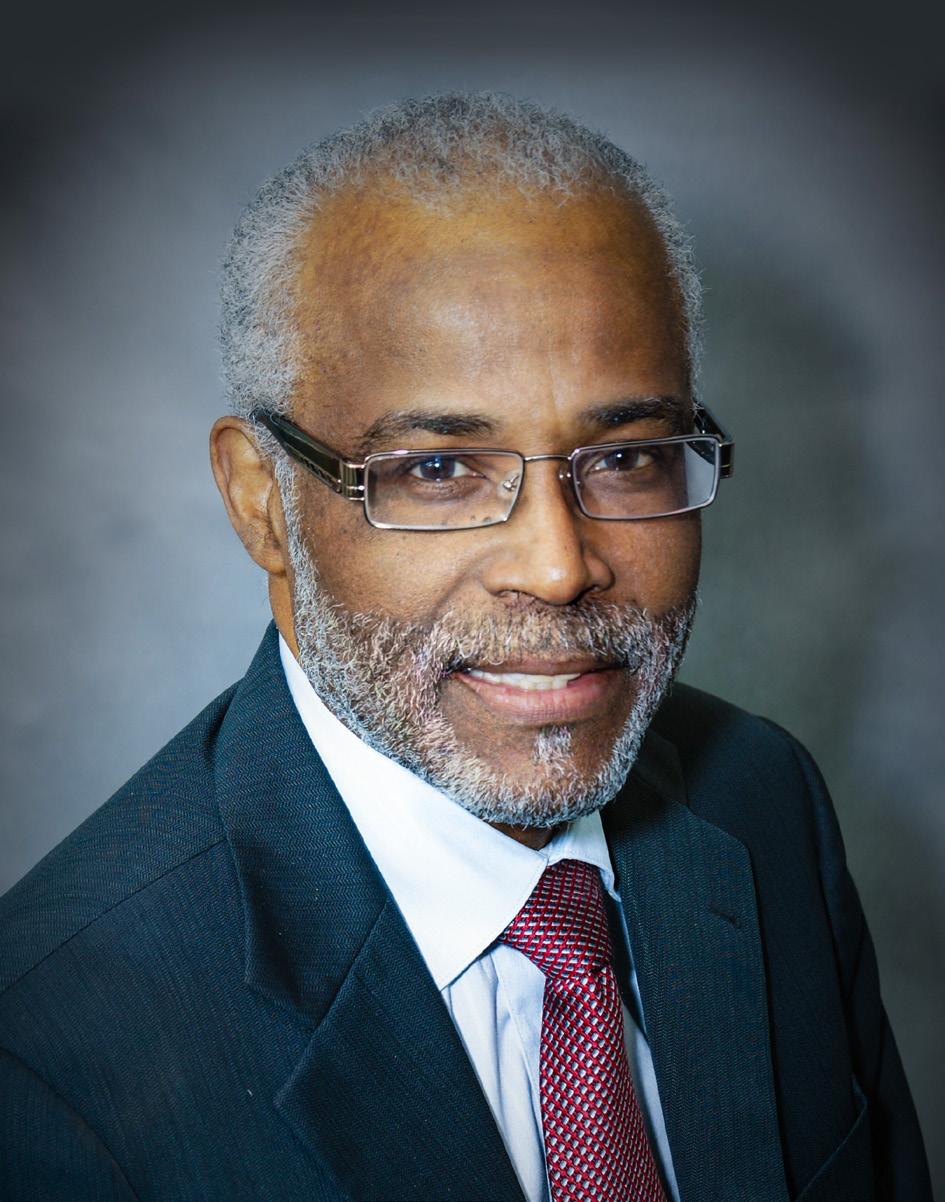


The North Pacific Union Conference
Organized 1906
Territory Alaska, Idaho, Montana, Oregon, and Washington State
Headquarters Ridgefield, Washington
Membership
Approximately 103,000, including 14 black churches, with a membership of approximately 3,000
2023 Tithe:
Approximately $116 million
Regional Tithe: approximately $2 million
Vice President for Regional Ministries
Elder Byron Dulan (He is retiring, but his position has not been filled yet. The information which follows relates to him).
Birthplace Oakland, California
Years as Vice President Six Previous Position Outreach Director, Washington Conference
Years in Ministry 52
Married to the Former:
Linda Boykin of Oklahoma City, Oklahoma
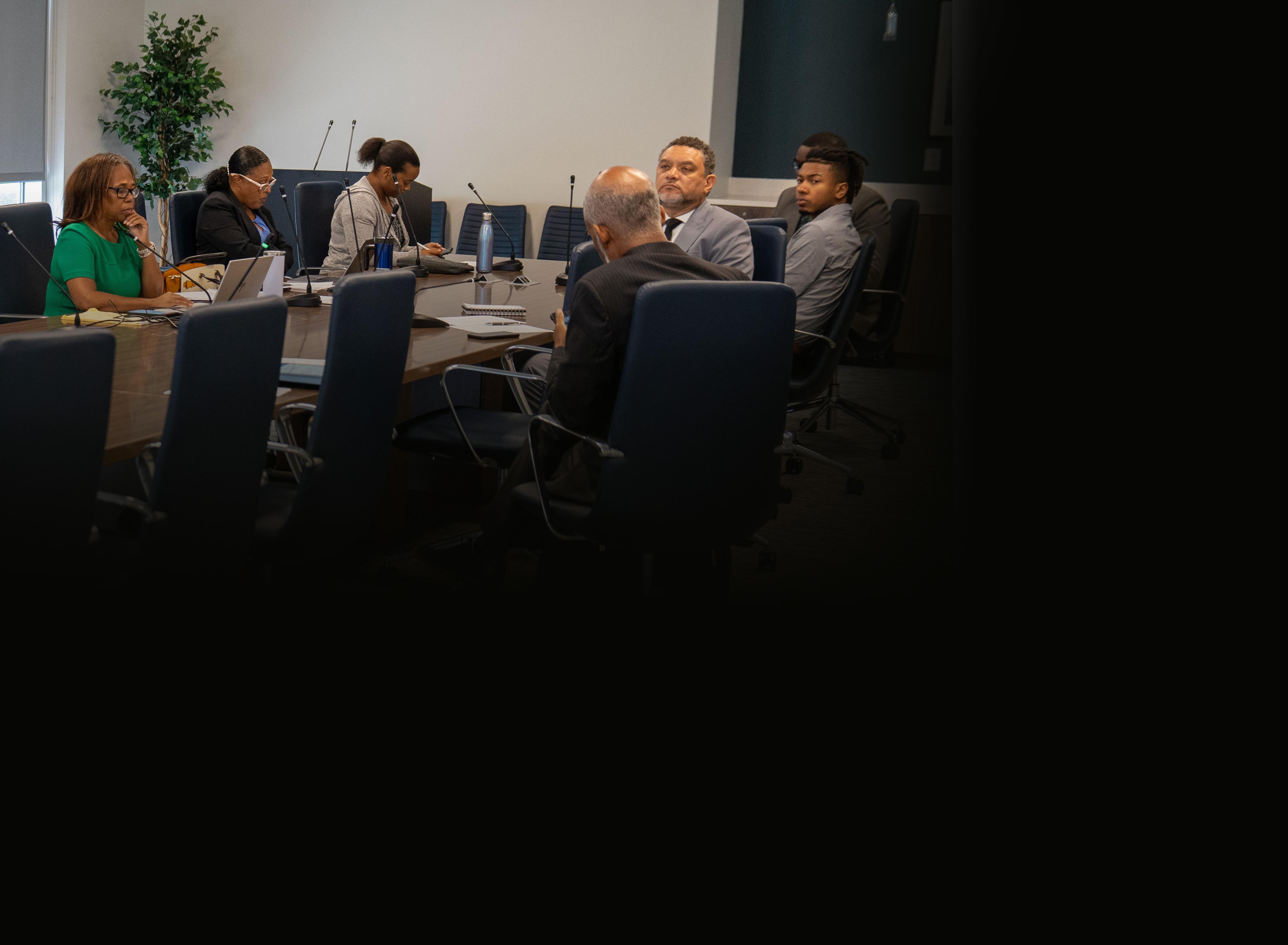
TBy GERSON PANCORBO
This summer, the Office for Regional Conference Ministries (ORCM) sponsored five paid internships during July and August 2024, providing a unique opportunity for young leaders to gain hands-on experience in various departments across different conferences.
The interns included:
• Ganathaliery (Gully) Belizaire at Allegheny West Conference
• Melaina Goodridge in Communications at ORCM and RCRP
• Jaden Hinds at South Central Conference
• Dominik Middleton at Central States Conference
• Isaiah Price in Treasury at ORCM and RCRP
One of the central themes expressed by all the interns was the invaluable professional experience they gained. Melaina Goodridge, who worked in commu-
nications, said that she “gained invaluable insights into working in a professional environment, particularly in the role of a communications director, and appreciated the effort behind every post and video created while connecting with amazing people.”
This sentiment was echoed by Dominik Middleton, who interned at Central States Conference and reflected, “I got an insight into how the financial process works within the conference; I gained a lot of skills.”
The experience of contributing to significant projects was another highlight for the interns. Ganathaliery (Gully) Belizaire, who focused on youth ministries at Allegheny West Conference, was particularly involved in the International Pathfinder Camporee.
“I was mainly helping out with youth ministries at Allegheny West, and this summer, we were mainly
ONE OF THE CENTRAL THEMES EXPRESSED BY ALL THE INTERNS WAS THE INVALUABLE PROFESSIONAL EXPERIENCE THEY GAINED.

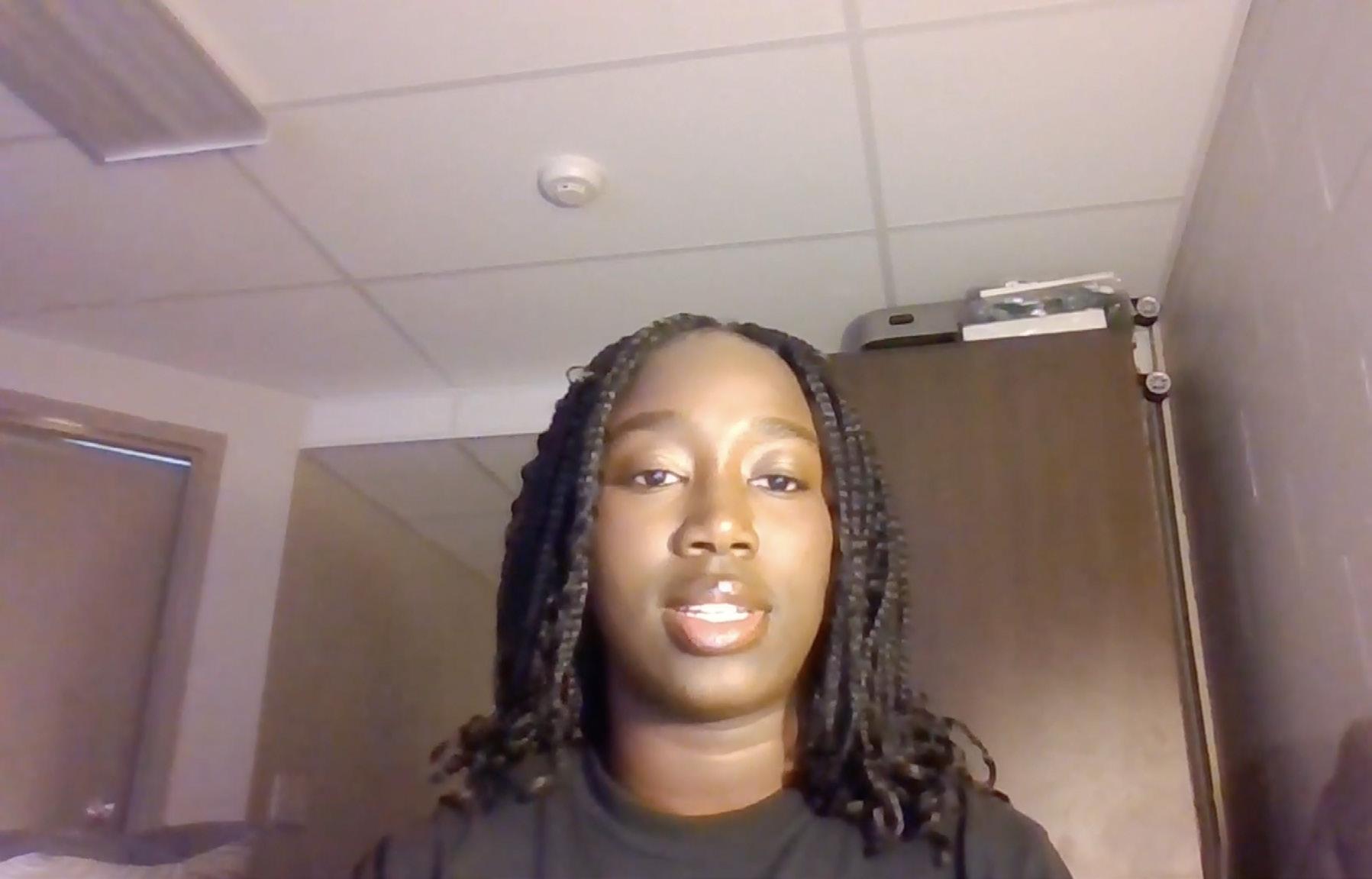
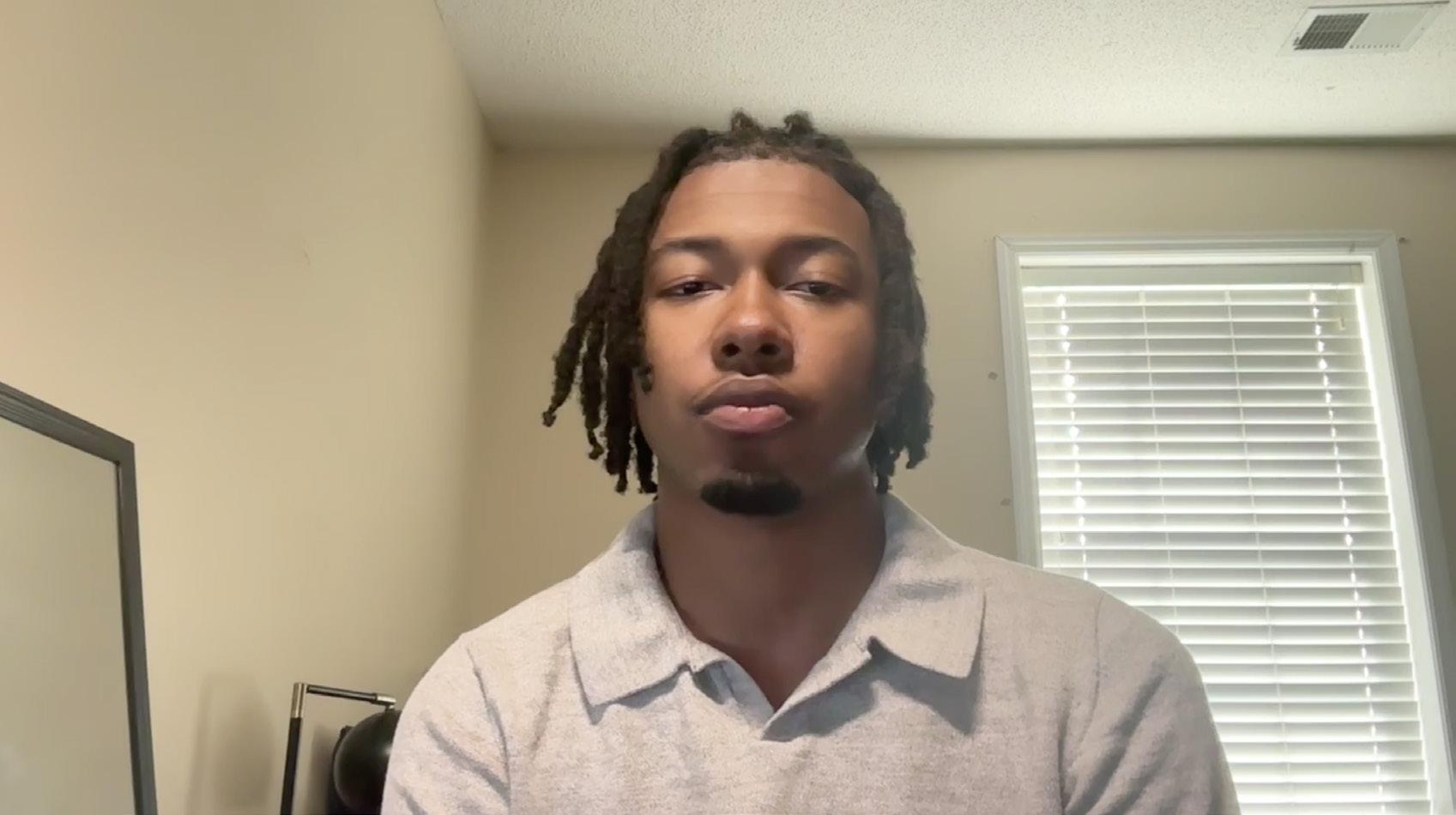
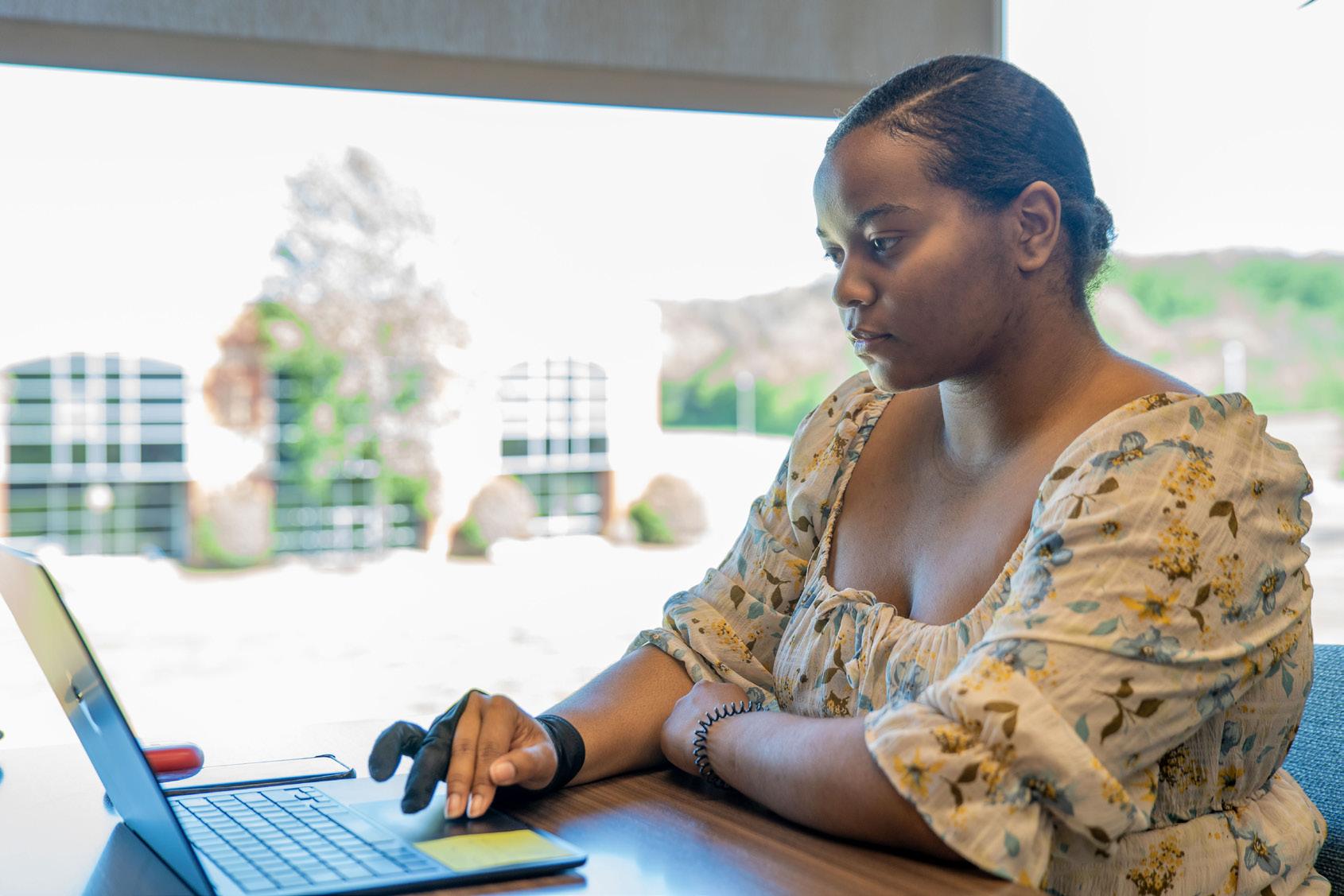
focused on the International Pathfinder Camporee, which was our biggest project throughout the whole summer,” he said. Belizaire also remarked, “It was incredible to see everything come together after weeks of planning. Knowing that I played a part in making it happen was such a rewarding experience.”
In addition to the professional skills gained, the internships also provided the participants with deeper spiritual insights. Middleton expressed how this experience strengthened his faith: “I’m doing this for the Lord, so it really touched my heart working this internship these past two months. I do feel like my relationship with God increased.”
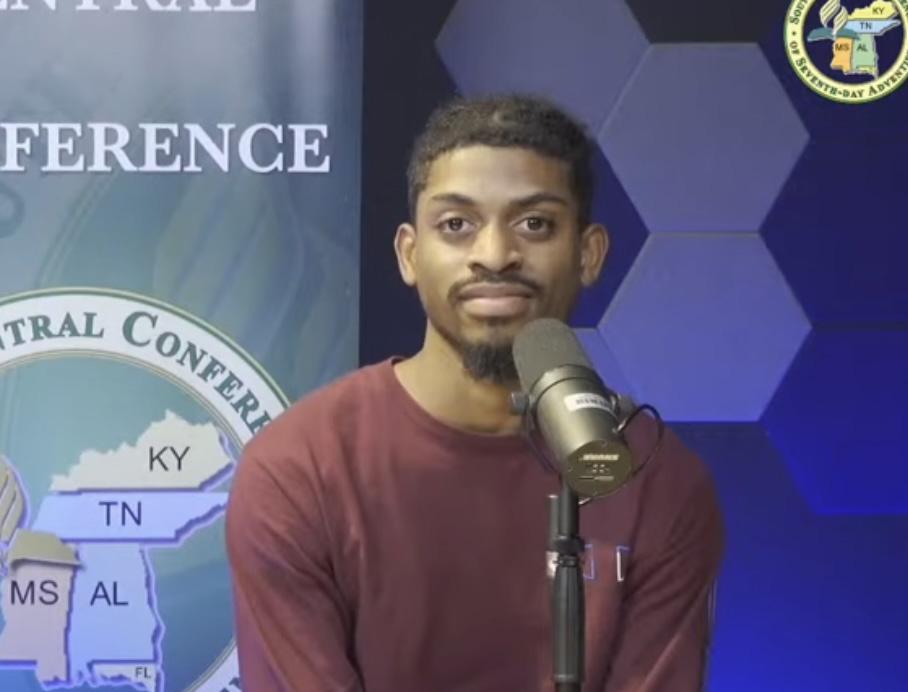
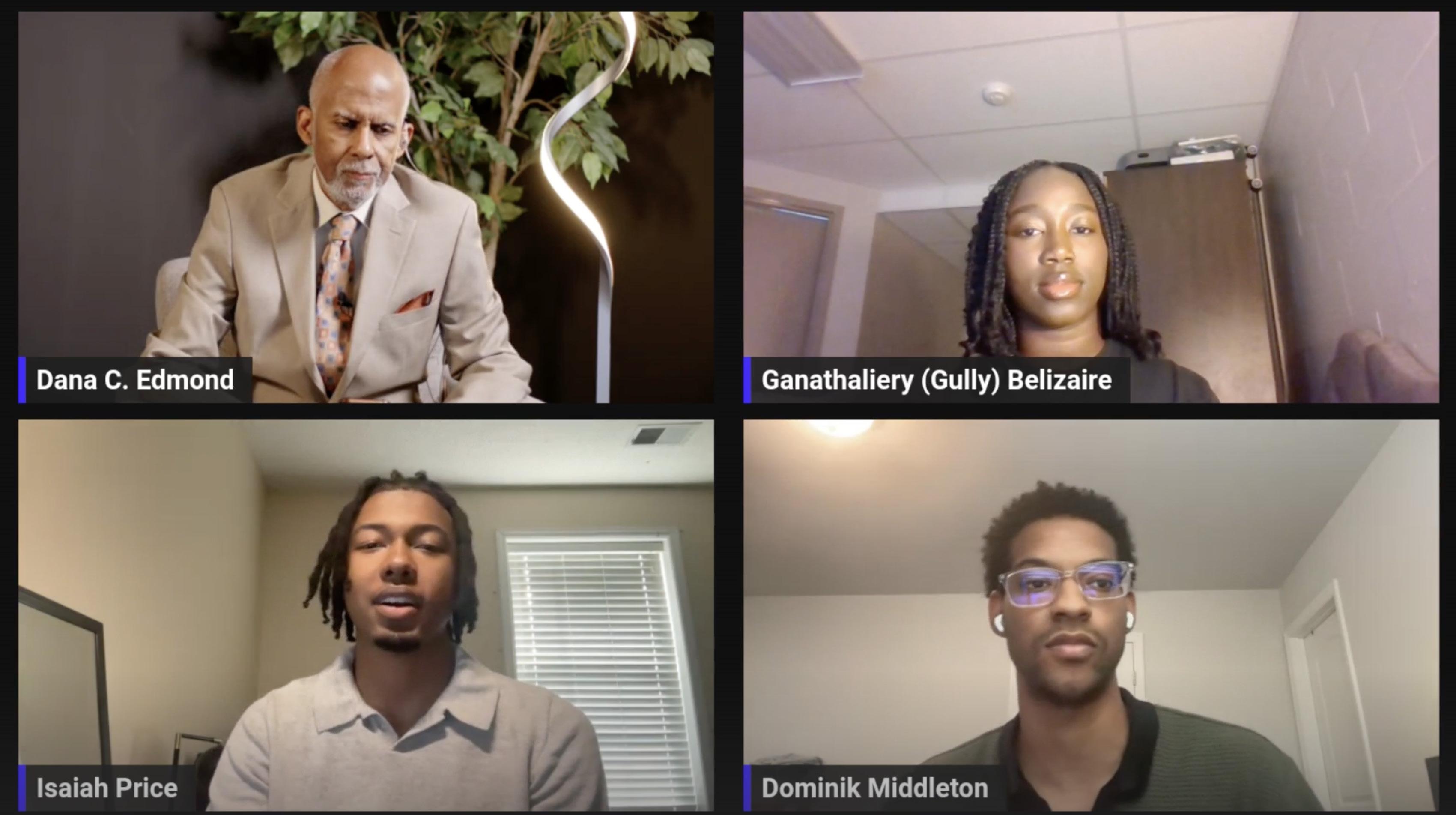
commitment to their faith and their desire to contribute to the church’s mission. As Belizaire appropriately put it, “I’m excited to be a part of that generation that can help the church grow even further.”
The Office for Regional Conference Ministries is proud to have provided these opportunities and looks forward to continuing to nurture the next generation of church leaders. t
The interns also reflected on the importance of relationships and community within the church. Belizaire highlighted this, stating, “I would say that there are two main things that I learned. The first would be that small details matter. And I would say the second thing, that relationships matter. I think the main reason why anybody
should be doing anything for God is because you truly care about the people that you are working for and with.”
He also praised the conference’s supportive environment, saying, “I really loved my experience in Allegheny West Conference. The culture is truly unlike any other. Everyone working inside of the conference ended up feeling like family.”
This summer’s internships not only equipped the participants with professional skills but also deepened their
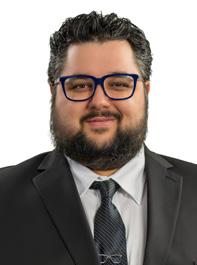
Gerson Pancorbo is the Communications Director for the Office for Regional Conference Ministries and the Regional Conference Retirement Plan. He conducted a series of interviews with the ORCM 2024 Interns to complete this report.

By DANA C. EDMOND

USome of the major players behind the Capitol Hill Counseling and Resource Center are Marion Broussard, director of counseling and lead counselor for the Capitol Hill Resource Center, also an urban center of influence; Karen Hayes, program director, Capitol Hill Resource Center; Pastor Emil Peeler, senior pastor, Capitol Hill Church; and Tanya Taylor, program director, Capitol Hill Church.
Upon his arrival as senior pastor of the Washington, D.C., Capitol Hill SDA Church in 2016, Dr. Emile Peeler wondered how this church could become more relevant in the community. He wondered “How can we do evangelism in ways that are relevant?”
There are certain traditional steps that black churches have taken to reach their communities, particularly when those churches are in lower income neighborhoods.
Increasingly, however, Regional churches are found in either middle class areas or the neighborhoods
have become gentrified, rendering the traditional outreach of food pantries and clothing giveaways not as effective in those areas.
In the Capitol Hill Church neighborhood, the U.S Capitol building is part of the neighborhood. Members of Congress and other government officials live in the vicinity. Homes priced at $1-2 million are commonplace. Giving away used clothing to someone living in a $2 million house was not likely to be an attraction.
Dr. Peeler and the congregation circulated surveys
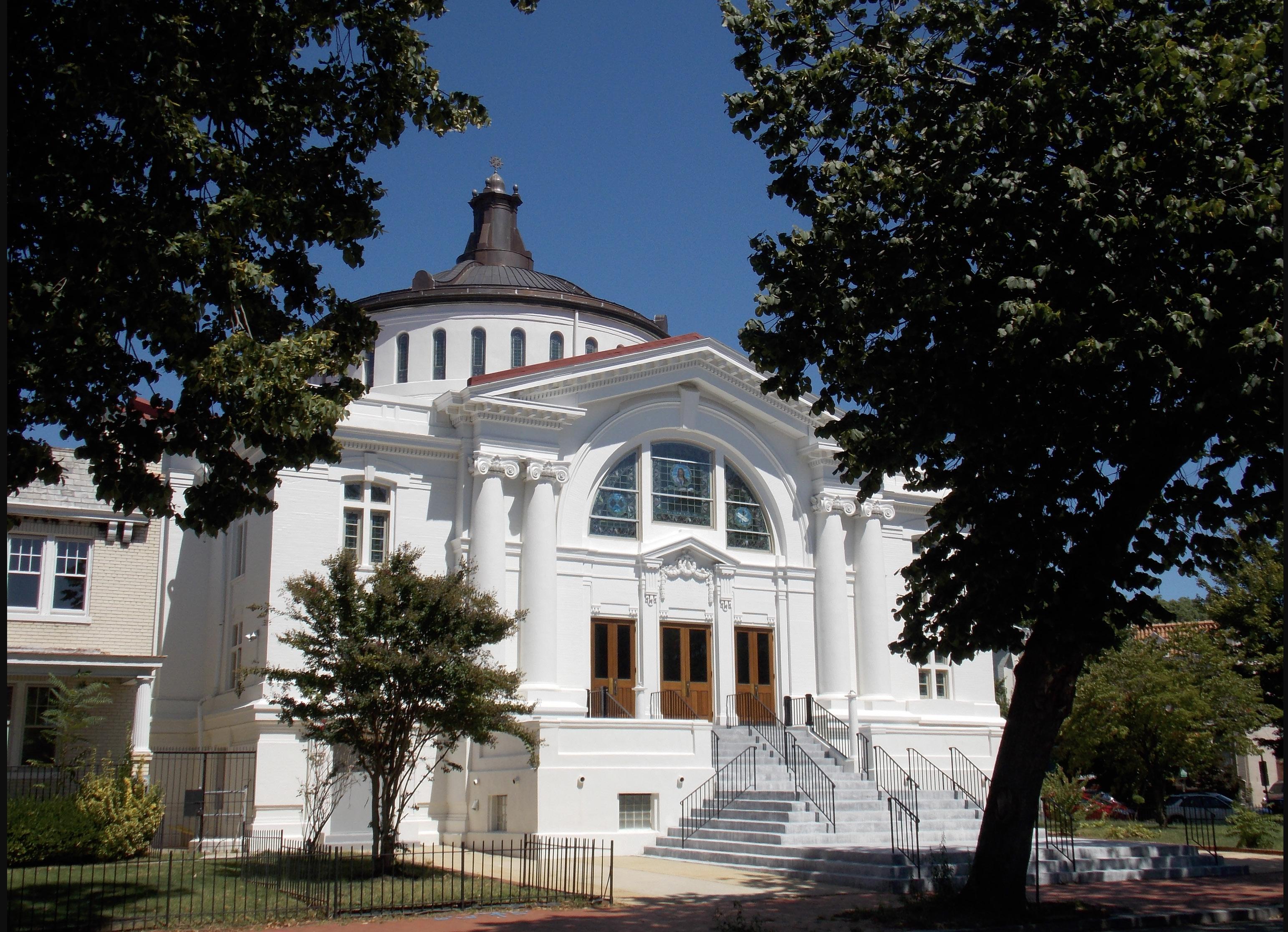
in their neighborhood to find what the community had to say about their needs. The results told them of the community’s need to address mental health issues.
An ad hoc committee was formed. They recommended the opening of a counseling center. The church agreed and approved a budget of $1.85 million, a considerable investment even for a church that is fifth in returning tithe among 1,200 churches in Regional Conferences.
Good news: a building became available right across the street from the church. Bad news: the building’s owners would not move from their $2.5 million asking price. Not news: God is still in control!
One day, after a prayer meeting, the person who would end up becoming the center’s health coach, nutritionist Ms. Anelise Autunes, “happened” to spill some salad she had prepared for Dr. and Mrs. Peeler on the steps of the church.
She “happened” (there is no happenstance with God!) to look up and see someone moving into the Airbnb that
tRECOGNIZING THEIR IMPACT IN THE CITY, THE WASHINGTON CITY PAPER VOTED CAPITOL HILL SDA CHURCH AS “THE BEST HOUSE OF WORSHIP.”
was a part of the property. Ms. Autunes went across the street to investigate. It was the owner of the property. She went back to get Dr. Peeler.
A meeting was arranged and, in a few days, Capitol Hill purchased the property for $1.9 million.
Since that time, 2,000 counseling sessions have been given at the center. Cooking classes have been offered online that attract clients from literally around the world. The center has also received a grant from the General Conference as a center of influence.
Recognizing their impact in the city, the Washington City Paper voted Capitol Hill SDA Church as “the best house of worship.”
This award highlights a strong witness for our church and a strong testimony for a different type of evangelism based at Capitol Hill. t
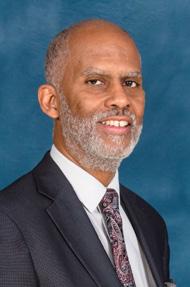
Dana C. Edmond, Director of the Office for Regional Conference Ministry, (ORCM), and publisher of Regional Voice magazine , produced this original report.
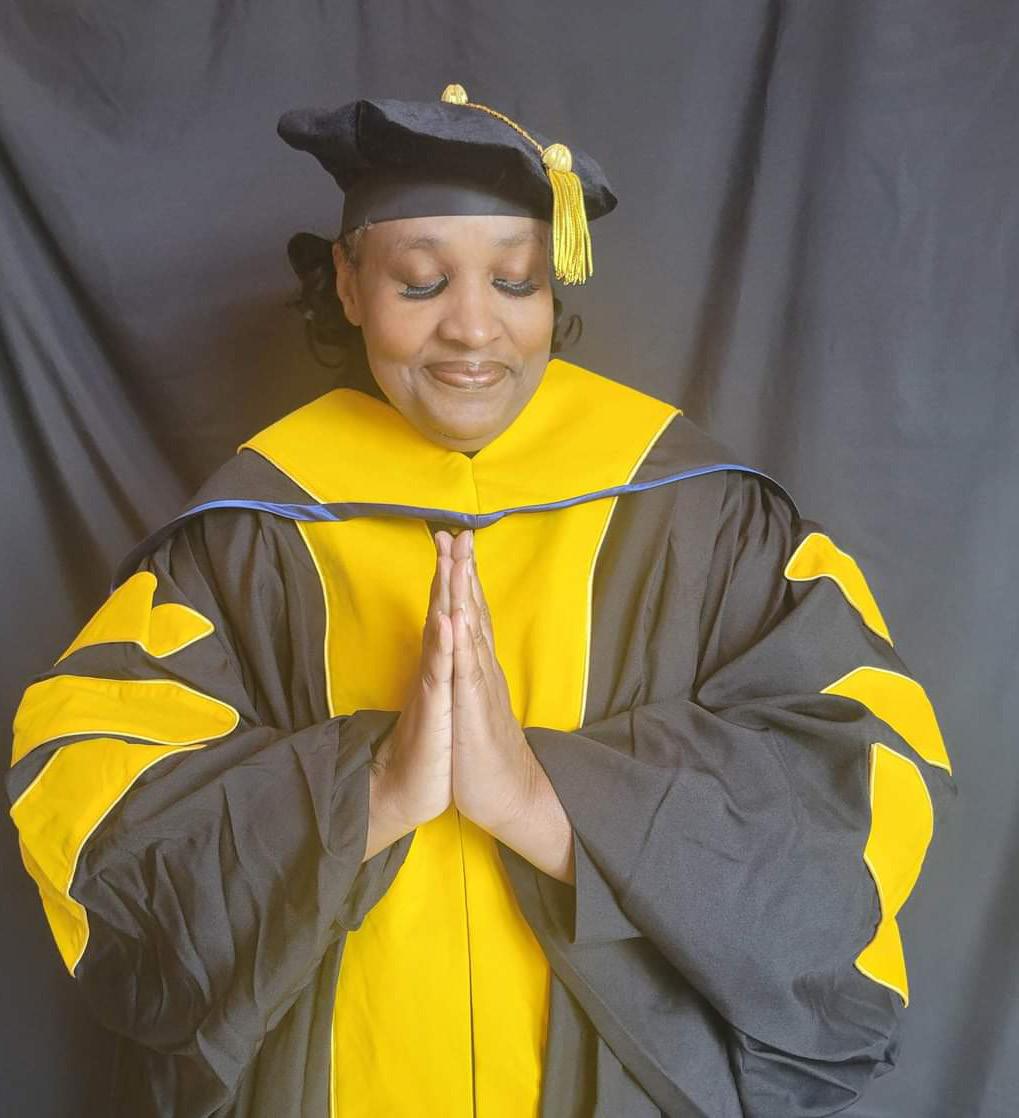
By K YNA HINSON
What possible motivation was there to take up this pursuit of a terminal degree in the first place? Lisa Hinson says she “took interest in these studies” before she retired in 2021. Most of her career had been based in Information Technology (IT), software, voice (telephony) and data networking.
During more than three decades of work in these areas, Lisa earned a master of science in technology management, then a second master’s degree in networking and voice/communications. So, what appeal did earning another degree hold?
Simply put, her work piqued her interest when she realized there were also doctoral studies in the field. She actually began a program before her retirement, but it lost appeal. “It was not a good fit!”
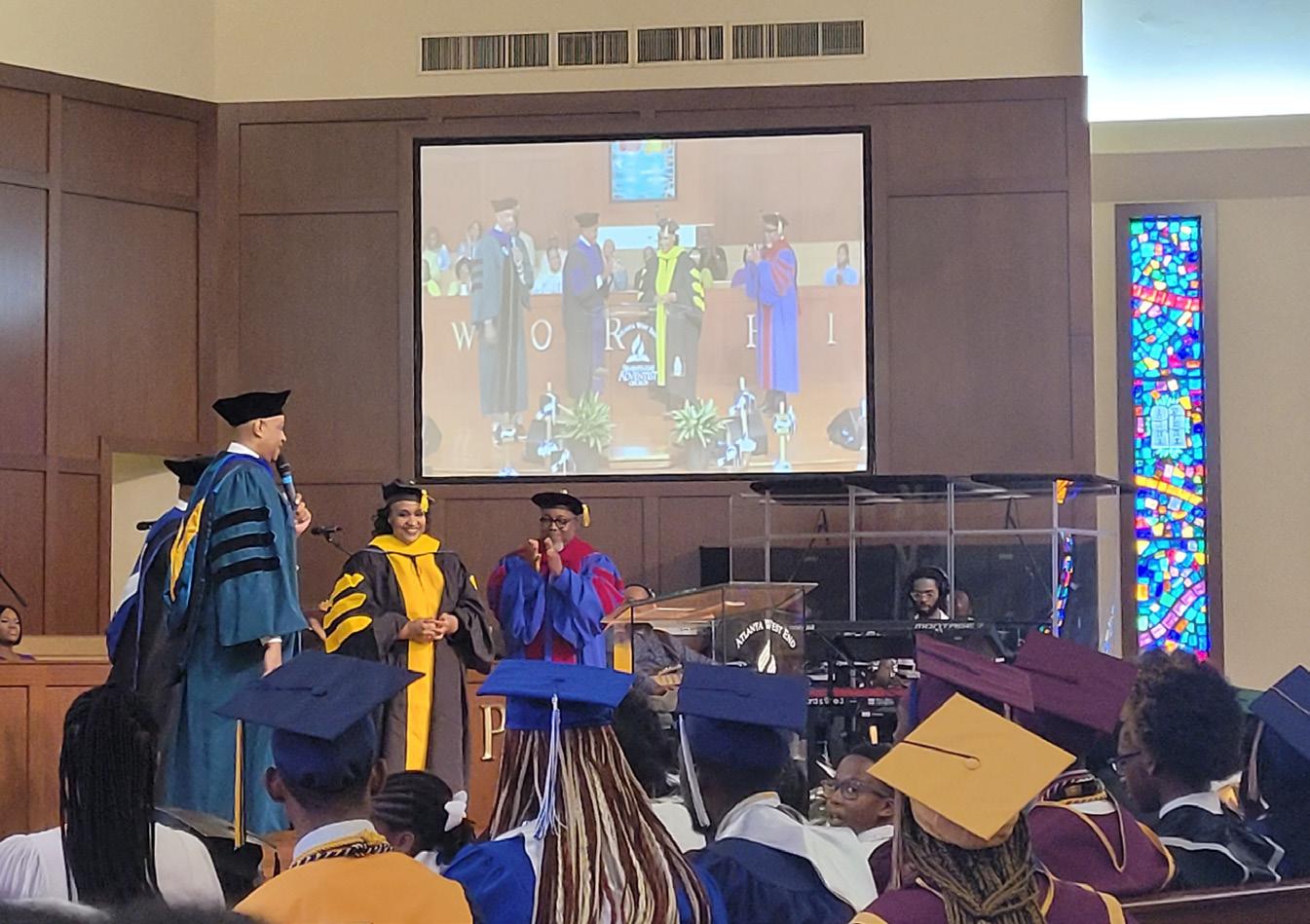
After retirement, however, she was “consistently on the lookout” for just the right program. At one time she even considered “getting a Ph.D. in her undergrad field of study, Consumer Affairs.” That degree was a Bachelor of Science from Andrews University.
Her searches eventually led her to “Google Telecommunications Ph.D.”
“I found a program at Wharton University, Alfred Nobel School of Business, based in Switzerland.”
“All of the courses were online, and the program required one year of continuous, intensive study.”
The program’s entire focus was to guide each student to complete a dissertation from original research. Lisa chose the topic, “Mobile and Digital Communications in Non-profit Organizations.”
Specifically, she studied private schools, churches, non-profit retail organizations, and NGOs (non-government organizations).
Lisa’s interviewees included Dr. Fineé Downing, owner, Empowering Women while Lending a Helping Hand (EWELH); Dr. Karen Gray, Director of Communications and Print Media, West End SDA Church, and Kennedy Mogu, Director of Digital Marketing, CARE, Nairobi, Kenya.
These interviews focused specifically on the use of mobile and digital communications tools and methods used in each organization for success. The experts also revealed an innovative spirit necessary to overcome the “digital divide” that would otherwise limit or prohibit their access to the technological components needed for their operations.
The courses at Alfred Nobel covered a wide array of media and digital communications topics focusing on international business, cyber security and social media management.
Over decades, Lisa’s career included call center management, software support, project management, and technology functional management. Peachtree Software (now Sage Software), Ceridian (now Dayforce), and Fidelity Information Services (FIS) all recruited and employed her.
Lisa’s final years before retirement came at the height of the COVID pandemic. The responsibilities, (especially networking), placed her on the front lines of demanding, essential work, making her a first responder for clients in corporations that spanned the globe. t
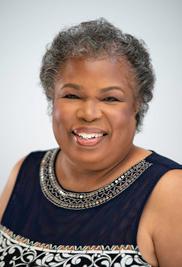
Kyna Hinson, Editor of Regional Voice magazine, greatly appreciated this interview, granted by Dr. Lisa Hinson, her sister. For further information on this course of study or on bridging the digital divide, you may reach her at lisaehinson@yahoo.com
TBy DELBERT W. BAKER
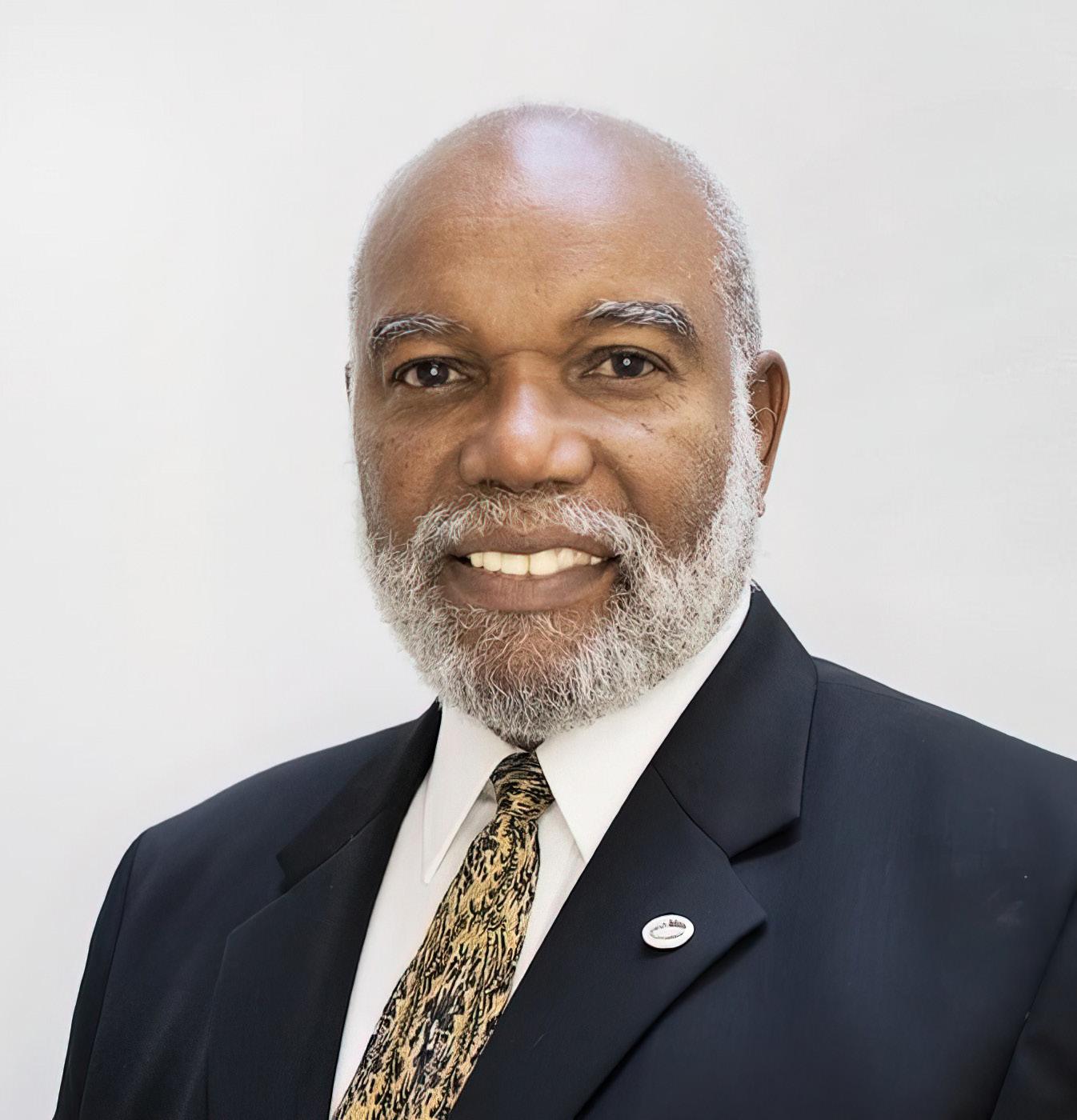
The Regional Conference Retirement Plan has initiated this special four-part series for the R egional Voice magazine, covering four vital dimensions of retirement. It is designed for retirees and those contemplating or preparing for retirement. The four-part series covers 1) Financial Literacy, 2) Health and Wellness, 3) Spiritual Growth, and 4) Continuous Learning.
Part Two of Four
Interview with Lifestyle Medicine and Public Health Physician Dr. Zeno L. Charles-Marcel, MD, Health Ministries Director, General Conference of Seventh-day Adventists
Dr. Charles Marcel, a seasoned physician and newly appointed Director of Health Ministries for the General Conference, is renowned for his expertise in lifestyle medicine and public health. In this Regional Voice exclusive, he shares valuable insights on how retirees and pre-retirees can maintain their health, prevent chronic diseases, and lead fulfilling lives. His practical advice serves as a guide for anyone seeking to optimize their health during retirement and beyond.
Baker: Congratulations on your recent appointment as the Director of Health Ministries with the General Conference of Seventh-day Adventists.
Dr. Marcel: Thank you. It is indeed an honor, though I must say, it comes with its challenges. But I’m excited
about the work and the opportunities it presents.
Baker: For our retirees and pre-retirees, what do you see as the most common health challenges?
Dr. Marcel: One of the most significant challenges is the prevalence of chronic diseases, such as diabetes, hypertension, coronary artery disease, and arthritis. Many of these conditions develop or worsen as people age, often due to lifestyle factors. The key to mitigating these issues is proactive planning before retirement.
Baker: What are proactive steps that retirees, pre-retirees, or any person for that matter, can take to mitigate these challenges?
Dr. Marcel: Here’s what I recommend:
1. Pre-Retirement Planning: Don’t wait until retirement to start thinking about your health. Begin planning early by adopting healthier habits—focus on a balanced diet, regular exercise, and mental well-being. In retirement financial planning and health planning are equally important.
2. Dietary Adjustments: Transition to a plant-based diet, which has been shown to reduce the risk of chronic diseases. Reduce processed foods, and focus on whole
DIET PLAYS A CRUCIAL ROLE— SWITCHING TO A PLANT-BASED DIET, INCREASING PHYSICAL ACTIVITY, AND GETTING ENOUGH SLEEP CAN MAKE A SIGNIFICANT DIFFERENCE.
foods like fruits, vegetables, whole grains, and nuts. Consider minimizing sugar intake, which is crucial in preventing and managing diabetes and heart disease.
3. Regular Physical Activity: Incorporate at least 30 minutes of moderate exercise into your daily routine. This doesn’t mean you need to train for a marathon. Simple activities like brisk walking, swimming, or cycling can make a significant difference. Regular exercise helps maintain a healthy weight, reduces blood pressure, and improves mental health.
4. Mental Health and Social Connections: Loneliness and social isolation are significant issues for retirees, often leading to depression and anxiety. Stay socially active by engaging in community activities, joining clubs, or volunteering. Maintaining strong social connections can help ward off mental health issues and keep your mind sharp.

Baker: You mentioned earlier that diabetes and high blood pressure are particularly prevalent in the African American community. Why is that, and what can be done about it?
Dr. Marcel: These conditions are more common among African Americans due to a combination of ge-
netic predisposition and lifestyle factors. Unfortunately, they are often diagnosed later than they should be, which complicates management. However, with the right lifestyle changes, many of these conditions can be prevented or even reversed.
But not every case is reversible, but many are, especial-

ly if caught early. Diet plays a crucial role—switching to a plant-based diet, increasing physical activity, and getting enough sleep can make a significant difference. One of the best ways to cut medical costs is to stay healthy! But one has to prioritize and work at it; make it fun while you’re doing it. I like to emphasize “D and E”—Diet and Exercise—as a formula for life, not just survival.
Here’s what can be done:
1. Early Detection and Regular Check-ups: Get regular check-ups to monitor blood pressure, blood sugar levels, and cholesterol. Early detection is crucial for managing these conditions before they become severe.
2. Diet and Exercise: As I mentioned earlier, diet and exercise are foundational. For those already diagnosed with diabetes or hypertension, it’s essential to follow a treatment plan that includes dietary changes and regular physical activity.
3. Education and Awareness: Educate yourself about the resources available for managing and potentially reversing these conditions. Many people aren’t aware that
with the right lifestyle changes, they can significantly improve their health.
Baker: You’ve emphasized the importance of diet and exercise. Can you elaborate on the types of diets and exercises that are most beneficial?
Dr. Marcel: Certainly. A whole-food, plant-based diet is one of the most effective ways to prevent and manage chronic diseases. This diet includes:
1. Fruits and Vegetables: Aim to make half your plate fruits and vegetables. They are rich in essential vitamins, minerals, and fiber, and they help reduce inflammation in the body.
2 . Whole Grains: Replace refined grains with whole grains like brown rice, quinoa, and oats. These grains provide more nutrients and fiber, which help regulate blood sugar and improve digestion.
3. Healthy Fats: Include sources of healthy fats, such as avocados, nuts, seeds, and olive oil. These fats are important for heart health and can help reduce bad cholesterol levels.
4. Lean Proteins: Focus on plant-based proteins like
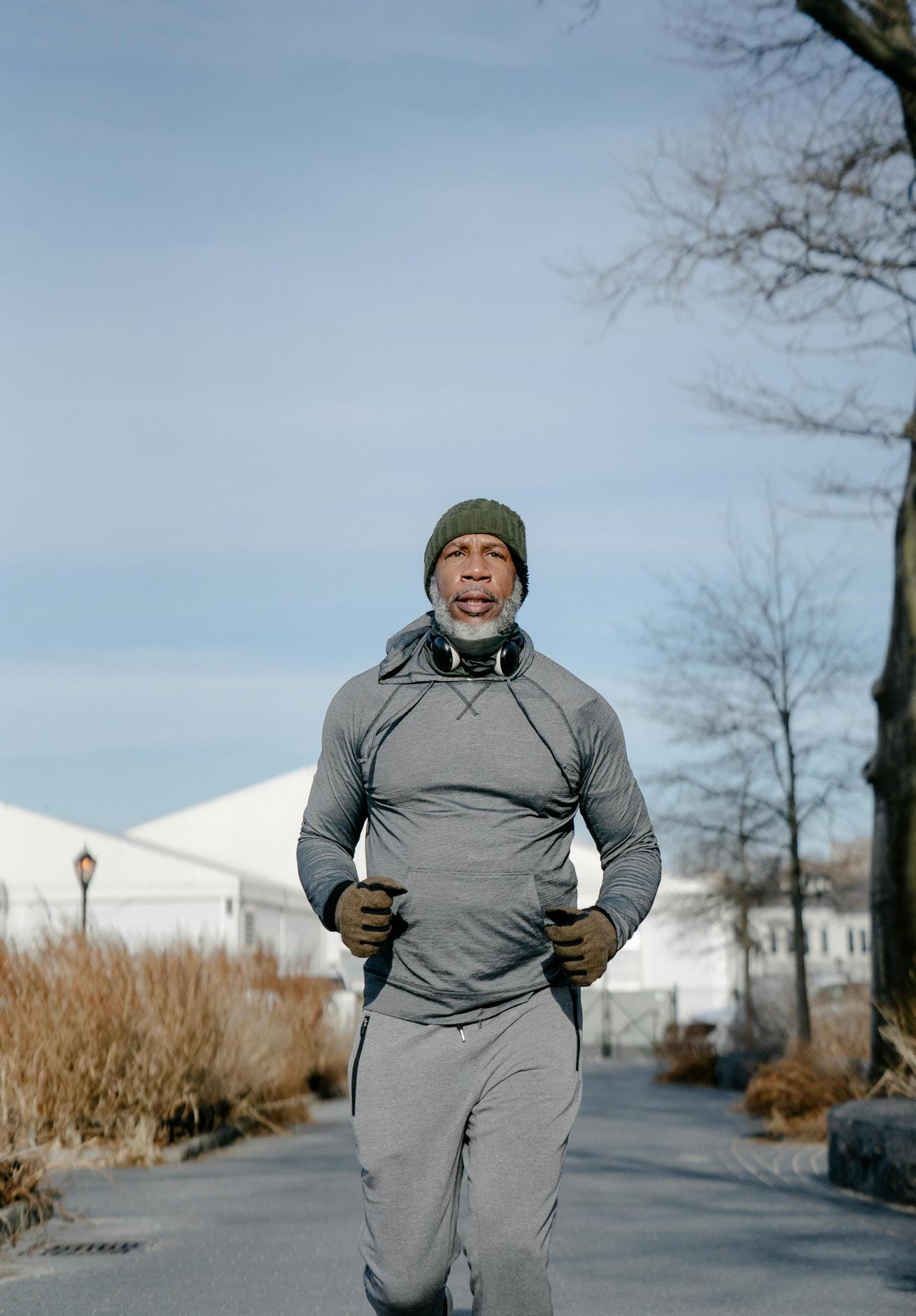
beans, lentils, and tofu. These provide essential nutrients without the saturated fats found in animal products.
Baker: Elaborate a bit more about the value of exercise?
Dr. Marcel: Sure. Exercise is paramount. It’s important to incorporate a mix of cardiovascular, strength training, and flexibility exercises. Here’s how to start:
1. Cardiovascular Exercise: Activities like walking, jogging, swimming, or cycling improve heart health and endurance. Aim for at least 150 minutes of moderate-intensity cardio per week.
2. Strength Training: Include resistance exercises like weight-lifting or body-weight exercises (e.g., squats, pushups) two to three times a week. Strength training helps maintain muscle mass, which is important for metabolism and overall mobility.
3. Flexibility and Balance: Yoga, Pilates, and stretch-

ing exercises enhance flexibility and balance, reducing the risk of falls, which is crucial as we age.
Baker: You’ve discussed physical health and wellness. What about mental health? How can retirees maintain cognitive function and emotional well-being?
Dr. Marcel: Mental health is just as important as physical health, especially as we age. Here are some basic but very effective strategies: 1. Stay Socially Connected: Regular social interaction is key to maintaining mental health. Join clubs, volunteer, or participate in group activities to stay engaged with others.
2. Mental Stimulation: Keep your mind active by reading, solving puzzles, or learning new skills. Continuing education, whether through formal classes or self-study, can also help keep your mind sharp.
3. Practice Mindfulness and Stress Management: Techniques like meditation, deep breathing, and yoga can help manage stress, which is often linked to mental health issues like anxiety and depression.
4. Sleep: Ensure you’re getting enough restful sleep. Sleep is crucial for brain health, as it helps consolidate memories and clear out toxins from the brain. Aim for 7-8 hours of quality sleep each night.
Baker: As we conclude, what advice would you offer to retirees about finding purpose and maintaining productivity during their retirement years?
Dr. Marcel: Again, these recommendations may seem
basic but they are crucial, unavoidable if we want to experience health and wellness. Finding purpose is crucial in retirement. Without a sense of purpose, it’s easy to feel lost or unproductive. Here are some suggestions:
1. Volunteer Work: Engage in volunteer work that aligns with your passions. Whether it’s mentoring younger generations, helping at a lo -
cal charity, or participating in community projects, volunteering provides a sense of fulfillment and keeps you active.
2. Hobbies and Interests: Pursue hobbies that you may not have had time for during your working years. Whether it’s gardening, knitting, writing, or photography, these activities can bring joy and a sense of accomplishment.
Chronic Conditions: Nearly 80% of retirees have at least one chronic health condition, and 68% have two or more. Common conditions include arthritis, diabetes, hypertension, and heart disease.
Physical Activity: According to the CDC, only about 35 to 44% of adults aged 65-74 are physically active, and this drops to 28-35% for those aged 75 and older, despite the significant health benefits of regular exercise.
Obesity: Approximately 40% of people aged 65 and older are considered obese, which can lead to various health complications, including diabetes, heart disease, and mobility issues.
Preventive Care: Despite the importance of preventive care, only about 50% of older adults receive all recommended preventive services, such as vaccinations and screenings for cancers and other conditions.
Lifestyle Habits: “Pure air, sunlight, abstemiousness, rest, exercise, proper diet, the use of water, trust in divine power—these are the true remedies. Every person should have a knowledge of nature’s remedial agencies and how to apply them.”
Ellen White, Ministry of Healing, page 127.
Stay Active: Regular physical activity can improve mental health, increase energy levels, and reduce the risk of chronic diseases like heart disease and diabetes. Aim for at least 150 minutes of moderate exercise per week.
Sleep-Hydration Combination: Quality sleep is crucial for maintaining cognitive function and overall health. Aim for 6-8 hours of sleep per night. Then older adults are at a higher risk of dehydration, so it’s important to drink plenty of water throughout the day to maintain optimal health.
Social Connections: Staying socially active through church activities, clubs, volunteering, or regular meetups with family and friends can improve emotional well-being and reduce feelings of loneliness.
Bone Health: Weight-bearing exercises, like walking or light strength training, along with adequate calcium and vitamin D intake, are important for maintaining bone density and preventing osteoporosis.
Prevent Falls: Simple home modifications like removing tripping hazards and installing grab bars can significantly reduce the risk of falls, a common concern for older adults. Falls are the leading cause of injury among older adults, with one in four people aged 65 and older experiencing a fall each year. t
3. Legacy Building: Consider documenting your life experiences and wisdom for future generations. Writing memoirs, creating family photo albums, or recording personal stories can be a meaningful way to leave a legacy.
4. Spiritual Growth: For many, retirement is an opportunity to deepen their spiritual life. Spend time in prayer, meditation, or spiritual study and church activities. Staying connected with your faith can provide comfort and a sense of purpose.
Baker: Dr. Marcel, this was an enlightening conversation. Your advice is not only practical but also inspiring. I’m sure it will be of great value to our readers. Before we close, could you offer a word of prayer?
Dr. Marcel: “Certainly.”
“Father in heaven, We thank You for the gift of life and for the wisdom You provide to live it well. As we navigate through the different stages of life, help us to remain connected to You and to each other. May we live with purpose, peace, and hope, knowing that our lives are in Your hands. In Jesus’ name, we pray. Amen.”t
Interviewer’s Note: Dr. CharlesMarcel’s insights offer a comprehensive guide to living well and experiencing health and wellness during retirement. His emphasis on proactive health planning, mental and physical activity, and maintaining a sense of purpose provides a roadmap for retirees to lead fulfilling and productive lives.
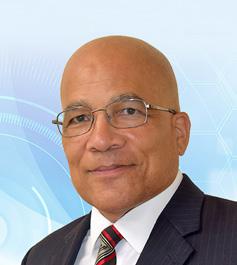
Delbert W. Baker, PhD, is an author, educator, administrator and pastor. He is Director of Research and Development at the Regional Conference Retirement Plan Office in the Charles Dudley, Sr. Regional Conference Ministries Center in Huntsville, Alabama.
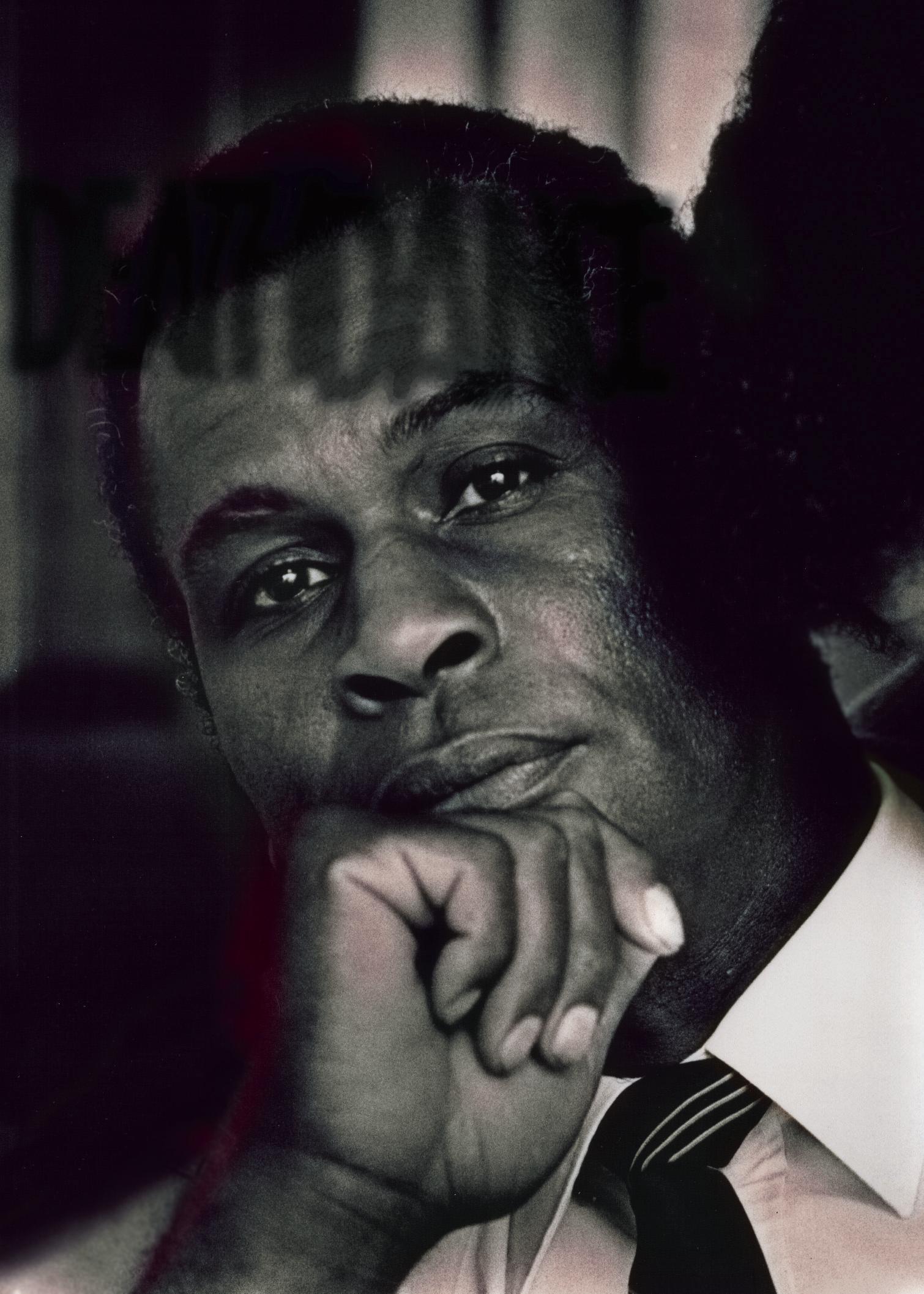
By DANA C. EDMOND
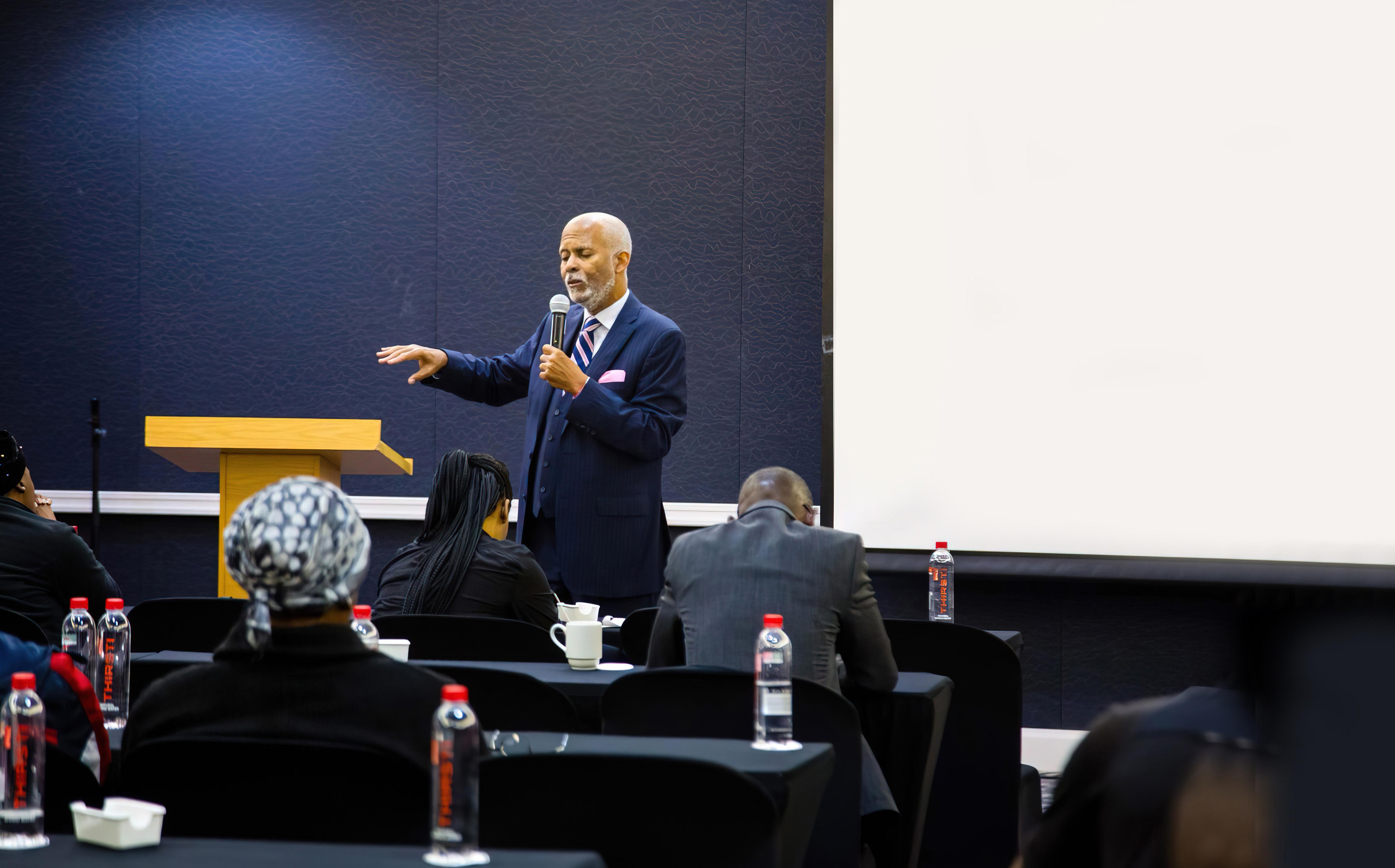
FFor the past five years, all the Regional Conferences, through the Office of Regional Conference Ministries (ORCM), have reached out to our brothers with whom we share a common origin. It began in 2019 with the “Trans-Atlantic Family Reunion I,” the Africa-African American Leaders Summit, on the campus of Adventist University of Africa (AUA). The leaders of the Regional Conferences met with the leaders of Africa.
Dr. Delbert Baker, former President of Oakwood University; later Vice President of the General Conference; then Vice Chancellor of AUA, facilitated this convergence of the two groups and hosted the meetings, along with Dr. Blascious Rugeri, President of the East Central African Division.
tFOR THE PAST FIVE YEARS, ALL THE REGIONAL CONFERENCES, THROUGH THE OFFICE OF REGIONAL CONFERENCE MINISTRIES (ORCM), HAVE REACHED OUT TO OUR BROTHERS WITH WHOM WE SHARE A COMMON ORIGIN.
Later that year, ORCM hosted a dinner with the General Conference Committee members from Africa during Fall Council. Trans-Atlantic Family Reunion-II was scheduled for the Ivory Coast in April 2020, but the COVID 19 pandemic forced its cancellation.
Meanwhile, a similar connection was forged with the Inter-American Division (IAD), ORCM, and the Regional Conference Presidents Council in April of 2023. This historic summit among those three entities convened at the IAD offices in Miami, Florida. South Atlantic Conference General Vice President, Dr. Everton Ennis, a native of the IAD, was pivotal in facilitating those meetings. They led to a collaboration in evangelism in the IAD. Some 20-30 pastors and administrators from the Regional Conferences, ORCM and the North Pacific Union went to the IAD to conduct evangelistic campaigns in the spring, summer and fall of this year (a full report of the results of those meetings will appear in the Winter/PELC Edition of The Regional Voice).
There were two additional events this year that furthered the missions collaboration between the Regional Conferences and their brothers and sisters in Africa and the Caribbean.
On July 22-24, Elder Roger Bernard, President, Central States Conference and President of the Regional Presidents Council, was invited to preach and to conduct a seminar during the annual IAD Leadership Convention in Miami, Florida. This event brought church
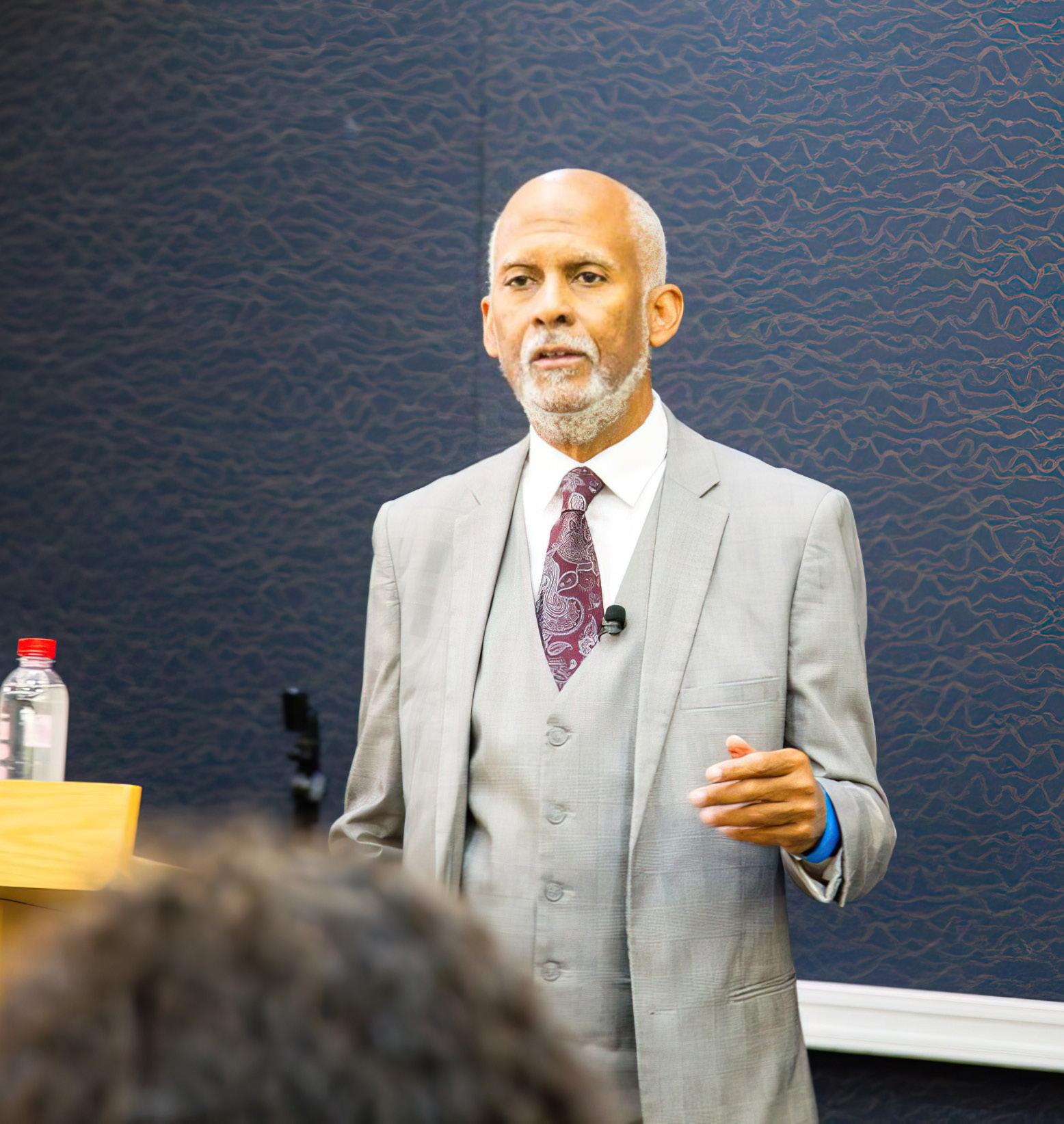
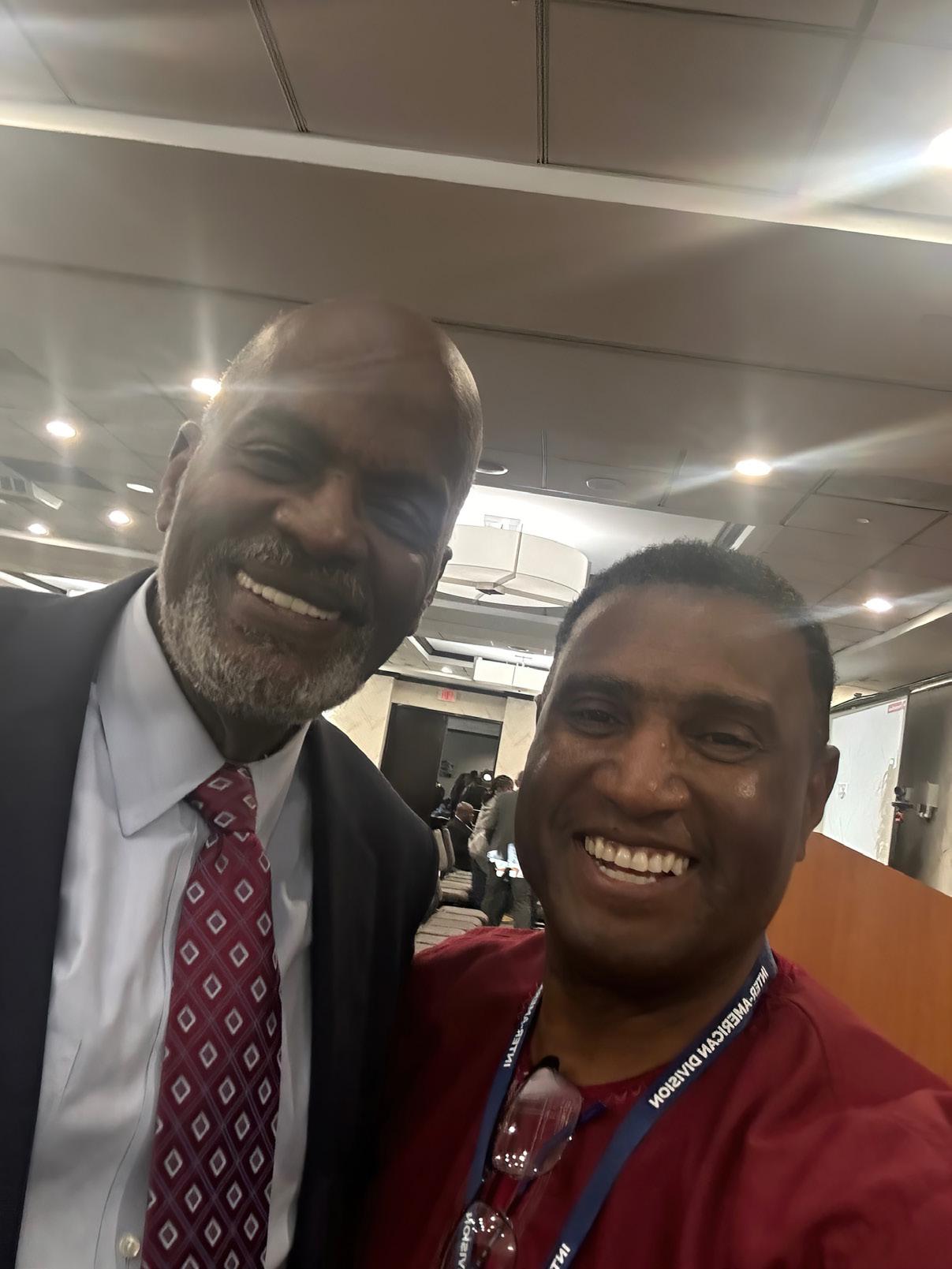
On the left is Dr. Elie Henry, President of the InterAmerican Division. On the right is President Roger Bernard, Central States Conference.
administrators on the conference, union, college, and university levels, together with laypersons from across the countries of the Inter-American Division.
In addition to being one of the featured speakers at the leadership convention, President Bernard presented a seminar to church elders titled, “The Elder as an Organizational Leader.”
Meanwhile, 8,000 miles to the south, in Durban, South Africa, three pastors from the Regional Conferences, were preaching and providing seminars at PELC South Africa. Southeastern Conference pastor, Elder Lester Parkinson, who formerly pastored in South Africa, returned to preach. Retired pastor, Dr. Herman Davis, and ORCM Executive Director, Elder Dana C. Edmond, completed this group.
PELC South Africa is an outgrowth of the Regional Conferences’ outreach to Africa. On the trip to Kenya, Elder and Mrs. Edmond stopped in South Africa and were introduced by Elder Parkinson to Dr. Paul Shongwe, then the President of the Trans-Orange Conference.
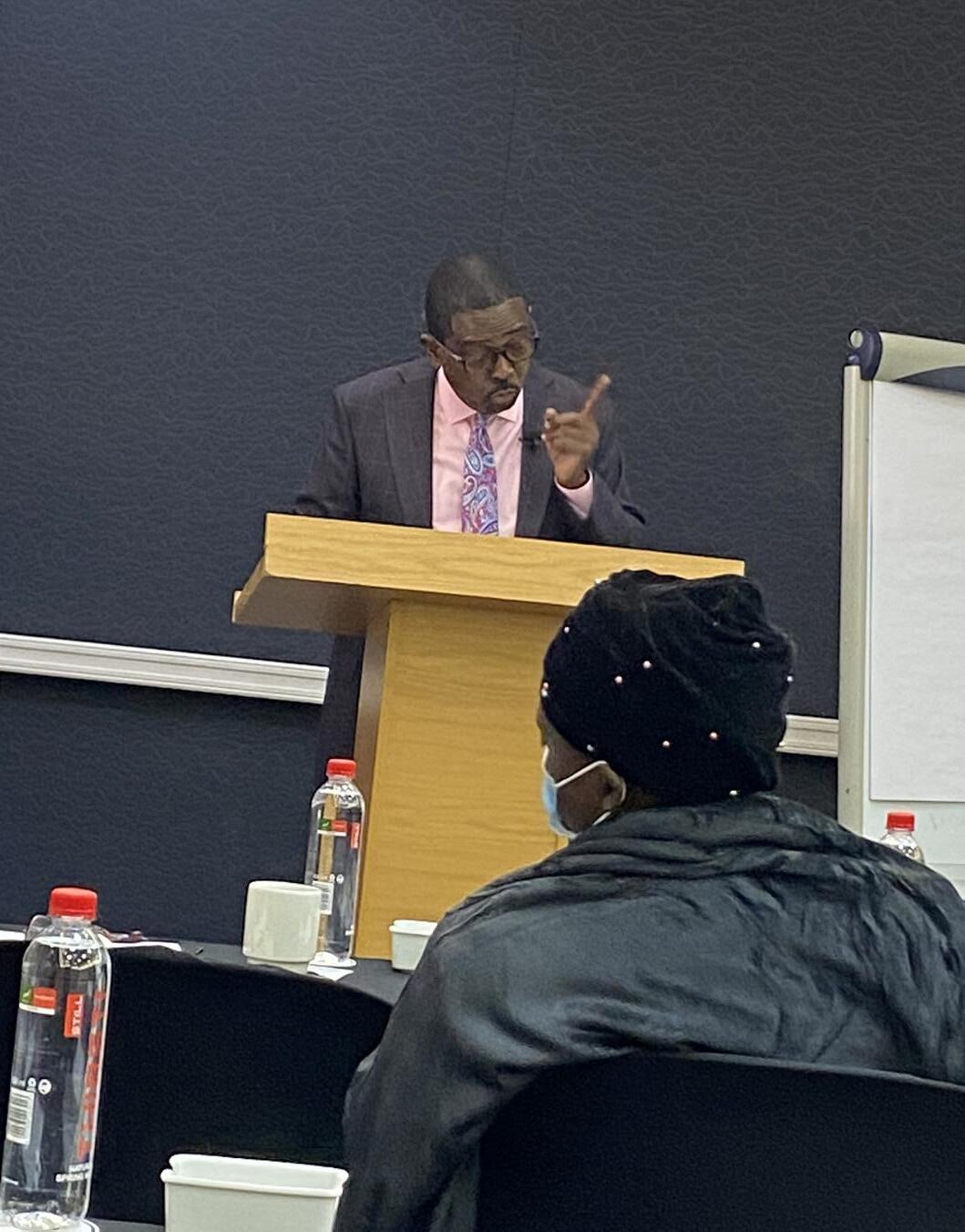
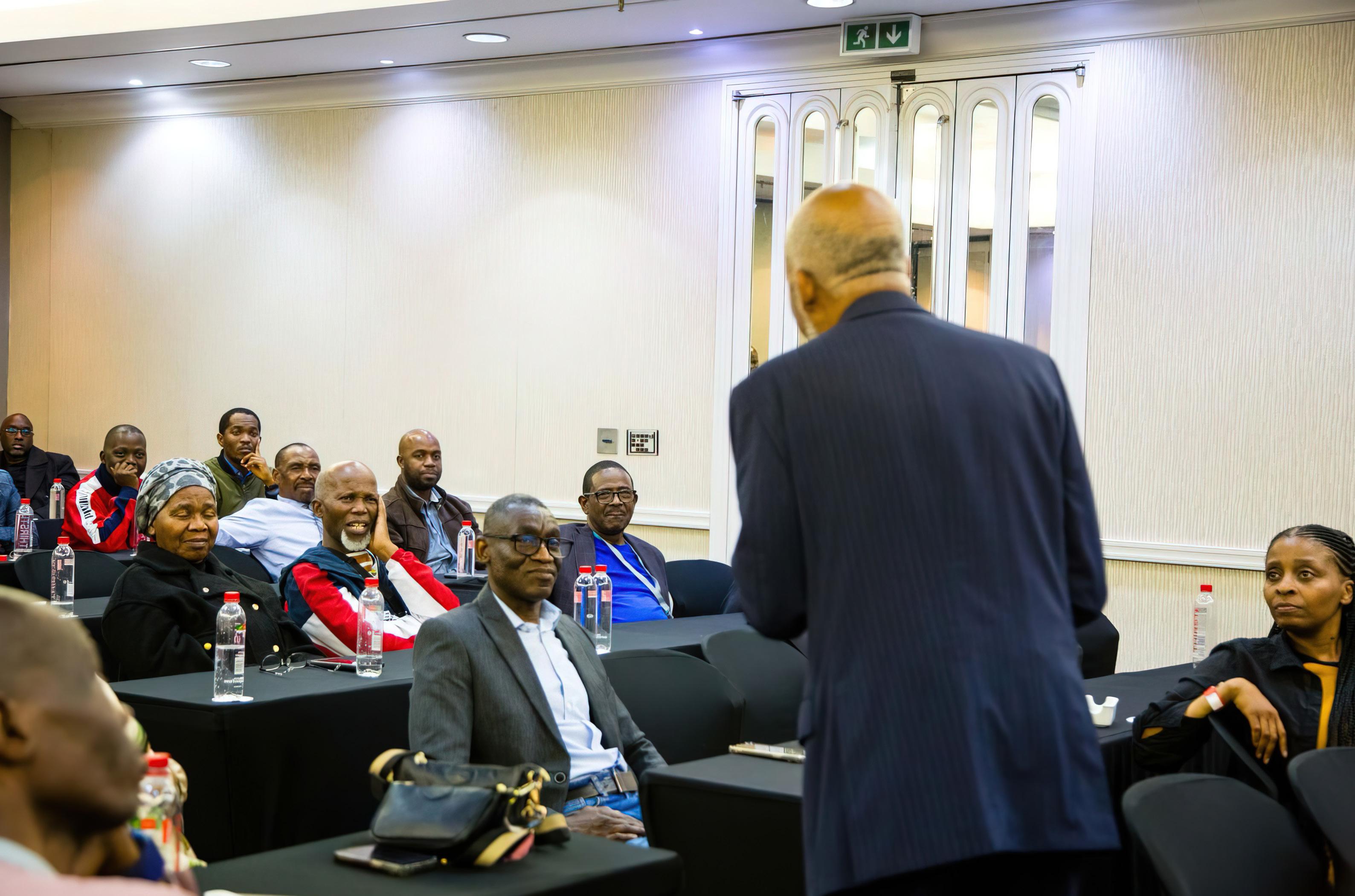
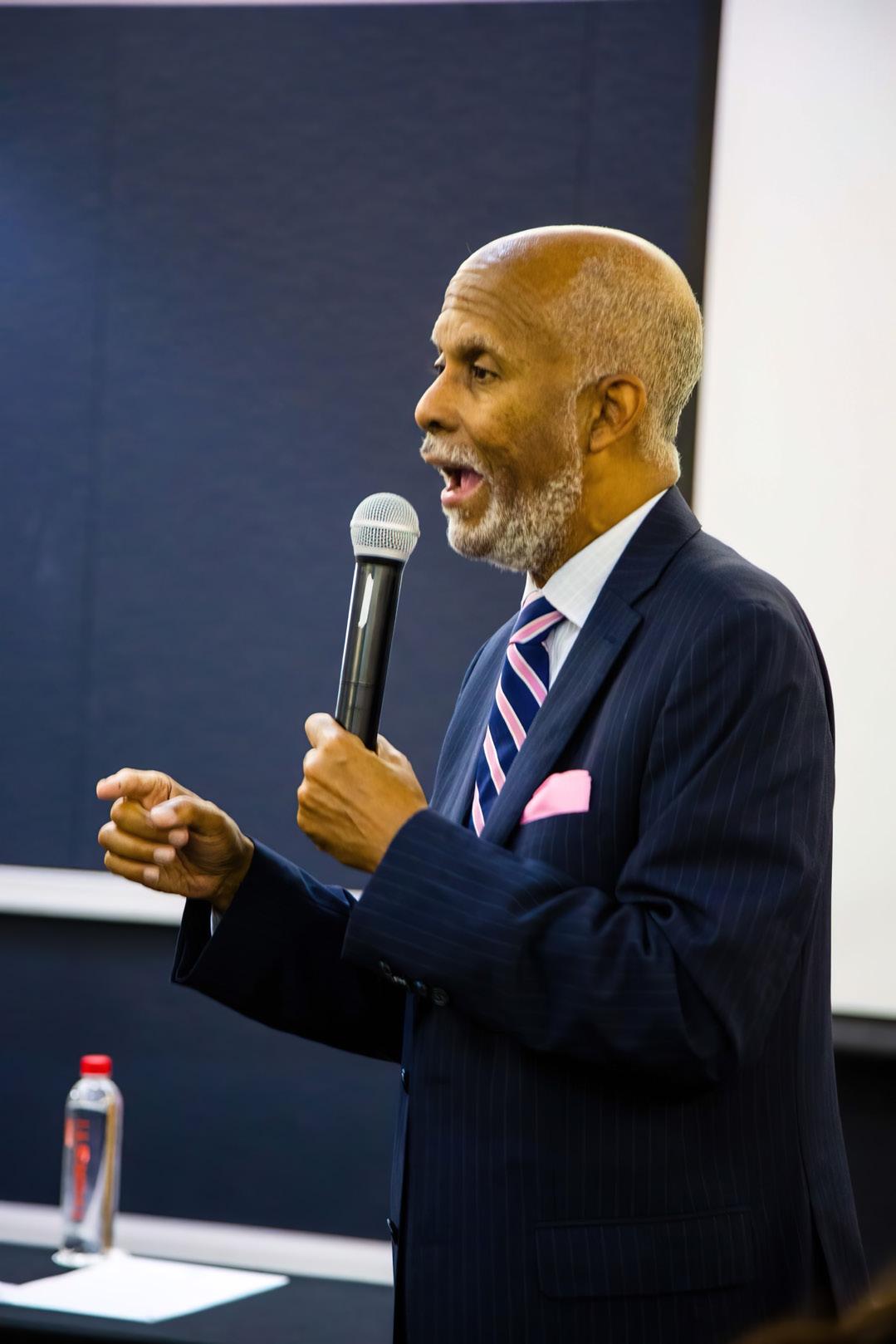
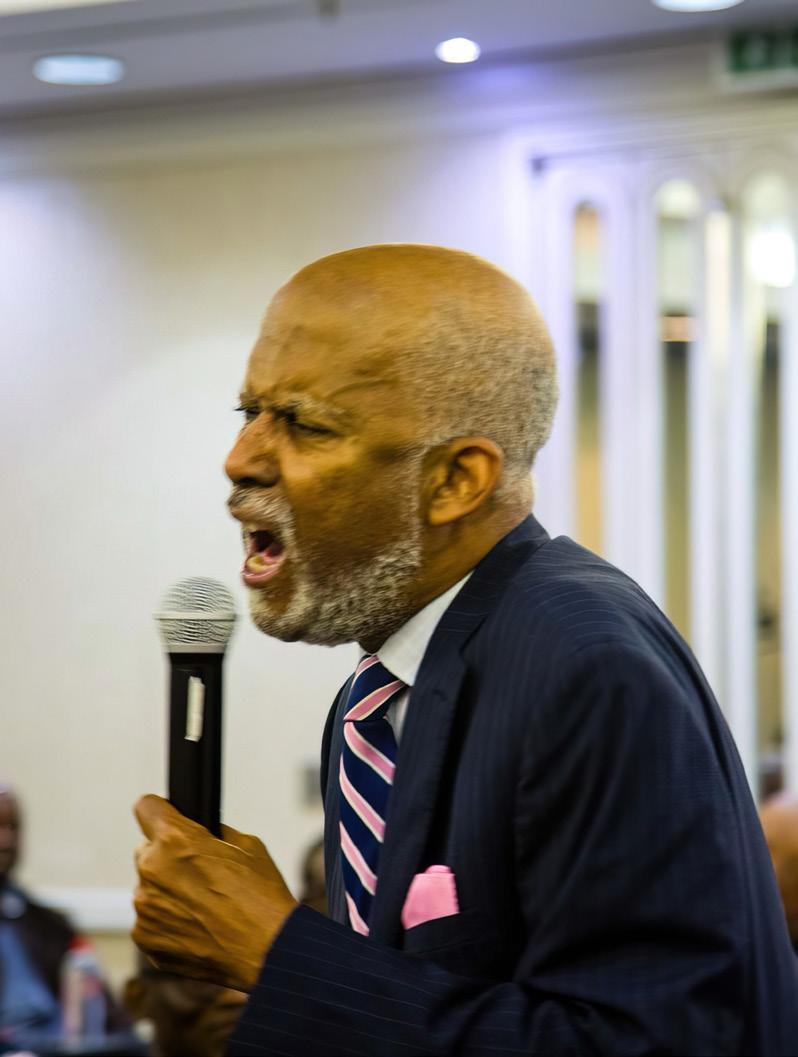
Dr. Shongwe expressed a desire to collaborate with a Regional Conference. Upon returning home, Elder Edmond arranged for a Zoom meeting including himself, President Benjamin Jones, Jr., South Central Conference; Dr. Shongwe; and the Trans-Orange administration. That began a missions collaboration between the two men and their respective entities, with the two presidents speaking at each other’s Camp Meetings. President Jones also conducted an evangelistic crusade in South Africa.
Dr. Shongwe also visited PELC at Oakwood University and expressed the desire for a similar program in South Africa to director Dr. Jesse Wilson. When Dr. Shongwe was asked to serve as President of the South African Union, he instituted PELC South Africa with the assistance of Dr. Wilson and Oakwood University in 2023.
It is hoped that the missions collaboration and the congeniality that has been shared among trans-Atlantic brothers and sisters will continue into the future and bear fruit to the glory of God. t
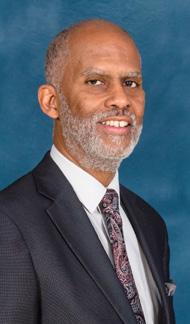
Dana C. Edmond, Director of the Office for Regional Conference Ministry, (ORCM), and publisher of Regional Voice magazine, produced this original report for our HOPE Series.


IF YOU HAVE FINISHED A FOUR-YEAR COLLEGE OR UNIVERSITY WITHIN ONE YEAR, OR IF YOU ARE IN YOUR LAST SEMESTER AT A FOUR-YEAR COLLEGE OR UNIVERSITY, YOU MAY QUALIFY FOR A SCHOLARSHIP TO APPLY TO AN AUTO PURCHASE FROM KIA MOTORS OF AMERICA. FOR MORE INFORMATION, VISIT YOUR LOCAL KIA DEALER.